
10 Best Sailboats For Circumnavigation

Circumnavigation means to successfully navigate around any sort of landmasses such as an island or continent. Whilst in yesteryear we would have relied on compasses, maps, stars and uncomfortable conditions, now sailboats are fitted with a vast array of equipment to help you circumnavigate anywhere you choose in a comfortable and timely manner.
It would seem reasonable to suggest that a small and lightweight boat wouldn't have the capability to circumnavigate effectively, but this is no longer the case. Due to the developments in the understanding of technology and materials over the last 20 years or so, mass produced boats are more than capable of surviving any conditions providing the crew are prepared properly. With the improvements in engineering especially, long gone are the days where slow, bulky, and claustrophobic cruisers were your only option. You can travel in style!
Ultimately, this article is going to answer the question: what are the best sailboats for circumnavigation? There are a few major things that you need to consider. Principle amongst them are the facilities on board the sailboat, the ease of use, how the deck and cabins are organized, the space available and finally the performance of the vessel overall. Take your time and think carefully about it.
Table of contents

10 Best Sailboats for Circumnavigation
1. jeanneau sun odyssey 54ds.
{{boat-info="/boats/jeanneau-sun-odyssey-54ds"}}
Starting off our list with one of the strongest contenders, the Jeanneau Sun Odyssey 54DS certainly ticks the luxury box. What's impressive is just how visually striking and spacious the 54DS is. It has big, swooping curves that give this sailboat a really distinctive shape. When this line of boat made its debut in 2003, the superstructure was considered to be one of the very best in the world and it still ranks highly today. Not only this, but the interior is designed to be luxurious and you have a surprising amount of space available in the cabin.
There's more to this boat than the looks though. The build quality on the whole is absolutely fantastic and it's quite powerful too. Many previous owners have attributed the high standard build quality, powerful performance and the excellent superstructure to the predictable and reliable performance. This is ideal for circumnavigation as you want a boat that is going to perform predictably and not throw you any major surprises!
A few other notable features on the 54DS are deep-draft keel and a standard in-mast furling mainsail. It also comes with an optional full battened main. All of these features are considered to be standard equipment for long distance cruisers.
All the high-quality features come at an expensive price. The price is certainly above average for a sailboat like this and you could make do with something a little less advanced but it's important to remember that the price is balanced out by the quality of the interior and stunning shape. Certainly some food for thought.
2. Amel Super Maramu
{{boat-info="/boats/amel-super-maramu"}}
A highly regarded design by the Frenchman Henri Amel, this sailboat was his idea of what a high-performance circumnavigating sailboat should look like. The main point of the design was to encourage as much performance out of the boat as possible in deeper waters. This means less luxury, and more functionality. Oh, and not to mention that is undeniably French, so bear that in mind.
The boat itself looks like a traditional circumnavigating sailor, but it's got a lot of modern features to offer. The ship itself is designed to be operated by a small crew of two people. Everything is about efficiency. For example, the ketch rig is designed to be simple yet highly effective. Even the sails are electrically controlled! This means that the boat is really easy to use and manageable. It's recommended that for sailors who have a couple of years' experience because a few components can be a little bit complicated to do.
One thing that you might want to consider is that the Super Maramu isn't designed to be customised. Coming in at 53 feet long, it simply wouldn't be worth the effort to make any exterior modifications. It's a similar story for the interior as well. All the interior is functional so if you are looking for a more luxurious circumnavigator, then this wouldn't be a good option.
3. Hallberg-Rassy 42 and 42F
{{boat-info="/boats/hallberg-rassy-42"}}
The Hallberg-Rassy range is known for their toughness and almost mythical build quality. The design is ruthlessly efficient, seen as there is absolutely no wasted space at all. This means that everything is focused on functionality, but this comes at the expense of it being a little bit less comfortable. The relatively simple exterior design is fitting in terms of the overall theme of the boat, simplicity and efficiency.
The layout below decks is also designed to be as efficient and user friendly as possible. This means that the boat is easy to use as well as the interior having a surprisingly fantastic finish to it. The design adds a lot of value to this boat because the ease of use and quality mean it's a fantastic place to be. Of course, this is depending on the amount of time you're going to spend circumnavigating but for a long trip, this is wonderful.
A word on the performance. It is very good too. It wouldn't be considered one of the best performing boats on this list but it's certainly more than good enough to get you where you need to go.
{{boat-info="/boats/hallberg-rassy-42f"}}
4. Hylas 54
{{boat-info="/boats/hylas-54"}}
The German Frers design can be seen again in the Hylas 54 but it's no surprise considering how good the design actually is. The Hylas 54 is designed to be a good balance between performance and efficiency.
The hull is built to an extremely high standard and the boat can also be driven very easily. In fact, its so easy to sail that achieving over 200-miles per day isn't too much of a struggle. On the deck, the design is compact and efficient which is perfect if you're an experienced sailor.
Another strong feature of the Hylas 54 is that there's a great amount of space and degree of flexibility below decks. You are free to choose how you want the layout to look as well as the quality of the finish. It even has a raised saloon version of which further adds to the flexibility and space available.
Owners are generally positive about this modal as well as the newer model, the Hylas 56. One of the biggest advantages is that it's really easy to handle. This would make a great, all round option for circumnavigating where you have the freedom to make it feel like home!
5. Beneteau 57
{{boat-info="/boats/beneteau-57"}}
This is possibly one of the best, high-end options on the market currently! The Beneteau 57 is designed to be as stylish and reliable as possible. It would be fair to categorise it as a luxury cruiser that's for sure!
The hull is designed to be as fast and as sleek as possible. Paired with the stunning hull, the cockpit is placed as central as possible to maximise the amount of space available on the deck as well as keeping everything as neat and organised below decks.
The facilities below decks don't suffer either. All the systems have a fantastic finish to them and on the whole are very impressive. There is a fairly reasonable amount of space considering that the length of the boat is over 50 feet long.
It's fair to say that if you want to enjoy your tip but do it in luxury, then the Beneteau 57 is an absolutely fantastic option. The biggest benefit is that the price is extremely competitive considering the build-quality and luxurious feel you pay for.
6. Jeanneau Sun Odyssey 49
{{boat-info="/boats/jeanneau-sun-odyssey-49"}}
A rather surprising selection on the list! The Jeanneau Sun Odyssey isn't actually designed for circumnavigation by the charter market. However, due to its size and adaptability, it works extremely well as a circumnavigator.
Featuring a large cockpit, easy to maintain sailplan and a wonderful all-round performance, this really is a boat that can do pretty much anything you ask of it. A unique feature that this boat has is that it has a dedicated sail lock in the bow of the ship which is ideal for adjusting the height of the sail.
Below decks, you'll find a boat that has a variety of options for you. The cabin is designed to be twin aft but, if you remove the bulkhead, you can change the space into a massive single cabin. Below decks also feature a large navigation station which is a cool feature. The finish of the interior is also completed to a high standard which means that it's a comfortable and relaxing place to be!
7. Lagoon 440
{{boat-info="/boats/lagoon-440"}}
This is a sailboat that has a lot of accolades. More lagoons have crossed the Atlantic. This is due to the Atlantic Rally for Cruisers. In regards to the 440 modal in particular, they have taken part in the Atlantic Rally more often than any other lagoon. So, what does all this mean? Well, the Lagoon 440 is designed to be a quality cruiser that's incredibly reliable and safe.
On the deck, there is an awful lot of room. You have a saloon, a big cockpit, a wide trampoline forward and the flybridge. This means that there's plenty of space to socialise with your other crew members or in the harbour. It also means that you have enough space for some privacy too which is fantastic depending on how much time you're going to spend on the boat.
Below decks, it's very much the same story. The interior is polished and refined as well as having an enormous amount of space. This is absolutely ideal for having a large crew and enjoying your journey!
One final thing to highlight is the performance of the boat itself. It certainly isn't the fastest, but the boat will certainly get you anywhere in a good amount of time.
8. Beneteau Oceanis 473
{{boat-info="/boats/beneteau-oceanis-473"}}
The Beneteau Oceanis 473 is an extremely popular sailboat for circumnavigation. The design was actually meant for the charter market but because of the vast size, comfortable features and the fact its relatively affordable, it became a target for cruisers looking for a bargain.
There hasn't been a lot of modifications for circumnavigation, but the boat is good at handling heavy weather and performs in a stable and predictable manner. This means that it's incredibly easy to control and perfect for a long-distance cruise.
The interior is a little bit funky too! There are a few different cabin styles but the most popular one is the three-cabin version. The rooms are big enough, but they aren't ideal to use on the sea because some of the room is wasted. However, it is excellent for harbour parties.
9. Bavaria 42
{{boat-info="/boats/bavaria-42"}}
The Bavaria 42 is the most popular mass-produced boat to cross oceans. The sailboat is designed to be a no-nonsense, affordable, and adaptable cruiser. It's also well engineered for the price.
On the deck, a long waterline and fairly good sail area provide a good amount of performance. It is very heavy though when the cruising essentials are stored on board. It's important to bear this in mind. The cockpit is also positioned to be as central as possible to open up more space.
Below decks, the interior is straightforward and functional. There are two to three sleeping cabins depending on what model you choose. The sleeping cabins are generally considered to be functional at best.
It's the standard, go to a cruiser for circumnavigation. This should be the sailboat that you compare everything to!
10. Oyster 56
{{boat-info="/boats/oyster-yachts-oyster-56"}}
I've saved possibly the best option for last. The Oyster 56 is highly regarded and considered to be a dream boat for most. The biggest advantage of the Oyster 56 is the fact that it's so flexible and simple to use but the standard of the instruments and interior is absolutely stunning.
There isn't too much else to say because everything is built to an unbelievably high standard. The deck is designed to be small enough to be crewed by two people, but it's sufficiently big enough to cross vast distances quickly and in immense comfort. The systems can be crewed by up to six people, with the ideal number being from two-four.
It's the exact situation below decks as well. A lavish interior is designed to relax you in comfort. There's a lot of space so it feels more like home rather than a boat. Everything you could want is available. The 56 is absolutely fantastic for long distance cruising.
A final thing to mention is that the Oyster 56 wins pretty much anything it competes in. You certainly are buying a quality boat!
Ultimately, the choice of the best sailboat for navigation depends on what experience you are looking for. It's fair to say that each sailboat has their own positives and negatives. You might want to relax in comfort and luxury, or you might want to have a more authentic, manual experience. The important things to consider are the space available below decks, the size of the boat and how easy it is to use and whether the boat meets your needs.
However, if I was to make a recommendation, I would suggest the Beneteau 57. Even though it is one of the most expensive sailboats on the list, it offers a wide variety of applications, excellent build quality and luxury interior makes this an amazing boat to travel in. If you want to travel in style, then this certainly is the boat for you! This is an excellent boat for larger crews, especially six and up.
If the Beneteau 57 isn't your cup of tea, then another excellent recommendation would be the Bavaria 42. This is an excellent option due to the outstanding build quality, quality engineering and functionality. It's perfect for small crew that like to have a functional and minimalist experience but really connect with the sea and the natural surroundings. Just bear in mind that it is a lot smaller than the majority of the sailboats on the list so don't expect to have the same luxurious experience you might have with some others.
Hopefully, you've found the perfect sailboat for you or if not, you've got some inspiration! The main thing is that the boat should add to the enjoyment and experience of the journey, not detract from it. No matter what boat you choose, make sure you enjoy it!
Happy sailing!
Related Articles
Daniel Wade
I've personally had thousands of questions about sailing and sailboats over the years. As I learn and experience sailing, and the community, I share the answers that work and make sense to me, here on Life of Sailing.
by this author
Best Sailboats
Most Recent

What Does "Sailing By The Lee" Mean?
October 3, 2023

The Best Sailing Schools And Programs: Reviews & Ratings
September 26, 2023
Important Legal Info
Lifeofsailing.com is a participant in the Amazon Services LLC Associates Program, an affiliate advertising program designed to provide a means for sites to earn advertising fees by advertising and linking to Amazon. This site also participates in other affiliate programs and is compensated for referring traffic and business to these companies.
Similar Posts

Affordable Sailboats You Can Build at Home
September 13, 2023

Best Small Sailboats With Standing Headroom
December 28, 2023

Best Bluewater Sailboats Under $50K
Popular posts.

Best Liveaboard Catamaran Sailboats

Can a Novice Sail Around the World?
Elizabeth O'Malley
June 15, 2022

4 Best Electric Outboard Motors

How Long Did It Take The Vikings To Sail To England?

10 Best Sailboat Brands (And Why)
December 20, 2023

7 Best Places To Liveaboard A Sailboat
Get the best sailing content.
Top Rated Posts
© 2024 Life of Sailing Email: [email protected] Address: 11816 Inwood Rd #3024 Dallas, TX 75244 Disclaimer Privacy Policy
7 Best-Known Routes for Sailing Around the World (with Maps)
Route planning is among the most crucial bits of preparation, especially when it comes to circumnavigation. This article will give you seven of the most commonly used routes for sailing around the world. Some routes have been sailed many times by many people, others are obscure or even dangerous.
- The Fast Route - for the minimum time
- The Pleasure Route - for the maximal pleasure
- The Traditional Route - the road most taken
- The Arctic Route - for the rough ones
- The Dangerous Route - without regards for piracy
- The Cheap Route - with a budget in mind
- The Coast Lover's Route - never going far from the coast
Since circumnavigation is quite a complex matter, let's go through this list one by one below.
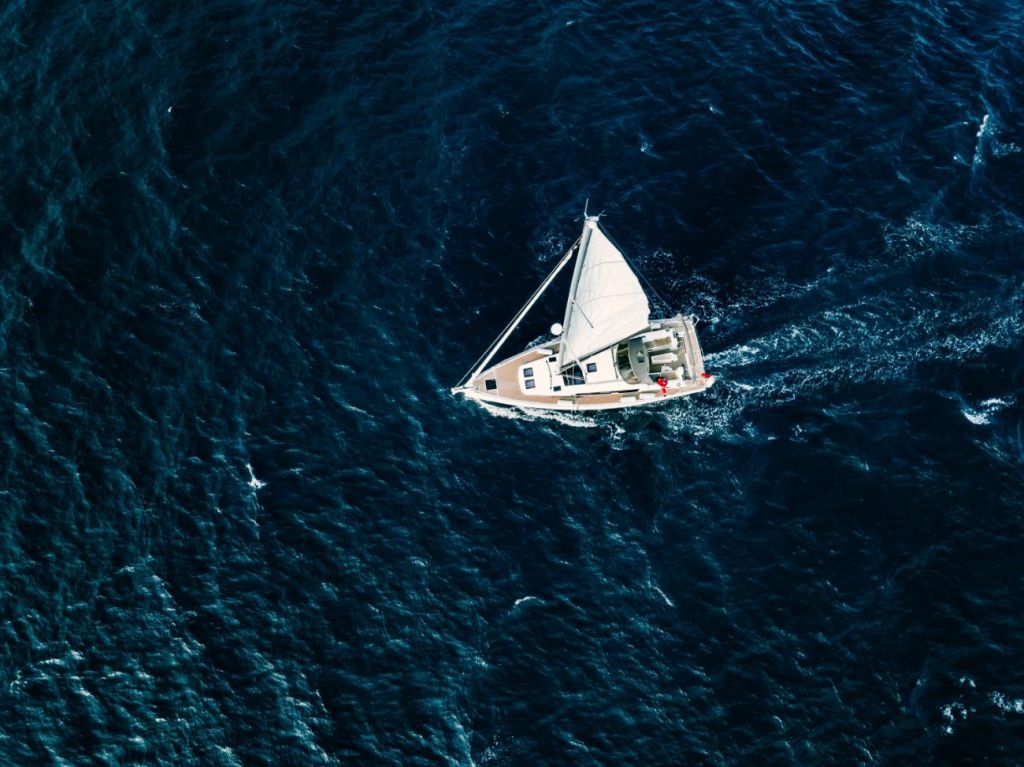
On this page:
How to choose a route for you, route for speed, the pleasure route, the traditional route, the arctic route, the dangerous route, the cheap route, the coast lover's route.
What route you will take depends on what kind of journey you are looking for. If the goal is to do it in the least amount of time possible, you will be choosing a different path than if you don't care about time and put emphasis on sightseeing.
Similarly, if safety and convenience are at the top of your priority list, you will choose a route that might differ greatly from that of a person ready to spend more on security and cut corners through tricky territories.
If you have specific locations in mind, you will take turns that are, logistically speaking, quite impractical, while if efficiency is what you want, there are certain places it would make little sense to visit.
And finally, if you are after comfort, you will avoid some bumpy places and times of the year, as opposed to somebody who won't mind venturing into the corners of the oceans that require a hell of a warm jacket.
There is no right or wrong answer here; don't feel some approaches are better than others. Just look at what you want from the journey, read through this article, and then choose what best suits you.
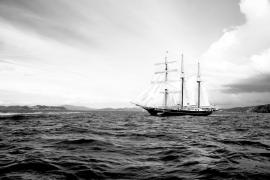
21 Places to Avoid Sailing Around the World (In Order)
Let's kick this off with a racing spirit. This is the route taken by those competing in Vendée Globe, a circumnavigation race. It takes a bit under three months...
...that is if you are a racer and so is your boat. If you are a cruiser kind of person, it will take more time, but the point is that this route is as straightforward as it gets.
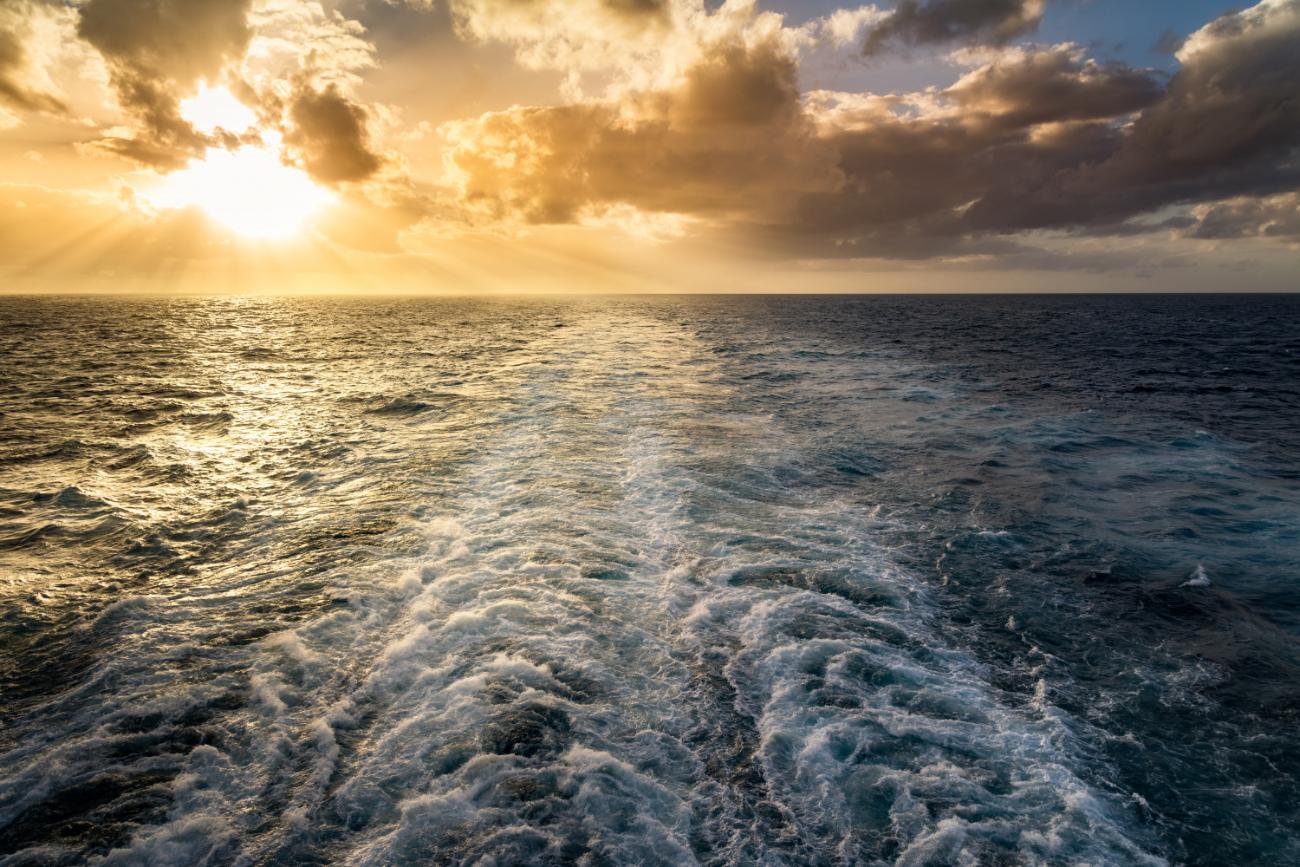
So what waypoints does it touch? Vendée globe racers start in France, then head down towards the Cape of Good Hope, circle Antarctica as close as the rules allow, and after getting to Cape Horn, head up to France again.
Of course, based on where you start from, your route might differ. But the idea is as follows:
- head south towards the Southern Ocean
- sail around Antarctica through the Southern Ocean
- after reaching the point where you met the Southern Ocean for the first time, head back up
The Southern Ocean is not a breeze, the cold waters mixing with the warmer ones coming from the north, plus the danger of icebergs, as well as the cold temperature, isn't how your typical holiday dream looks. That being said, it's up to you how close to Antarctica you will want to be when going around it.
This route doesn't touch down at any land, so you must be prepared for months on the sea as far as provisions, spares and mental capacity goes. Of course, this is variable, you can easily make landfall in Azores, South Africa, South Australia, or South America, and some of the South Pacific islands, if you need to. Either way, it is demanding logistically, so be sure to have your checklist in check .
It is among the most straightforward routes. Not just because it is probably the shortest one or the fastest one, but all the hassle with visas, check-ins, going through canals, and other lengthy land creatures' business will be foreign to you.
If you make it through the Southern Oceans unharmed, you will certainly have one hell of a story to tell.
Now let's go on the opposite side of the specter.
Let's suppose you theoretically have unlimited time. Instead of doing things quickly and efficiently, you want to take it at a leisurely pace while admiring all that there is to see.
This route will begin and end in the Mediterranean, but that's just because that's where I am based, sailing-wise. Wherever else you are, just pick the point of the route closest to you and begin there.
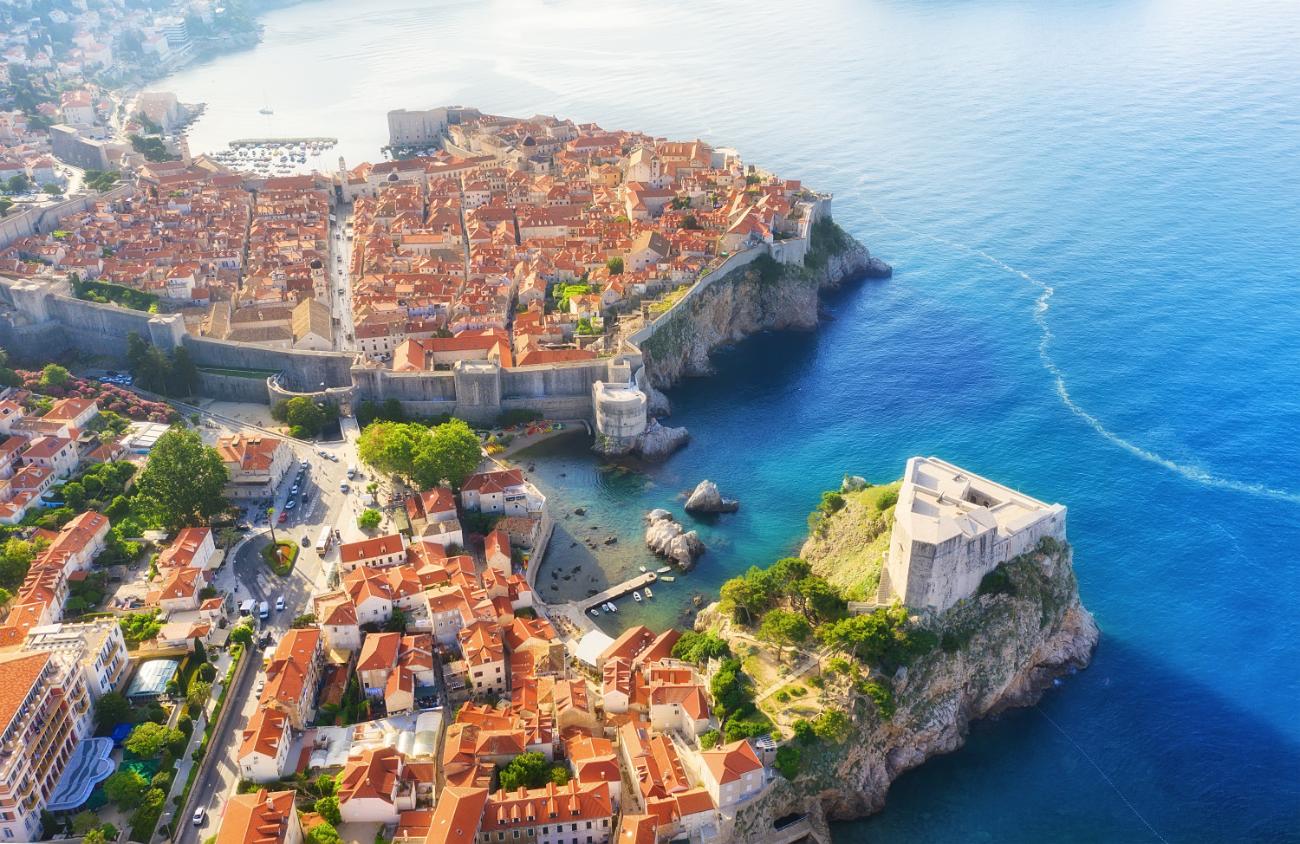
We will begin in Croatia, because it has beautiful shores and islands, travel around Greece with even more islands, the south around Italy, through Gibraltar. After that:
- head south to the Azores
- west to the Caribbean and through the Panama Canal
- west to Hawaii
- south to French Polynesia
- west to New Zealand, then Australia and Papua New Guinea
- northwest to Indonesia, Philippines, Vietnam, Thailand, India
- south to Madagascar, then along the African coast to Cape of Good Hope
- north to the Azores and then through Gibraltar back home
This route takes time since it aims to explore all it can even remotely touch. It's not just that the route is long, because the aim is to visit pretty places. You might also find yourself having to wait months at some places for the bad weather season to clear before you can make your next crossing. Have a look at our article about things to think about when planning for a long trip .
Because of that, this route is more demanding when it comes to planning, visa hassle, check-in research, more ports and anchors, more provisions planning. Also, your boat will need to be a solid liveaboard , since you will spend so much time on it. Logistically, it will be demanding.
But for all that hassle, you will literally get to see the world. You will visit many fantastic cultures, get to taste the cuisines from all over, and the long times waiting for the winds to calm down will be spent on exploring the place you are 'stuck' at.
What more does one need...
...except perhaps some middle ground. Now that we've been to two extremes, let's look at something in the middle: the route most commonly taken when circumnavigating.
It is rather similar to the Pleasure Route above except for skipping the Mediterranean, Pacific, and Southeast Asian stops.
Thus it goes as follows:
- From Europe, head south to the Azores
- west to Australia
- west to Cape of Good Hope
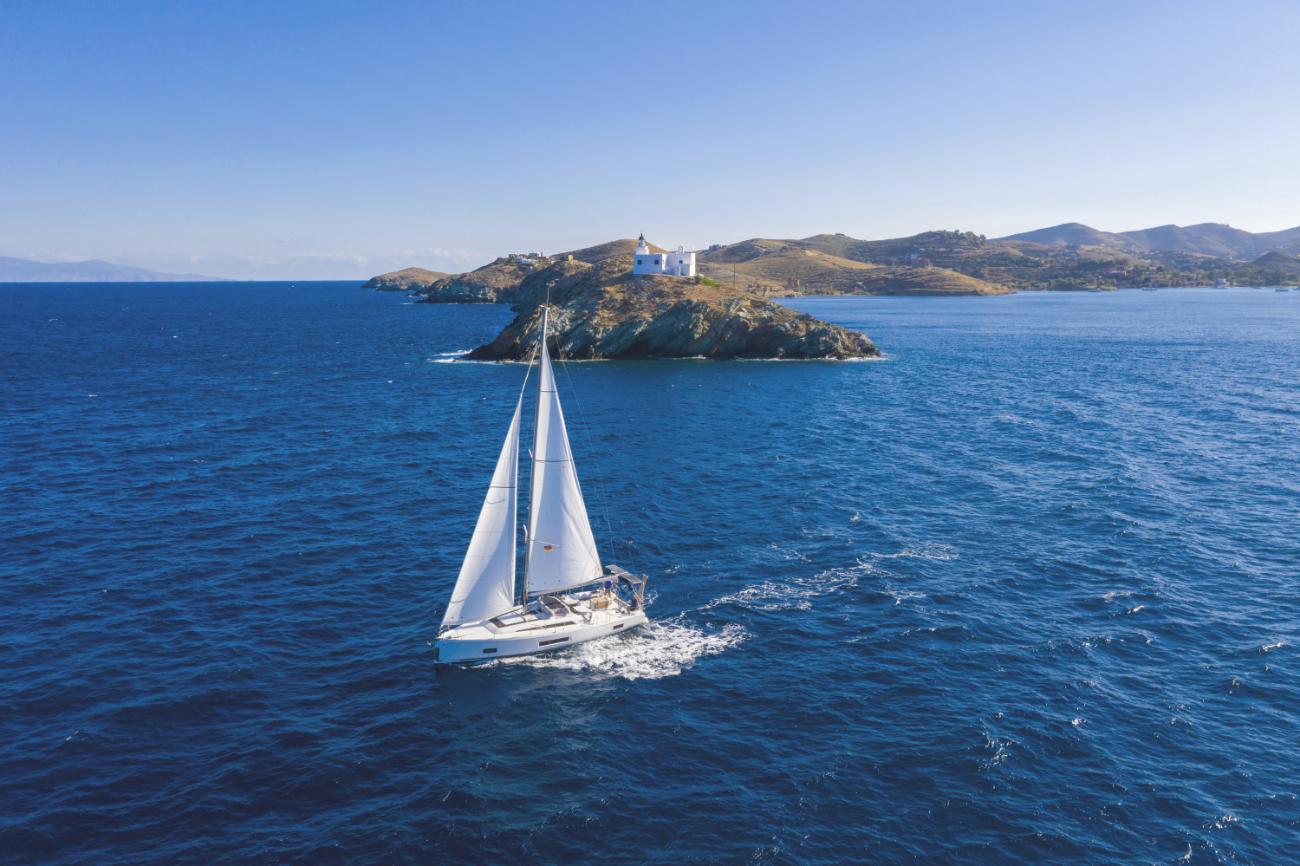
This route accomplishes the circumnavigation while stopping at beautiful places but doesn't necessarily explore everything that happens to be around. Its strong suit is the variability. If you like the Caribbean, you stop and cruise around there. If Australia excites you, you do the same there. If you want to see Madagascar, well, it will be almost on your way. And so on.
It has been a traditional route to take because it is relatively painless and does not go through any hazardous areas.
It has been traveled by many before you, so there is a lot of info floating around if you want to do your research on specific parts of the journey.
On its own, it has a lot of long legs where you will not see anything but the ocean on the horizon. So for those of you who mind this, you gotta make it your own, customize it a bit, so that you spend more time at places that you like.
This planning really is important. Some of those legs can't be made during certain seasons if you want to be careful, so to make sure you don't get stuck somewhere you don't particularly like, you should plan well.
With that, let's get crazier.
For those who want to do things the hard way. Perhaps you really like the scenery, perhaps you want to test yourself, or maybe you've done every other passage, and now it is time for the icy one.
There is a circumnavigation route that leads through regions so far up north you mostly don't encounter them even on a map. Because why would you look up there.
Now I don't know how long this article will survive on the internet, but note that this route is rather climatically contextual. Given enough time, it might freeze over and become unavailable.
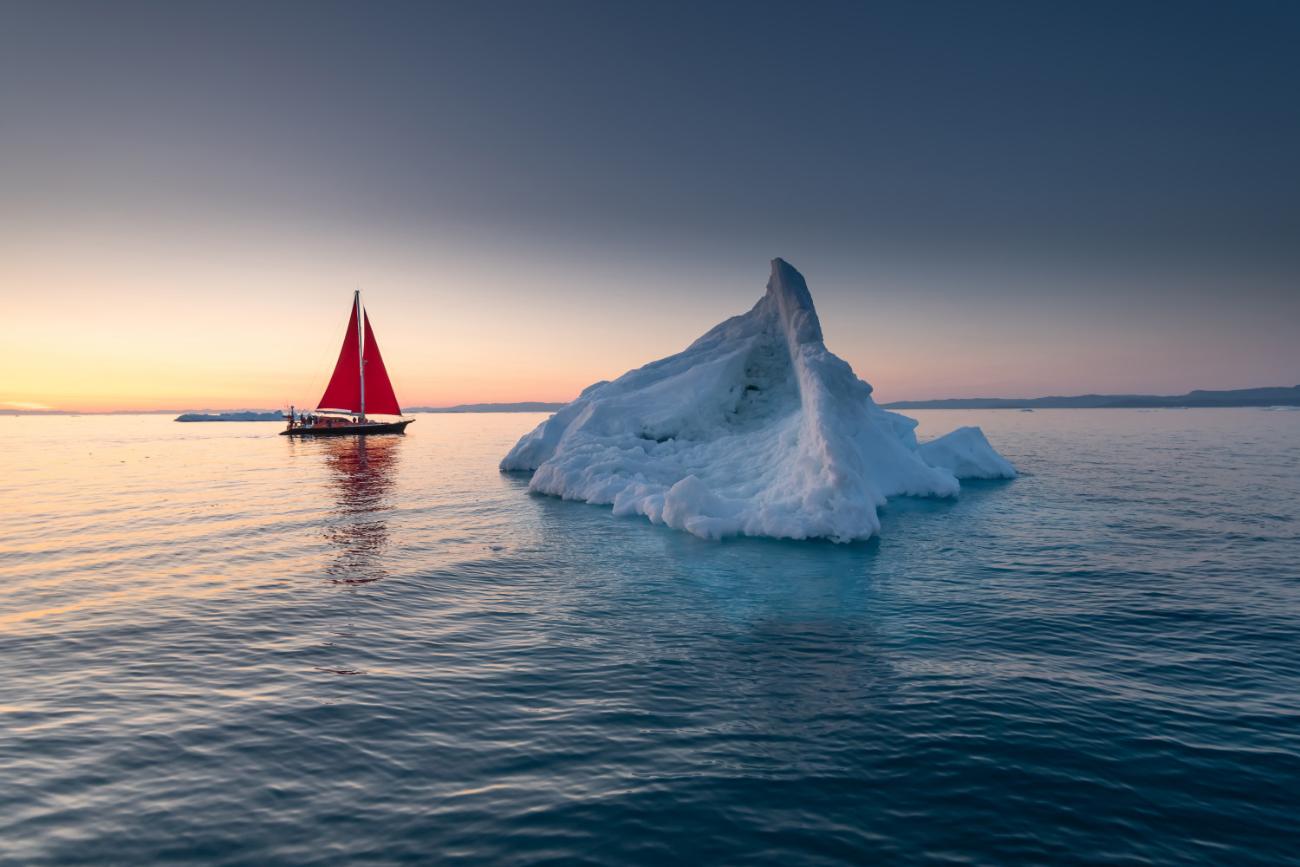
For me, it would begin in one of the northern ports of Norway and then:
- continue west to Iceland
- west to the south of Greenland and then up its western coast to the Baffin Bay
- south of Devon Island and through the archipelagos to Beaufort and Chuchki Seas
- west along the northern coast of Russia under the Lyakhovsky Islands
- west under the Yuzhny Island to the Barents Sea and back to the north of Norway
To this, you will have to add the most straightforward route north from wherever you are to any point on the route above.
Cold. Thus this requires clothing, equipment, and a boat that can withstand the polar temperatures along with chunks of ice floating around.
How much more adventurous can you get? Circumnavigation has been accomplished by plenty of people. This, not so much.
With the above, the major sailing routes have been covered. So what follows are mostly variations. Important ones, though.
Imagine this one mostly as the Traditional Route, except with a few twists. One of them leads through the Gulf of Aden, the Red Sea, and the Suez Canal.
Why take it? Because if you look on the map, you will see that when going from the general direction of Australia or Southeast Asia west, meaning you are probably aiming for the Azores or further for the Caribbean, it will save you a lot of time.
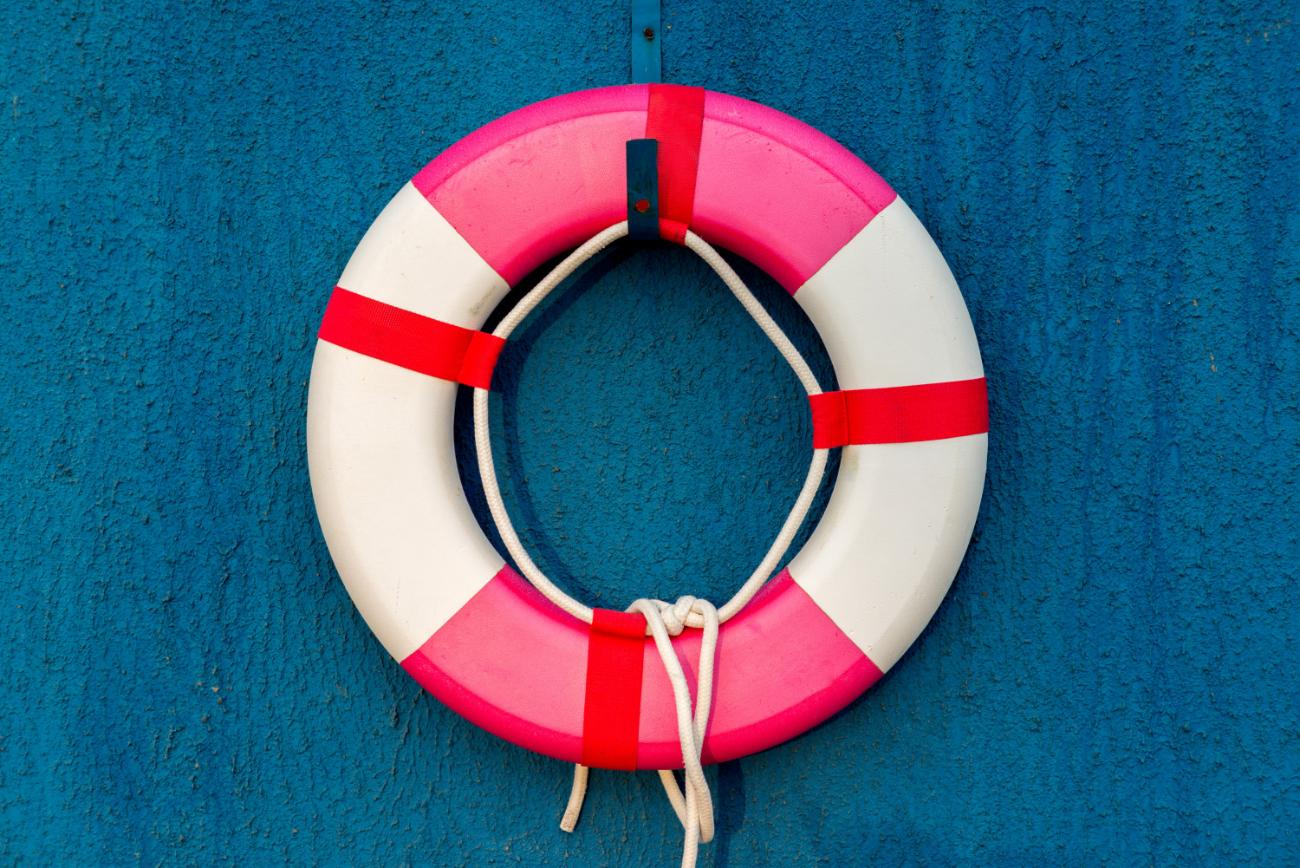
Money, not so much. You will have to pay for security. Because although you will save yourself the long southern route around the whole continent of Africa, which is nearly a 10,000-mile detour, you will have to go through the aforementioned areas that are famous for piracy and require professional armed company if you want to be on the safe side.
Not that it hasn't been done without it, but you know… Furthermore, many insurances won't cover you there since the risks are just too high.
Similarly, the area around Malaysia and the Philippines, which you might encounter during your Southeast Asia travels, bears the same story. No coverage by many insurances for piracy reasons.
Then again, exploring Southeast Asia while avoiding these regions means a few detours and no-go zones.
So if you want to explore the world on your sailboat and don't mind the risk, add these to your route plans.
Obviously, the risk or costs related to security. You will find plenty of sailors arguing that there is no real danger unless you are a cargo ship or a kidnapping worthy target. You will also find plenty who would rather travel in a fleet through there. And plenty who would never set sail towards those places.
Then there is the insurance issue.
With Suez, the upside is the saved time as well as not having to go around the treacherous South African cape waters.
With the Philippines and Malaysia, it's the convenience of being able to go wherever you want to in one of the most beautiful regions worldwide.
See this one as a variant of the Traditional Route and the Pleasure Route.
Some places are cheaper than others. And some places straight up make very little sense to go to.
Going through the Panama Canal is at least a $1,300 expense. Or, there are countries, like Ecuador, where check-in can cost you a $1,000 fee. And last but not least, prices of resources, like food, vary too. The Caribbean is famous for its steep prices in the provisions area.
The prices change, so it would not be bulletproof to give you a precise circumnavigation route exclusively through cheap places. Still, the moral of the story here is that when planning your route, do have a look at the local prices when it comes to check-ins and visas, food and various passes.
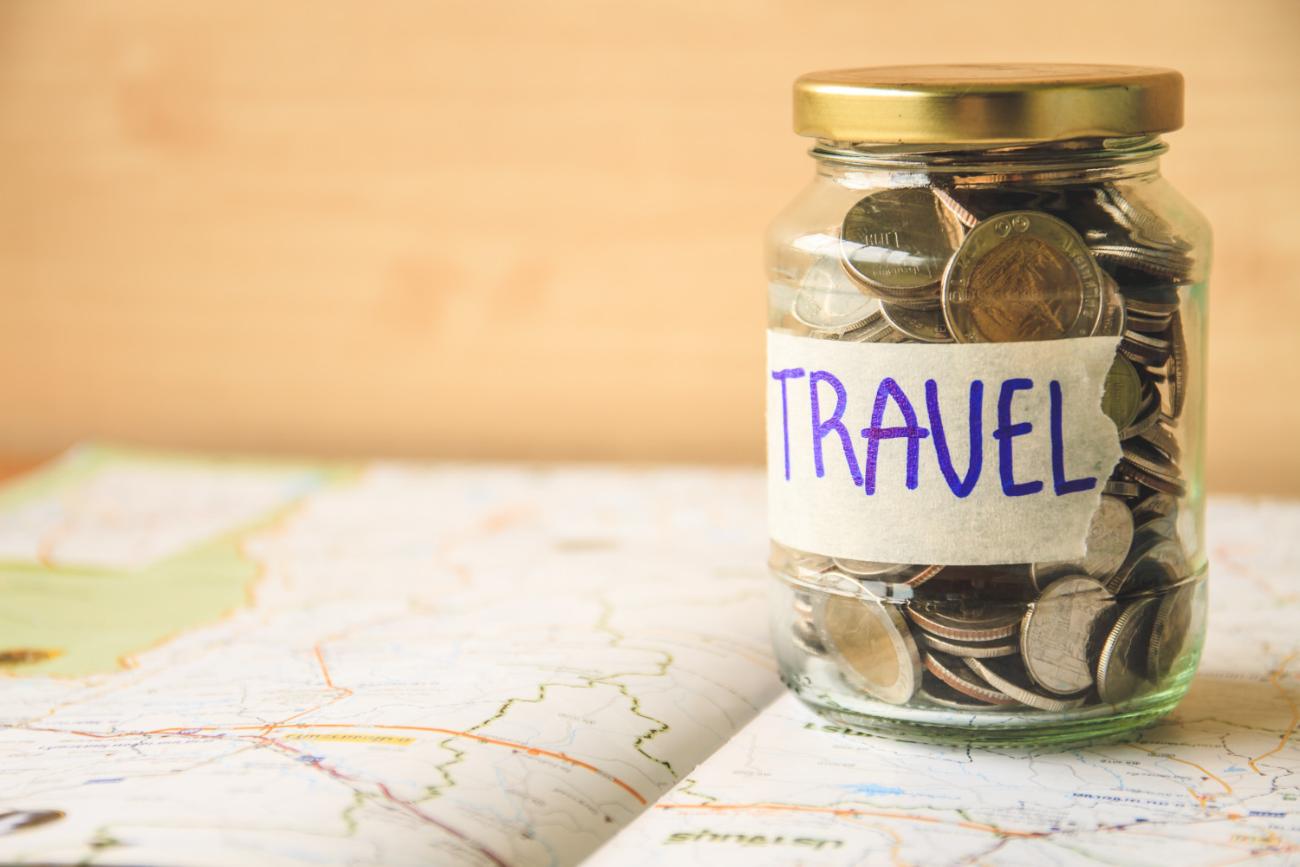
The result should be a route you are comfortable with financially. Avoiding the Panama Canal means a detour around the whole of South America, so it rarely pays off. Avoiding Ecuador, on the other hand, won't hinder your progress and save you money. Stocking up on food before getting into the Caribbean is also a sound logistical choice - unless you plan to stay for longer than your stocks can take you.
Saving money can mean detours, inaccessibility of various places, and more thought put into logistics. So it can result in a less elegant route.
On the other hand, being smart about it can result in a much lower bill overall.
Let me start this one by admitting that I don't believe anybody will actually take this route in its entirety, as delineated here. But it serves as an inspiration to those who are perhaps a bit unsure or simply like to combine two different sailing styles.
Some like to cross vast oceans and love to see nothing but the horizon for months. And then some like to stick to coastal waters for most of their journeys. Nothing wrong with that; at least it gives you something to look at any given moment.
And then there is the benefit of relative safety, a port or an anchorage close by most of the time, the ability to resupply whenever you like, to pick up and drop off people, and last but not least the lack of need for a really ocean-worthy boat and equipment.
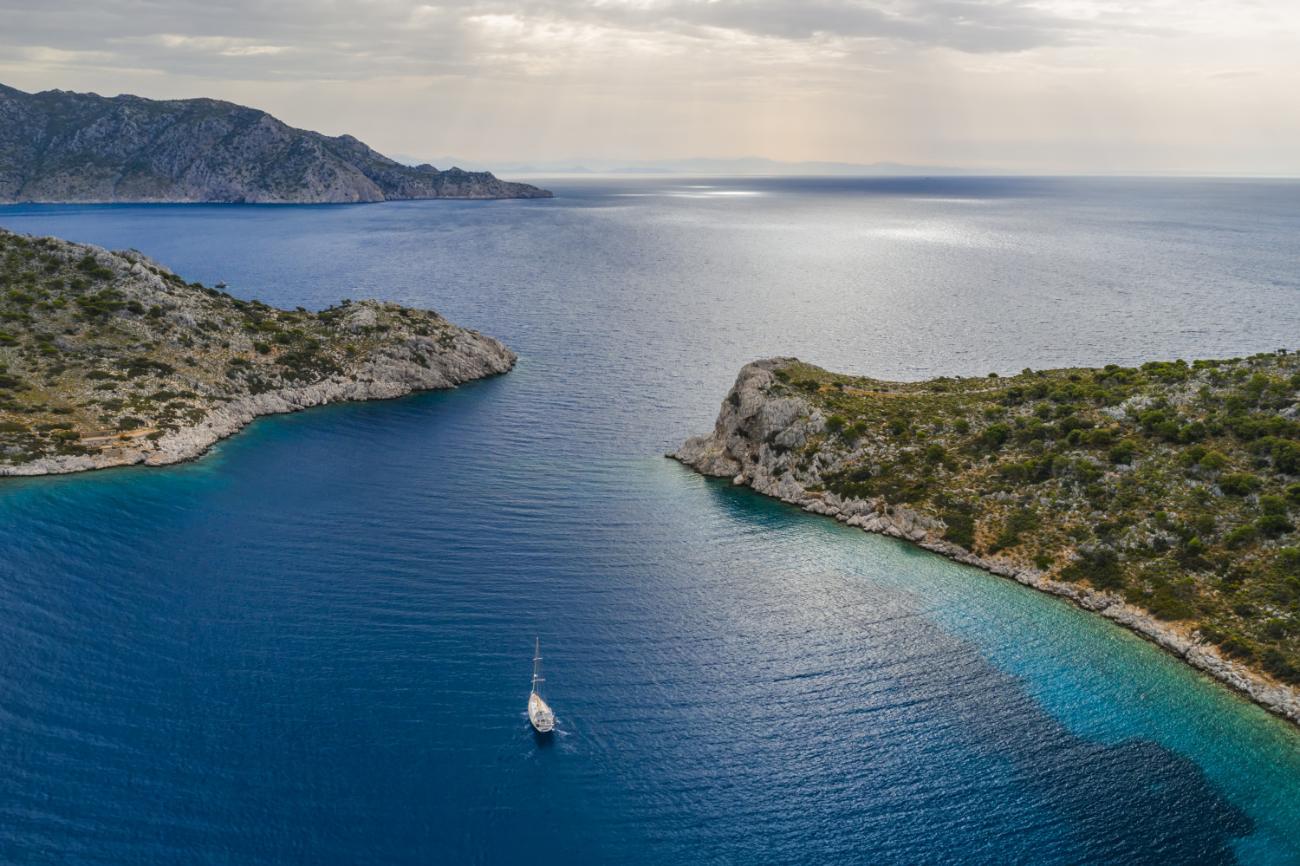
I'm talking about the coastal cruiser's dream of circling all the world's continents, whereby effectively circumnavigating the globe. Eventually. This is the longest route ever.
The idea is pretty simple. You can go around the world sticking to the coast with no crossings, except for the Norwegian Sea and a few short stretches in Southeast Asia.
Or, if you feel up to it (and want to avoid the freezing northern places), you can cross the Atlantic, the Pacific and keep close to the coasts otherwise.
As mentioned in the beginning, not many will actually take this entire route. But it is not uncommon for circumnavigators to have weeks or months where they do exactly this - stick to the coast and enjoy the country.
Lots and lots of time and resources are needed.
You will constantly be checking into countries and solving visas.
Understand the required paperwork for sailing the world This is an article on the topic of check-ins and paperwork, so have a read through it Read up on global licenses
Some areas are arguably less hospitable than others - the coast of Yemen as an example. So you might want to skip a few.
You don't need a proper ocean exploring boat - an island-hopping model will suffice. Many of the modern ones are capable of long crossings if needed here and there.
You don't need as much equipment as power, water, food, and all that jazz will be available most of the time.
The logistics will suddenly become a whole lot easier. Fewer provisions planning, less spare parts planning, broken stuff won't be a disaster… you get the point.
This is the true world tour.
I liked your article; it raised a lot of good points. I think the article could have benefitted from some maps.
I also think that, throughout the article, you have confused the Canary Islands or Madeira with the Azores. The Azores are not south from Gibraltor or France or Europe. They are 1/3 the way across the Atlantic Ocean, almost due west from Lisbon. The Canaries are south from Gilbrator, France and Europe and most people turn west there for the Caribbean.
Again, I liked the article.
Best wishes.
Leave a comment
You may also like, 41 sailboat cruising essentials for long trips.
In this post I list the items you are unlikely to have if you have never done bluewater or long-term cruising before. There are some essential safety product and …
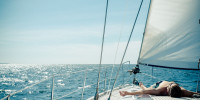
Everything You Need to Sail Around the World (by an expert)
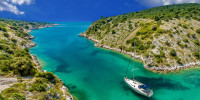
How Long Does it Take to Sail Around the World?
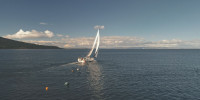
The Safest Sailing Routes Around the World (Which to Avoid)

How Big Should a Sailboat Be to Sail Around the World?
RetireFearless
Best Sailboats For Circumnavigation
Circumnavigation is an undeniably enjoyable experience made even more fun with the right sailboats. Read on to find the best sailboats for circumnavigation!

October 17, 2023
This article may contain affiliate links where we earn a commission from qualifying purchases.
The best sailboats for circumnavigation include the Jeanneau Sun Odyssey 54DS, Neel 51, and Island Packet 349. These boats offer passengers a thoroughly enjoyable sailing experience and the reliability, efficiency, and luxury they need from a long-haul sailing vessel.
Circumnavigation is all about navigating the world oceans on a dream sailing trip across the world. The best high-performing sailboats can help circumnavigate the world with ease. They have the most reliable and functional facilities onboard, are easy to maneuver, have been fitted with the finest equipment, and have organized, spaced out deck and cabin areas for you to have a pleasant sailing experience.
Given the sheer volume of sailboats in the market, it’s not always easy to make the right decision for your sailing adventures. It’s why I have used my sailing expertise to create this list of the most reliable and high-performing sailboats ideal for sailing across the world!
Table of Contents
8 Best Sailboats for Circumnavigating the World
Here are eight of the finest sailboats for travelling around the world:
1. Jeanneau Sun Odyssey 54DS
Jeanneau Sun Odyssey 54DS is easily one of the finest and luxurious sailboats for circumnavigation. It’s a spacious and visually stunning vessel with large, swooping curves that give it its unique shape. When this sailboat debuted in 2003, its superstructure, with its quality desk hardware, was instantly recognized as one of the finest in the world, and that remains true today as well. Plus, the interior of the boat is designed with elegance in mind.
Moreover, this sailboat has a premium-quality, powerful build, which ensures that the Odyssey 54DS delivers top-quality, smooth performance, allowing you to travel in it around the world with ease. The 54DS has many notable features, including its standard in-mast furling mainsail and deep-draft keel. The vessel also comes with an optional full battened main.
The sailboat has a fancy leather-bound wheel that works smoothly and five to ten luxurious berths. It features a harbor cachet that is more or less the same size as the cachet of a custom yacht. All of its distinctive and contemporary features are designed to offer maximum comfort and a smooth sailing experience to long-distance travelers. It’s why the price of the sailboat is certainly a bit on the higher end. But the sheer quality and prowess of the boat make up for the higher price tag.
Here are some pros of the Jeanneau Sun Odyssey 54DS:
- Sturdy construction
- Reliable sailing experience
- Luxurious interior for added comfort
- Attractive design that makes it feel like a small superyacht
Here are some cons of the Jeanneau Sun Odyssey 54DS:
- Price is a bit steep
Neel 51 is a popular choice amongst sailboat lovers due to its wide deckhouse. Its double headsail rig is conveniently accessible from the helm and is controlled by Harken 52 winches. This blue water yacht was introduced after the success of Neel 45 and Neel 65.
This sailboat also houses two center-hull staterooms with functional showers below the deck. The trim of this popular yacht is made of alpi wood, and the flooring has a hard-wearing polyester substance construction. The sailboat enjoys an overall length of 51 feet and a width of 29 feet and 18 inches. The live-aboard space equals 90sqm, and the tender garage technical room covers 18 sqm.
With that said, the headsail hinders visibility from the helm, which is a common pain point with multihulls. With that said, you can enjoy an unobstructed view from the spacious and elegant lounge space adjacent to the helm for resting and relaxing. This boat is fitted with an impressive Volvo diesel inboard engine with an HP sail drive of 75.
This sailboat can also carry up to 600L of water and fuel. It offers exceptional directional prowess and is easy to drive. With this vessel, you can sail from 6-7 knits up to 10-11 knots. It’s the ideal boat for individuals who wish to experience the joys of circumnavigation in a comfortable sailboat.
Here are some pros of the Neel 51:
- Sturdy, durable construction
- Excellent functionality and a smooth ride
- Incredible directional power
- Comfortable, spacious, and luxurious
Here are some cons of the Neel 51:
- Visibility is obstructed from the helm
3. Island Packet 349
The Island Packet 349 is widely regarded as the best midsize cruiser under 38 feet. Even in poor weather conditions, it offers its passengers a comfortable and safe long-haul sailing and cruising experience. From its harken furlers and winches to its fiberglass work, the build quality is brilliant. The vessel sails wonderfully well as well.
This vessel is designed as a two-cabin boat and features a separate shower compartment in a single head, a distinctive feature in a boat under 38 feet. It comes with a functional set of furniture and appliances, including an under-counter storage space for dry goods, refrigerators, a pull-out spice rack cabinet, various bulkhead mounted handholds and SS overhead spaces.
The saloon of the sailboat also contains an L-shaped built-in sofa/settee and a dining table that can be folded when not in use to make more space for the passengers. The Island Packet 349 has an overall length and water length of a little more than 38 feet and 31 feet, respectively. The draft is 4 feet, and the beamwidth is 12 feet and 6 inches long.
The vessel can carry up to 100 gallons of water and 55 gallons of fuel. It houses a strong engine of Yanmar diesel with 45 HP, which allows it to travel a distance of 500 miles at six knots cruising speed. The IP 349 offers a nominal hull speed of around 7.5 knots, thanks to its 32-foot waterline. This model is safe for sea travel due to its ballast-to-displacement ratio of 39% and full keel, 20,000lbs displacement.
Here are some pros of the Island Packet 349:
- Durable fiberglass and harken construction
- Excellent utilization of space despite the small size
- Strong engine and traveling speed
- Comfortable vessel for sailing across the globe
Here are some cons of the Island Packet 349:
- It’s a bit on the small side compared to other sailboats on the list
4. Amel Super Maramu
Amel Super Maramu is a loved vessel designed by the Frenchman Henri Amel. He designed it with the vision of creating a high-performance circumnavigating sailboat, and it’s safe to say he succeeded. This sailboat provides exceptional performance in deeper sea waters and is all about functionality.
The sailboat has an undeniably traditional circumnavigating sailboat-like appearance. However, it has many modern features to offer. It’s designed to be operated by a small crew of two people to ensure increased efficiency. The ketch rig has a simple yet exceptionally effective design, and the sails are electrically controlled, making the boat super manageable.
With everything said, the Super Maramu is not designed for external modifications. It’s a 53-feet-long boat with an optimally functional exterior and interior. It has an overall width of a little over 41 feet and a beamwidth of 15 feet. The sailboat has a water capacity of 264 gallons and a fuel capacity of 158 gallons.
Here are some pros of the Amel Super Maramu:
- Super-efficient design with maximum focus on functionality
- It doesn’t require a huge crew; designed for a two-person crew
- Explicitly designed for long-distance sailing
- Safe, reliable, and powerful vessel
Here are some cons of the Amel Super Maramu:
- Not as luxurious as some of the other options on the list
- Best for an experienced crew due to the complexity of some features
5. Bavaria 42
Bavaria 42 is a mass-produced, popular boat designed for cross-ocean traveling. It’s a no-nonsense, comparatively priced, adaptable sailboat that offers great features for its affordable price. The deck features a fairly spacious sail area and a long waterline to ensure good performance. However, the vessel can be super heavy when the cruising essentials are stored onboard.
The cockpit of the boat is placed centrally to free up more space for the passengers. Below the deck, the interior is as functional and practical as needed. Depending on the model you choose, you will benefit from two to three comfortable seeping cabins that are functional. It’s a standard go-to cruiser for circumnavigation.
This sailboat offers an overall length of almost 43 feet and a beamwidth of 13 feet. Depending on the model you choose, you can avail a fuel capacity of 210L to 230L and a water capacity of 360L. You will also have six to eight functional berths. The engine has an HP of 55. All in all, it’s a well-built, practical vessel that will enable you to have a relaxing cruise around the world.
The forward visibility of the sailboat is excellent at the helm, and the wide cockpit offers an unmatched sense of security even when the boat is listing. Moreover, the Bavaria 42 responds exceptionally well to the touch of an experienced sailor.
Here are some pros of the Bavaria 42:
- Responsive, functional sailboat
- Practically built to offer excellent performance
- Excellent front view
- Sense of security due to the spacious cockpit
Here are some cons of the Bavaria 42:
- Quite heavy when the cruising essentials are stored onboard
6. Beneteau 57
Beneteau 57 is easily one of the finest, most high-end sailboats for circumnavigation. It’s designed to be a stylish, high-performing, reliable vessel that you can take on a cruise around the world. It’s a luxury sailboat through and through!
The vessel’s hull has a monohull design and offers quick performance and a sleek appearance. The cockpit is also placed centrally to maximize the space on the deck and keep the vessel’s interior neatly organized under the deck. It is a powerful sloop rig with an impressively constructed cockpit.
The facilities below the deck are modern, comfortable, and wholly impressive. They are also quite spacious since the vessel’s overall length is more than 50 feet. The beamwidth of the vessel is a little over 16 feet, and the overall width is 56 feet. Moreover, its engine has an impressive 160 HP, and the fuel tanks have a capacity of 400L. The sailboat can carry 22,000 kgs of dry weight.
The synthetic glittering Glass blue countertops in the head and the brilliant stainless steel gallery appliances add a luxurious touch to the Beneteau 57. The boat has the most comprehensive list of features out of all the Beneteau boats. Considering the fantastic build-quality and luxurious experience that the Beneteau 57 offers to its passengers, its price is impressively competitive.
Here are some pros of the Beneteau 57:
- High-end, luxurious vessel with a fantastic build quality
- It offers an enjoyable cruising experience
- Well-organized and functional deck and below deck spaces
- Stainless steel appliances
- Competitive price
- Impressive dry weight capacity
Here are some cons of the Beneteau 57:
- Not as efficient as some of the other options on the list
7. Hylas 54
Hylas 54 has a German Frers design that offers the vessel a brilliant balance between efficiency and performance. The vessel’s hull is built exceptionally well, ensuring the boat to be driven seamlessly. It’s so easy to sail the boat that achieving more than 200 miles per day is achievable. On the deck, the compact and efficient design is ideal for an experienced sailor.
One of the finest features of the Hylas 54 is its spaciousness below deck, which is ideal for long-haul sailing across the world. The flexible below deck interior allows you to customize the layout however you want. It also enables you to use the finish quality you want. It also comes with a raised saloon version, which adds to its flexibility.
Like other Hylas sailboats, the passengers are typically satisfied with this 54-feet-long vessel for cross-ocean sailing. It’s because this vessel is super easy to handle and makes a great all-rounder for circumnavigation. It offers you the freedom you need to traverse the world oceans in comfort and style.
Here are some pros of the Hylas 54:
- Excellent customization options
- Efficient, high-performing vessel
- Easy to sail across the ocean, achieving maximum speed
Here are some cons of the Hylas 54:
- A relatively smaller deck compared to other vessels on the list
8. Beneteau Oceanis 46.1
The Beneteau Oceanis 46.1 is one of the most popular Beneteau models. It features a stepped hull design and incorporates some of the most loved features of the previous models. It also offers increased performance, quality, and top-tier design.
Oceanis 46.1 has a deep lead-bulb keel and a tall mast, allowing the vessel to offer 28% more sail area than the previous Beneteau models. It also has a “first Line” edition that offers comfort and speed. This sailboat offers a functional and roomy cockpit and a spacious forward owner’s cabin. It enables you to sail luxuriously and comfortably.
The overall length and width of the vessel are 46 feet and 47 feet and 43 feet. The hull length is an impressive 45 feet. The sailboat features a Yanmar power engine with 57 HP. You can also go for the Yanmar diesel with 80 HP. This sailboat comes with five varied layouts – three cabins with two heads, three cabins with three heads, four cabins with two heads, four cabins with four heads, and five cabins with three heads.
This Beneteau model enables you to sail short-handed and empowers you to control the winches from aft. It also has a beautiful design; the below deck interior is covered with brushed light oak veneer. It also houses wide sunbeds with separate head and shower compartments. The vessel has large hull portholes that allow natural light into its saloon, making your experience more comfortable.
Here are some pros of the Beneteau Oceanis 46.1:
- Beautiful and spacious below deck space
- Multiple below deck options
- Excellent performance and efficiency
- Spacious vessel with a powerful engine
Here are some cons of the Beneteau Oceanis 46.1:
- Not as roomy as some of the other sailboats on the list
Which Sailboat is the Best for Circumnavigation?
With today’s varied options, sailing worldwide is an exciting prospect. After all, there are many luxurious, well-performing sailboats that can help you have a grand time sailing across world oceans. However, only the best sailboats can offer you the most pleasing sailing experience that goes without a hitch.
The finest boats for circumnavigation offer lightweight speed and have a spacious hull and deck area that offers a grand view. They are also equipped with the finest, most functional and luxurious features for your comfort on your sojourn. That said, the best sailboat for you will also depend on the route you’re taking and your specific needs.
For instance, if someone is looking for a luxurious, competitively priced vessel for their circumnavigation trip, they will likely choose a Beneteau 57 for its luxurious interior and high-end performance. However, if you’re more inclined toward efficiently performing sailboats designed to offer optimal functionality, you will be drawn toward the Bavaria 42.
But if you need an incredible all-around performer in the world of sailboats ideal for circumnavigation, you will likely choose the Jeanneau Sun Odyssey 54DS or the Island Packet 349. These sailboats offer exceptional functionality, luxury, and comfort. They are also reliable in poor weather conditions and offer you a smooth, quick, and efficient sailing experience.
Recent Articles

What Size Sailboat Can One Person Handle?

How To Tie A Sailboat To A Mooring Ball Ring

What Is The Ideal Wind Speed When Sailing?

How To Use a Sailboat Winch

Things You Need To Liveaboard a Sailboat

Types of Sailboat Keels
I'm Michael Moris. I've been sailing my whole life, and it has taken me to places I never imagined. From the Caribbean to Europe, from New Zealand to South America - there's nowhere that hasn't felt like home when you're on a boat!

Trending Articles

How Far Is Havana From Miami By Boat?

Yachting Vs Sailing

Who Is Sailing Doodles?
Subscribe To Our Newsletter
Thank you! You're signed up for our free newsletter!
Oops! Something went wrong while submitting the form
About Our Team
We are a publishing team of licensed Nursing Home Administrators, Nurses, Assisted Living Directors, Health Professionals, Gardeners, and individuals with vast experience with senior living and activities.

©2024 Retire Fearless. All rights reserved.
We can be reached via email at [email protected]
Retirefearless.com is a participant in the Amazon Services LLC Associates Program, an affiliate advertising program designed to provide a means for sites to earn advertising fees by advertising and linking to Amazon. This site also participates in other affiliate programs such as CJ, ClickBank and more, and is compensated for referring traffic and business to these companies.
Facebook Pinterest
Yachting World
- Digital Edition

Sailing around the world: Cruising couples’ top tips for a dream voyage
- Helen Fretter
- June 19, 2019
Is sailing around the world with your partner the ultimate bluewater dream? Helen Fretter meets World ARC couples who’ve done just that

Who would you pick as your round-the-world cruising companion? Photo: Tor Johnson
If you could choose anyone to go on a grand adventure with, would it be your life partner? For many couples that’s the ideal.
But what if you don’t have the same level of experience, or one of you isn’t confident to co-skipper? Perhaps you plan to take friends and family with you. But what happens if those plans change halfway round? I talked to World ARC crews near the finish of their circumnavigation to find out how different couples had answered those unknowns over their round the world voyage.
Over the 2017, 2018 and 2019 World ARC rallies (the round-the-world rally organised by World Cruising Club) around 20-30% of yachts set off double-handed. But by the time the fleet reached Tonga or Fiji that proportion had risen to about 50%.

Ruud and Laurie Bosman recruited crew from within the ARC rally after deciding to complete their world voyage
Grenada was a homecoming celebration for the World ARC fleet. While St Lucia marked the end of the 2018-19 rally, Grenada signalled the fleet’s return to the Caribbean. A full circumnavigation for most, 438 days sailing for those who’d completed it in a single World ARC loop.
Some 38 yachts started in St Lucia in January 2018, 16 were gathered in Grenada this March. Some had started in 2017 – or even earlier – but peeled off to linger in the Pacific or return to normal life for a while, then hooked into the 2018 rally on its way past. Others had diverted to explore New Zealand, Ascension Island, or another outpost, before rejoining their fleet.
No matter how they’d done it, all had sailed some 30,000 miles, crossed the Pacific , Indian and Atlantic Oceans, and lived at anchor for months on end.
With very few exceptions, most of the boats belonged to couples taking on their first trip sailing around the world. Some had sailed the entire voyage jointly, on others one partner had flown home for a stage or two. Some had taken crew from day one, others had switched between double-handing and sailing with more aboard. Several started with one plan, and finished with a very different set up indeed.
Article continues below…
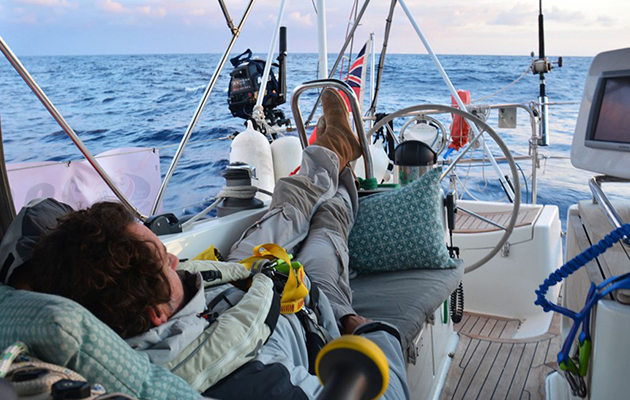
How much does it cost to sail around the world? The real costs of liveaboard cruising
Two years ago my partner Nick and I set off from the UK to fulfill our dream of sailing around…

Onboard creature comforts: Little luxuries for sailing around the world
Cruising sailors who also call their boat their home usually give plenty of consideration to making life on board as…
Personal space
One such couple was David and Wendy Tipton. A former farmer from Staffordshire, UK, David had built up a recycling business that he sold, enabling them to buy Mischief , a Jeanneau Sun Odyssey 479, and sail around the world. There was only one problem: Wendy hated the water and considered herself an inexperienced sailor.
Before they set off on the 2017 ARC transatlantic, Wendy had to learn to swim before she could even do a sea survival course. “It was never my dream to circumnavigate, it was David’s. So I went along with it, but it was totally out of my comfort zone,” she recalls.
Wendy’s initial condition of agreeing to do the World ARC was that they would take a crew to sail Mischief with them. They sent a round robin email to friends and sailing contacts to see who wanted to join them, and garnered an enthusiastic response, with many signing up for different legs. One was a very experienced sailor who sailed with the Tiptons for the first six months, which Wendy says gave her a lot of confidence.

David and Wendy Tipton began their World ARC with crew, but later switched to sailing two-up. Photo: James Mitchell
But 15 months is a long time to share your home, with up to six aboard at times, and Wendy admits having no personal space nearly drove her to breaking point. “I did have my bags packed to go home at one point. I was so fed up. It was nothing to do with the sailing, I was just sick of people.
“We were at the stage of needing down time on our own. It’s very intense – I didn’t appreciate how intense the whole trip would be. You wouldn’t have people living with you for six or seven months, and things that wouldn’t normally irritate you become irritating. For my own sanity I needed some time on our own.”
They decided instead to sail on double-handed from South Africa, and arrived in St Helena bowled over by how smoothly it had gone. “It was an absolute revelation,” David recalls. “The watches worked well, the boat worked well, and we were just asking ourselves why have we not done that before?”

The World ARC can include stop-offs for shoreside adventures including a South African safari. Photo: Haley Haltom
Before switching to sailing double-handed Wendy had sought advice from other crews on the ARC, many of whom had become close friends. She particularly asked the women for honest opinions, and says that they were overwhelmingly positive – with the obvious caveat that it could be more tiring sharing the sailing between just two.
They began their first double-handed passage with David sleeping in the cockpit during his off watches, “just in case she needed me quickly,” he recalls. “But after a few days of that regime she said, ‘You might as well go down below, I’m fine.’”
But things didn’t go so well on one of the next stages, from Cabedelo, Brazil, to Devil’s Island, French Guiana. “It was a bit of a catalogue of events,” he explains. “Our radar stopped working, so we were not able to monitor squalls.
“We had another boat who was monitoring them for us, but one came through that went from 7 to 35 knots and we had a spinnaker up in the dark. It broke the spinnaker halyard, the spinnaker went round the keel, the helm wouldn’t come off autopilot so we broached, an outhaul and a batten in the main broke.”

The Bay of Islands in Fiji’s Lau Group. Photo: Haley Haltom
Dealing with such a litany of problems between just the two of them was unknown territory, but Wendy says that while the situation did scare her, they were able to calmly work through and solve each issue.
“What the World ARC has given us – not just from the easy passages, but from the difficult passages – is the confidence that you could throw most stuff at us and we’d be OK,” David added. When they received the Division A 1st prize for the leg to Grenada, sailors across the fleet voiced their pride in Wendy for the progress she’d made.
Another couple that decided they were better off completing the rally two-up were Dan and Agnes Long from Florida on Smoke & Roses . Dan, a former firefighter, and Agnes, a former florist – hence the boat name – ran their Leopard 47 as a charter boat before the World ARC and were experienced sailing in home waters, both holding US Captain’s licences.

Setting off on the Lagoon 47 Smoke & Roses
Like many, they began their World ARC with trusted friends, and were also joined by their adult daughter for stages. But they later took on an unknown crewmember who had been recommended to them.
“She way overstated her sailing experience,” Dan recalls. “She could not trim sails, and she’d argue with you about it.” The final straw for Dan was waking up to find them sailing 90° off course. When he challenged the crew on deck she replied: “Because it’s faster.”
Fearful that they would run aground or make some other catastrophic error, Dan found himself supervising every watch – defeating the point of having a third person aboard. “So instead of being up for my shift, I’m up for my shift and her shift. But with Agnes [on watch] I’ll sleep through the night because I trust her.”
Having sailed two-up for some of the shorter legs around the Society Islands, the Longs also decided to go double-handed from Cape Town and found themselves easily handling the longer distances, setting a spinnaker for three days straight and covering 200-plus miles a day.
Bringing in reserves
For other couples taking on crew turned out to be a positive switch. Peter and Anissa Pappas, from Wyoming, USA, had never sailed any overnight passages with just themselves aboard their Amel Super Maramu 2000 Callisto before signing up to the rally. Anissa describes herself as a very inexperienced sailor, but they sailed from Grenada to Cape Town double-handed.
Their Amel is set up for single-handed sailing, with push button controls from a protected centre cockpit. The duo sailed conservatively, never over-canvassed. “And we set radar guard zones and cross-track error in case our autopilot started wandering around,” explains Peter. But Anissa still found night watches hard.

Night watches can be a long and lonely experience
“I was always worried if we were going to hit somebody. I never felt totally comfortable with that. I always felt that if something is going to happen, it’s going to happen on my watch.” She says she would frequently wake her husband for a second opinion.
But when one crewmember who had been sailing on another boat found himself without a berth for the leg from Cape Town, the Pappas’s made a snap decision to invite him to join them.
“We’d said no on countless occasions to taking other crew,” recalls Anissa. “It’s been hard [going two-up], especially hard on my husband because everything falls to him. But for us transitioning to crew has been easy, and our new crew has been the easiest person.”
With an extra hand they were soon able to carry more sail area, enjoying having the 52ft ketch flying along under four or five sails, including two spinnakers and a staysail.

The start of the 2018 World ARC Leg 16 heading out of St Helena
“With hindsight, I think we should have started out with crew,” admits Anissa. “Peter and I had not really been on the boat together for enough time to really get all the sails up and learn what we needed to learn. And later maybe – or even maybe not – we would have downsized.
“Two was tough, but we did it. But for couples I would say keep an extremely open mind about bringing crew aboard.”
Roving crew
While the Pappas’s made a sudden decision to take a third hand along, the 2018-19 World ARC was characterised by an unusually high number of crew who joined to sail one boat, and ended up becoming such a fixture of the rally community that they extended their trip by joining others.
Several of the roving crew had sailed on three or four different yachts by the time they reached Grenada. Karen Slater, a former fire service worker from the UK, was a very popular member of the ARC family and was about to join her sixth boat for the final cruise to St Lucia.

Freediving with whale sharks in Namibia. Photo Haley Haltom
Having a floating pool of experienced crew became an invaluable resource for some boats. American retirees Ruud and Laurie Bosman on the Hylas 54 Blue Pearl had originally only planned to sail the first half of the rally.
“But by the time we were in Australia Ruud felt very strongly that he wanted to complete the circumnavigation and do it all at once, and I felt very strongly that I did not want to cross the Indian Ocean,” recalls Laurie.
Both aged 71, the pair never wanted to sail double-handed and had organised crew for the Pacific legs, but no further. “Because we had never planned to do the whole circumnavigation we had made no plans beyond French Polynesia,” Ruud explains.

The unspoilt beauty of the Marquesas. Photo: Haley Haltom
When Laurie returned home to spend a few weeks with family, they invited other ARC crew aboard, some staying for the entire second half of the circumnavigation.
“It’s been quite easy, you are relatively familiar with the people because they have been in the fleet. They have a bit of a reputation, and importantly you know why they’re leaving boats,” he adds.
There are still no guarantees that an experienced ARC crewmember will be a good fit. Flashpoints were usually over domestic niggles like food preferences (several couples commented on how provisioning was much simpler with just two aboard, reducing one area of work).
Another issue for the boat-hopping crews was where their ‘home’ base was during stopovers. Peter Pappas commented: “It’s great having crew when you’re underway, but really when you get to your destination you assume they will get off the boat after a couple of days, so you and your wife can have some privacy, and have your home back.”
Many of the World ARC crew strategically took themselves away during long stopovers: diving in Australia, going on land tours, or even climbing Kilimanjaro during the fleet’s visit to South Africa.
Sharing the load
For those who did sail as a couple, how they divided the roles often reflected home life. Peter and Wendy on Mischief , and Dan and Agnes on Smoke & Roses , had both worked together so were used to spending extended periods of time with each other. Other couples, where one had spent much of the marriage putting in long hours at the office, had a bigger adjustment to make.

Mark and Helen Chatfield sailed Mad Monkey with their son Josh. Photo: James Mitchell
Some had chosen to time their world tour with natural breaks in their children’s education. Mark Chatfield on the Grand Soleil 56 Mad Monkey sailed with his wife Helen as well as his adult son Josh, timing it between Josh finishing school and starting university: “I worked as a sales director, with constant travel. So during the week, his schooling and upbringing, I didn’t see a lot of him – for me this trip was predominantly to get to know him better.”
The majority of boats divided roles along fairly traditional ‘pink and blue’ job lines when in port, with the women in charge of provisioning and domestics, the men in charge of repairs and systems. There were exceptions: on Misto British ex-pat Rosalind Cheetham skippered their Nautitech 443 and was hands-on with maintenance.
At sea the roles tended to shift slightly. Domestic jobs were more frequently shared underway, although the majority of ‘skippers in charge’ were the male partners.
Most couples ate an evening meal together before settling into some kind of night watch system, the most popular being a three or four hours on/off pattern, before reconvening for the 10am radio-net. Many adopted a much more fluid watch pattern during the day, each taking naps whenever needed. Several skippers took longer night watches than their partners, but would set alarms to allow 15-20 minute naps on open ocean legs.

Photo: YachtEmily Morgan.com
On Smoke & Roses Dan and Agnes changed their running rigging so reefs could be taken in and out from the cockpit. “It’s made life a lot easier for me because I was getting up for sail changes no matter who was on watch, every single time. Even with three people on the boat I was getting tired,” explains Dan.
They also modified their safety rules. “We did have a rule about not going out of the cockpit at night, but I was in the Pacific just to move the barber-hauler on the genoa,” recalls Agnes.
Several boats started out with conventional spinnakers and ordered furling Code Zero or asymmetric kites to replace them en route as they became more confident in sailing double-handed.

Suwarrow in the Cook Islands is one of the more remote destinations that the World ARC visited
A positive for many crews of joining a rally – and particularly reassuring for double-handed boats – was the option to ‘buddy boat’ for passages, particularly in areas of high traffic, where there were any concerns about piracy, or when one yacht had a technical issue. Even on the final ‘free cruising’ leg to St Lucia several yachts chose to sail in a loose flotilla to enjoy their friendships.
Experience of a lifetime
Every couple I spoke to emphasised that while the World ARC schedule was intense, and some stages had been very challenging, the rewards were hugely worth it.
“It’s been pretty incredible,” recalls Laurie Bosman from Blue Pearl . “Things like going through the Panama Canal, in your own boat – I get teary when I think about it. Those early mornings where you’ve got the sun rising and the moon setting, and nothing but you, water, sun and moon. You think you’ve died and gone to heaven.”

Swimming with manta rays at Suwarrow in the Cook Islands. Photo: Haley Haltom
“It changes you as a person,” said Wendy Tipton. “You have to improvise, shop for what you can get. We went home for Christmas and I was looking at all my bits and pieces and realised you don’t need it. I’ve been quite humbled by how people actually do live and how happy they are with so little.”
Her husband David added: “If you have the opportunity to do it, you’d be mad not to.”
Getting ready: Things to take or prep before you go
Downwind sails.
Many boats ordered new sails in Darwin, Australia, or South Africa – several of which did not clear customs in time to reach the yachts before they set off on the stage they were ordered for. The most popular were furling downwind sails.

Instruments and electrical systems
Multiple boats had issues with faults on one system triggering an issue on the other – an update to the MFD, for example, causing a fault on the SSB radio.
Bones Black, who runs the Bowman 57 charter yacht Emily Morgan with his wife, Anna, was widely praised across the fleet for helping troubleshoot and fix problems on almost every yacht. He suggests splitting systems to avoid interference.
“On Emily Morgan , all the comms runs down one side of the boat and all the power supplies run down the other side of the boat,” explains Black.
Likewise he advises against installing AIS and VHF using splitter boxes to share the same antenna: “I would always advise separate antenna, then if you have a problem you can always transfer over.”
Google Maps and Open CPN
Many boats used Open CPN to overlay chart data with satellite images from Google Maps, particularly in areas where charts alone were not reliably accurate, such as Fiji and the San Blas Islands.

Experienced bluewater cruisers Bones and Anna Black run charter yacht Emily Morgan and were a source of expertise for many rally participants
Anna Black, who skippers Emily Morgan , spent a lot of time preparing by looking at cruising blogs and other free resources, such as the Fiji Atlas for Mariners website and Noonsite. She also recommends Fastseas.com for affordable weather routeing.
Bones suggests taking digital and hard copies of the owner’s manual – and, if possible, an installation manual – for every system and piece of hardware on board.
Seagull water filter
Emily Morgan is set up with a double filter (coarse and carbon) of water going into the tanks, then drinking water is filtered a second time through the Seagull unit, so they can refill reusable drinking bottles from the taps.

Finding a quiet spot on Emily Morgan
Several boats had to replace dinghies or outboards in far-flung locations such as Fiji, due to being lost or simply coming apart after weeks of extreme heat and UV. The cost could easily be five times the equivalent price at home.
Washing machine
This was the most recommended ‘luxury’ item, mainly because it avoided wasting precious time in stopovers finding a laundry and dealing with missing items. If you can’t fit a machine, it seems prudent to make friends with a yacht that has one…
Cash savings
Some crews felt the costs had been surprising. Marina fees were higher than many had anticipated, and the social aspect of the rally made a few feel under pressure to eat out more.
David Tipton commented: “You need to know what this is going to cost you. We have a repairs budget of £5,000 every three months, but you only have to start doing a few jobs and that gets eaten up.
“We had a boat that was pretty much under warranty for the whole trip, but a lot aren’t. If you suddenly have a big ticket item, like putting a new engine or gearbox in, you’ve got to have £20-30,000 that you can put your hand on.”
Halyard breakages were commonplace. Bones found undiscovered sharp edges in the rigging had contributed to some halyard failures: “We also have independent blocks for our spinnakers, so as the boat and spinnaker moves the block moves.”
Adding Kevlar reinforced outer covers to halyards and sheets worked well on some yachts, others added padded protection to stop the main chafing on spreaders.
- Best boats for circumnavigation: Navigating the globe with confidence
Embarking on a circumnavigation voyage is a dream shared by many sailors and adventurers. The idea of circumnavigating the globe, crossing vast oceans, and exploring diverse cultures is both thrilling and awe-inspiring. However, to turn this dream into a reality, choosing the right boat is of utmost importance.
The importance of choosing the right boat
Your boat is not just a means of transportation; it's your home, your shelter, and your safety net while sailing across the world's oceans. Therefore, selecting a boat that can withstand the challenges of long-distance sailing, provide comfort during extended journeys, and ensure your safety in varying conditions is crucial.
Key features to consider
Size and stability.
One of the fundamental aspects to consider when choosing a circumnavigation boat is its size and stability. Larger boats tend to offer more space and stability in rough seas, while smaller vessels can be more maneuverable in tight spots.
Safety features
Safety is paramount when sailing across vast oceans. Learn about the essential safety features your circumnavigation boat should have, including advanced navigation systems, emergency equipment, and sturdy construction.
Read our top notch articles on topics such as sailing, sailing tips and destinations in our Magazine .
Check out our latest sailing content:
Sailboat at sea.
Top picks for circumnavigation
Now, let's dive into the top boat choices for circumnavigation. We'll provide detailed insights into each vessel, highlighting their unique features and advantages.
- Hallberg-Rassy 42 : Known for its durability and comfort, this Swedish yacht is a popular choice among circumnavigators.
- Amel Super Maramu : Renowned for its self-sufficiency and ease of handling, the Super Maramu is a favorite for long-distance cruising.
- Oyster 475 : Oyster yachts are synonymous with quality, and the 475 is no exception, offering excellent performance and seaworthiness.
- Outbound 46 : This American-built sailboat is designed for bluewater cruising, making it suitable for circumnavigation.
- Hylas 46 : Hylas yachts are celebrated for their strength and beauty, making them a reliable choice for sailing around the world.
- Island Packet 420 : Known for their robust construction, Island Packets are well-suited for offshore adventures and global voyages.
- Contest 42CS : Dutch craftsmanship and a solid build make the Contest 42CS a top contender for circumnavigation.
- Valiant 42 : Designed specifically for offshore cruising, the Valiant 42 is favored by many experienced sailors.
- Mason 44 : With classic lines and a reputation for seaworthiness, the Mason 44 is a timeless choice for circumnavigation.
- Nordhavn 40 : For those considering a powerboat, the Nordhavn 40 offers long-range capabilities and comfort for extended journeys.
So what are you waiting for? Take a look at our range of charter boats and head to some of our favourite sailing destinations.
I am ready to help you with booking a boat for your dream vacation. Contact me.

Denisa Kliner Nguyenová

The global authority in superyachting
- NEWSLETTERS
- Yachts Home
- The Superyacht Directory
- Yacht Reports
- Brokerage News
- The largest yachts in the world
- The Register
- Yacht Advice
- Yacht Design
- 12m to 24m yachts
- Monaco Yacht Show
- Builder Directory
- Designer Directory
- Interior Design Directory
- Naval Architect Directory
- Yachts for sale home
- Motor yachts
- Sailing yachts
- Explorer yachts
- Classic yachts
- Sale Broker Directory
- Charter Home
- Yachts for Charter
- Charter Destinations
- Charter Broker Directory
- Destinations Home
- Mediterranean
- South Pacific
- Rest of the World
- Boat Life Home
- Owners' Experiences
- Conservation and Philanthropy
- Interiors Suppliers
- Owners' Club
- Captains' Club
- BOAT Showcase
- Boat Presents
- Events Home
- World Superyacht Awards
- Superyacht Design Festival
- Design and Innovation Awards
- Young Designer of the Year Award
- Artistry and Craft Awards
- Explorer Yachts Summit
- Ocean Talks
- The Ocean Awards
- BOAT Connect
- Between the bays
- Golf Invitational
- BOATPro Home
- Superyacht Insight
- Global Order Book
- Premium Content
- Product Features
- Testimonials
- Pricing Plan
- Tenders & Equipment
Owners' advice: An insider's guide to world circumnavigation
It's all relative.
Image courtesy of Ainhoa Sanchez/Volvo Ocean Race
Yacht owners and racers who have done it already offer their advice to help you get the most out of your epic world circumnavigation...
It's all relative: Dee Caffari, record-breaking circumnavigator
“You go through a storm and it’s bad, but the next storm is a comparison to the last one – is it as bad or is it a little easier? And you grow in confidence as you go,” says Dee Caffari, who just finished her sixth circumnavigation, this time as skipper of the Volvo Ocean Race team Turn the Tide on Plastic.
Oddly enough, Caffari says she never set out to sail around the world. “It was an opportunity that presented itself,” says the ex-PE teacher of skippering a yacht crewed by amateurs in the Global Challenge race in 2004, “and from there it kind of evolved. Each time I push my boundaries that little bit further.” You could say the next time she pushed a lot further. Her second circumnavigation made history as she became the first woman to sail single-handed non-stop “the wrong way around”, against the prevailing winds and currents.
So why does she do it? “I love the environment you get to play in. No two days are ever the same; you’re constantly being challenged. The ocean is a pretty magical place and I think we’re lucky to have that as our office.”
“It’s not always going to be smooth sailing, but you will regret not going,” say the owners of Enso . They were inspired by “Sailing La Vagabonde” – YouTube videos of a couple with no previous sailing experience going around the world. “They got out and did it instead of 99 per cent of the world who just think about it,” says the husband.
Enso’s owners jumped into a circumnavigation with both feet, setting off immediately after taking delivery of their new 25 metre Oyster 825. You could say their shakedown cruise was the Oyster World Rally. For the wife, it was a jump into the deep end as her previous sailing experience amounted to a week in Sardinia .
The rewards have been innumerable for Enso’s owners: from freediving with manta rays in Bora Bora to the 300kg marlin they caught and released in the Tuamotus, they have enjoyed vibrant ecosystems off the beaten yachting path. Sharing these experiences with family and friends has made it even more special.
They do admit that leaving so quickly after delivery had a downside. It took time to build the tight-knit crew they’ve had for the past 11 months. And they underestimated the impact that maintenance and warranty work would have on their time. “A new boat is always going to have a lot of warranty work in the first 12 months until it gets into its own rhythm and the crew understand the boat. A year-old boat is actually a much better proposition,” they advise.
Get involved
The owners of 25 metre Southern Wind SW82 Feelin’ Good have been sailing around the world for nearly four years. “Not everyone is able to take the time to be this involved, which makes us appreciate this experience all the more,” they say.
“The long days spent sailing the open sea are the best in my opinion because it is the essence of the journey,” says the husband, who most enjoyed the stretch from Galápagos to Marquesas known as the Coconut Milk Run for its excellent sea conditions. “We sailed the entire passage on one tack! The night sky at sea is like no other, and at the midway point, the closest humans are passing overhead inside the International Space Station.”
The husband and wife both participate alongside their crew on board. “I take my watches along with everyone else, but my wife’s talent is in the galley; she can be down there cooking under any conditions,” says the husband.
Their advice for other owners is to be as involved as possible. “Be on board as much as you can and share the experience with your crew, because it will change your life.”
It's a big world
On Lenny Recanati’s office desk sits an antique globe and a model of his 27 metre Jongert Vivid , which says it all. “I have loved travelling all my life,” he says. “To do it by boat is the best way. On a boat you can go to the end of the world!” Indeed, if the world were flat, he would have fallen off. He spent 12 years travelling on Vivid and has two circumnavigations under his belt, one around the equator and one from pole to pole.
“I like the more remote places where not too many people have been.” The Antarctica expedition stands out, he says, “because of the ferocious sea. In the Drake Passage, the winds were 50mph and the seas were like mountains. The first half hour was a little scary but then the boat gets in a rhythm, you get used to it and relax.”
Enjoy the ride
Many people plan and plan and plan for a circumnavigation and still never actually do it. Eddie Jordan is the opposite. He says he has no real idea what made him want to sail around the world, but now that it’s over, he wants to do it again. Or at least some parts of it.
His was a rush to the starting line of the first Oyster World Rally in 2013 with his then new 27 metre 885 Lush (above). Not studying the cruising guides in advance had some benefits. “I like the surprise element,” he says. “For example, I had never heard of the San Blas islands – probably the last set of islands in the world where they don’t have a currency and operate on a barter system. Our watermakers were running full time to give them as much water as they needed and we got beads and vegetables. We fished off the back of the boat all the time. We had the most magnificent fresh tuna carpaccio with a big glass of rosé wine; that for me was just heaven.”
Some destinations that he had built up in his mind before the trip, such as Bora Bora, turned out to be a disappointment. But there are other places he’d like to return to, such as Rangiroa, the Tuamotus’ largest atoll, where he swam with 50 to 60 blacktip sharks that came close enough to nip at his nose. And he never got a chance to visit Vanuatu. He plans to remedy that, perhaps on his just-purchased 45 metre Perini Navi sailing yacht Blush .
“If you want to have a mixture between enjoying the sailing, cruising, a bit of a party, friends on board, I don’t think there’s any better
way to do that than a sailing boat,” says the man who owned Sunseeker motor yachts for three decades. “And I like to be closer to the sea,” he adds. “With this new Perini I’m able to go out the lazarette and just dive into the water.”
You must adore the sea
“Sailing long distances is not for everybody,” says the owner of the 56 metre Alloy Mondango 3 . “If one tends to motion sickness, definitely not. And even if not, one has to be happy with the quiet and tranquillity of being on the sea for days without the sight of land.”
He wasn’t so sure about himself at first. “Although I had always been a water person, I had never been to sea, as in a long crossing in my own vessel. My wife had only crossed the Atlantic on a large passenger liner. So we did an experimental crossing on Sea Cloud from the Canary Islands to Antigua. It was an easy crossing. However, there was very little wind. The one time the sails went up was very exciting and we were hooked. Since then, he and his wife have logged more than 200,000 nautical miles between their two Mondangos and they always do the crossings.
To other owners considering the same, he says you must adore the open sea and the peace and quiet that comes with it. He also warns that mistakes come with the territory. “Although I have been involved in water sports and sailing dinghies most of my life, this dream was fraught with mistakes,” he says. “You have to go through this no matter from whom you buy your boat. Constant vigilance. Constant spending. Constant adoring.”
Sponsored listings

REQUEST MORE INFO
" * " indicates required fields
Circumnavigations

CIRCUMNAVIGATIONS
| BOAT | NUMBER | COMMENTS |
|---|---|---|
| N4021 "Nordhavn" | 1 | A Nordhavn 40 holds the world record for the fastest circumnavigation by a production power boat of any size. |
| N4318 "Kosmos" | 1 | |
| N46 "Kanaloa" | 3 | |
| N46 "Salvation II" | 1 | Salvation II is the first production power boat ever to circumnavigate the globe. |
| N4651 "Othmani" | 1 | Ghanim al-Othman, on board Othmani was the first Arab to circumnavigate. Othmani completed the circumnavigation with paravanes only. |
| N4674 "Egret" | 1 | |
| N5263 "Dirona" | near | |
| N6215 "Karma" | near | |
| N6218 "Rover" | 1 | |
| N7609 "Reliance" | 1 | |
| BOAT | NUMBER | COMMENTS |
Displaying 1 – 10 of 10
- Nordhavn Fleet
- New Deliveries
- Available For Viewing
- Retired Models
- Fundamentals
- On the Drawing Board
- Nordhavn Live
- E-Newsletter
- Award Winners
- All Listings
- European Listings
- Australasia Listings
- Testimonials
- Oceans Apart
- The Nordhavn Life
- Nordhavn Film Festival
- Distance Pennant Program
- Discussion Groups
- Social Networks
- Merchandise
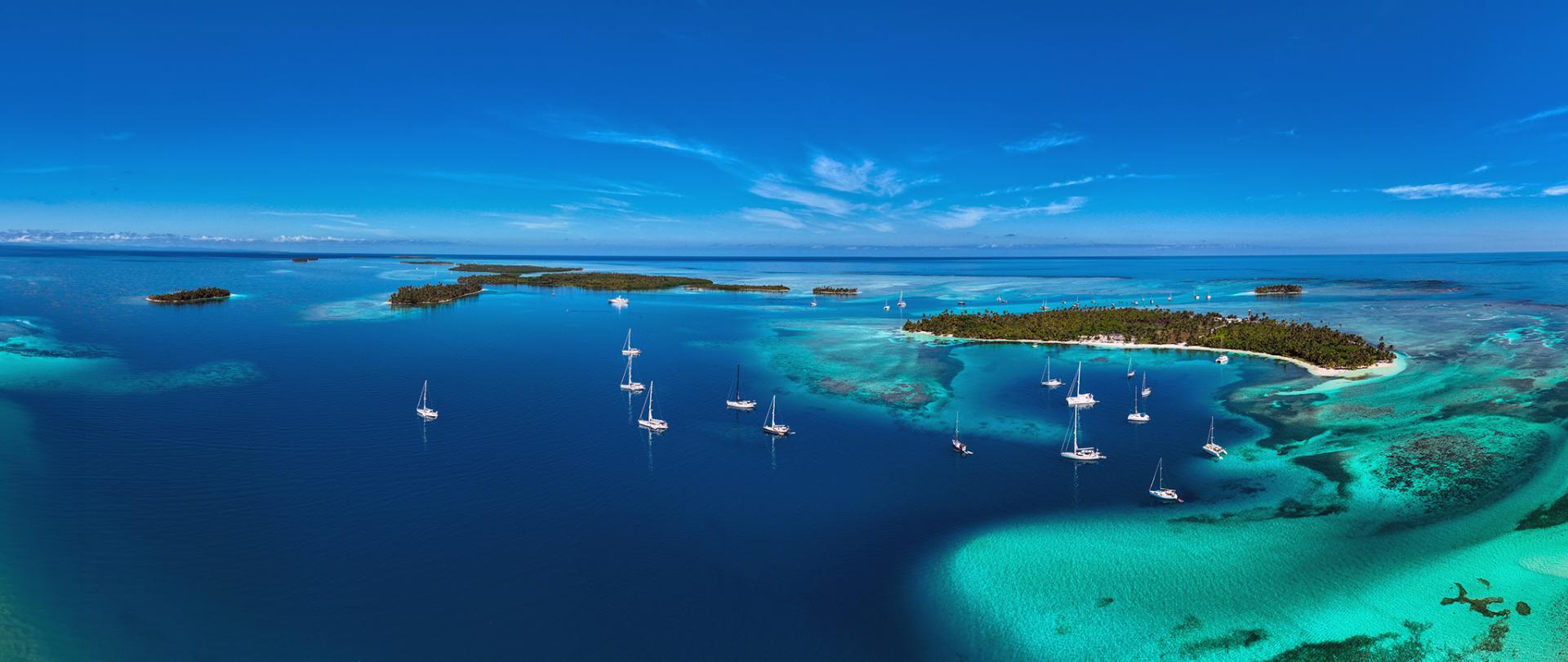
Oyster World Rally
An enriching circumnavigation of discovery, of magnificent experiences and exhilarating ocean crossings
Imagine embarking on the sailing adventure of a lifetime. Exploring remote destinations of rare beauty, unique places to immerse in new cultures and captivating ecosystems.
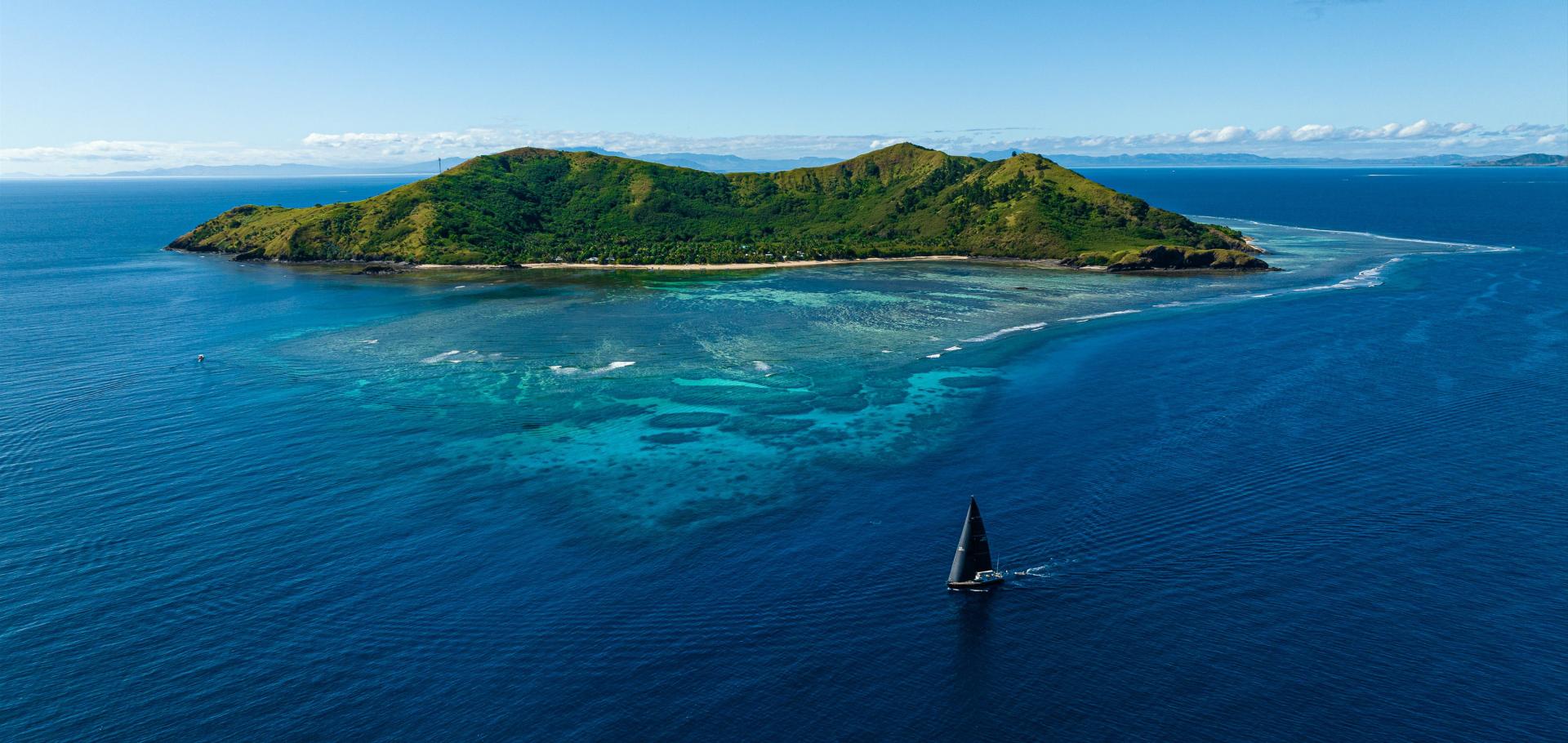
Experience unparalleled levels of luxury, comfort and safety, with the reassurance of uncompromising, personalised service and support from Oyster’s world-class Rally team.
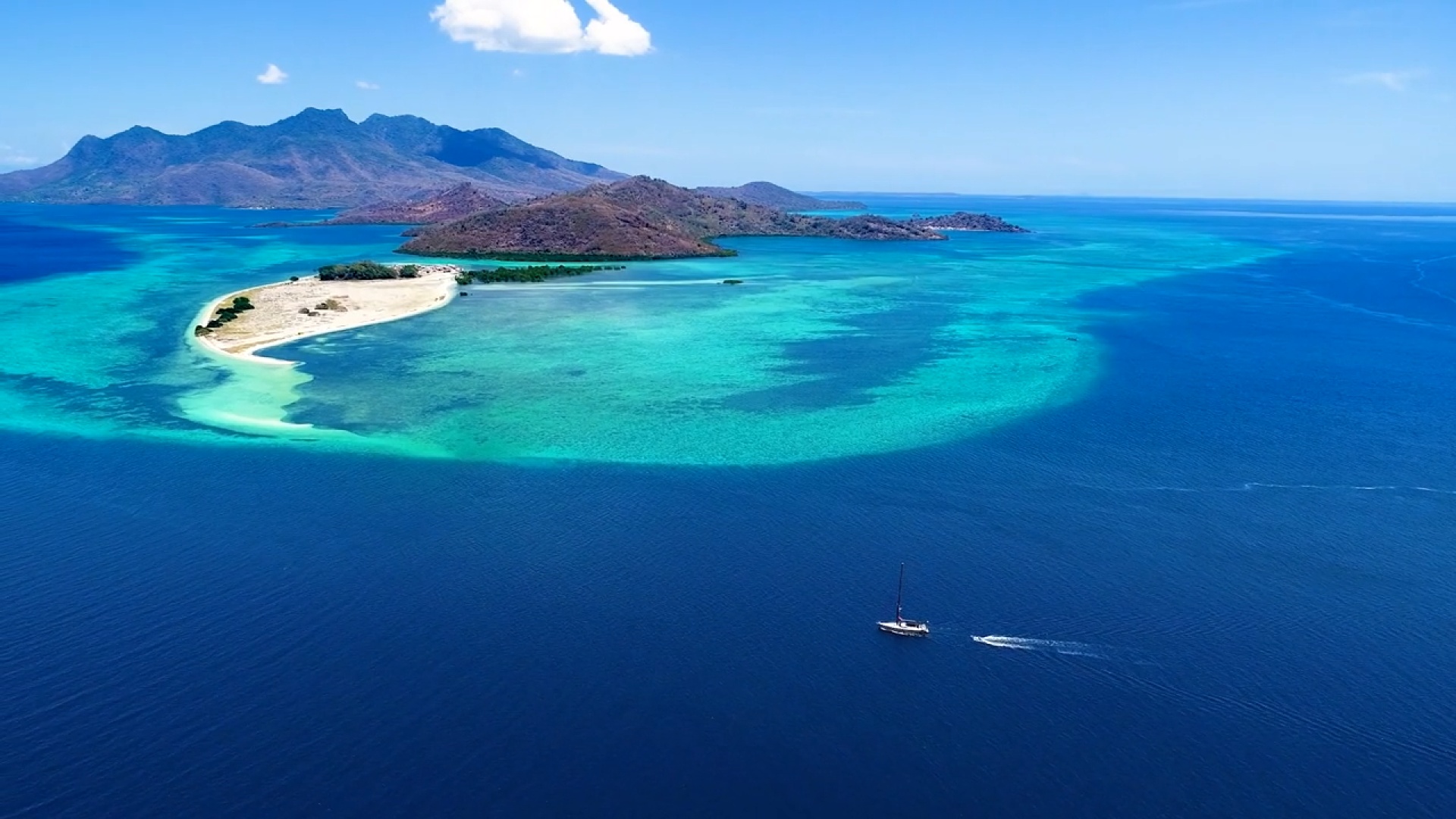
The Oyster World Rally – the ultimate circumnavigation of the world.
Entries are open for the Oyster World Rally 2028-29.
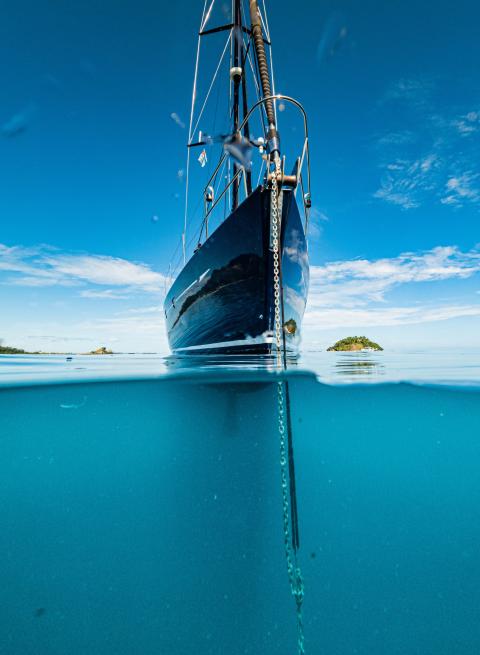
Find out more
Rally Information

OYSTER WORLD RALLY ROUTE MAP
Rally Live 2024-25
Engaging, enriching, empowering
Rally packages.
For everyone taking part in the Oyster World Rally, the Adventurer package comes as standard and provides everything required to enjoy the voyage of a lifetime.
Relish the magnificence of every destination and beyond with the Explorer package. Enjoy unparalleled concierge service and personalised luxury experiences.
Indulge in the sailing adventure of a lifetime with the Voyager package. Every comfort and convenience precisely composed, every detail considered.
Oyster yachts
Explore our award-winning, rally-proven fleet of luxurious bluewater sailing yachts
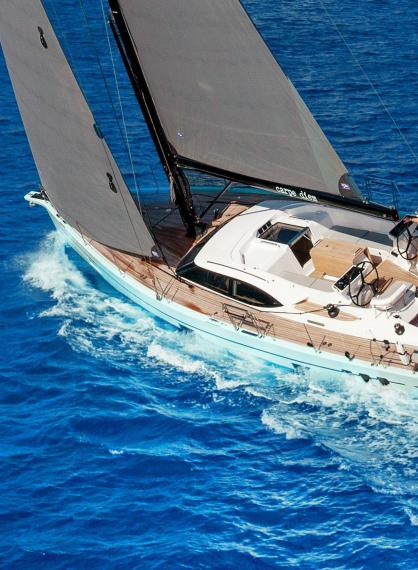
Experience the sailing adventure of a lifetime in real-time. The Oyster World Rally 2024-25
RALLY STORIES
Inspiring stories and adventures
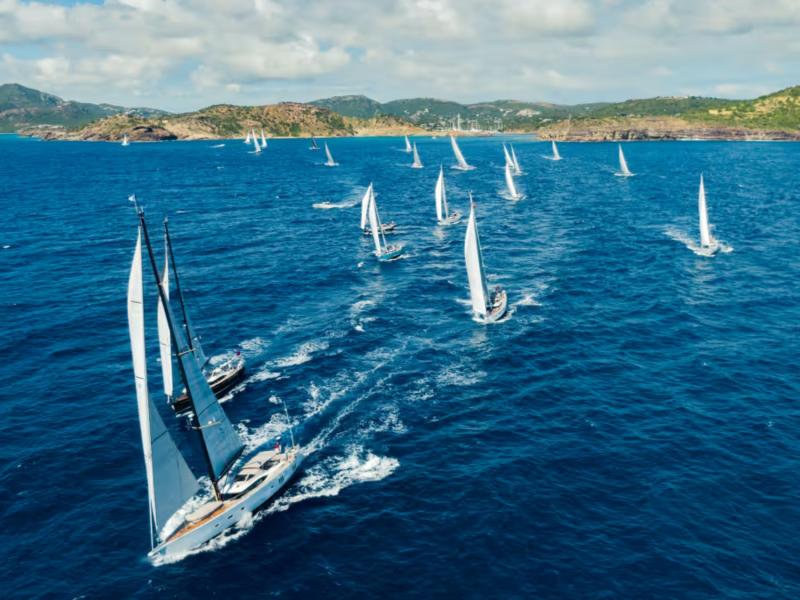
RALLY INFORMATION
Discover what sets the Oyster World Rally apart
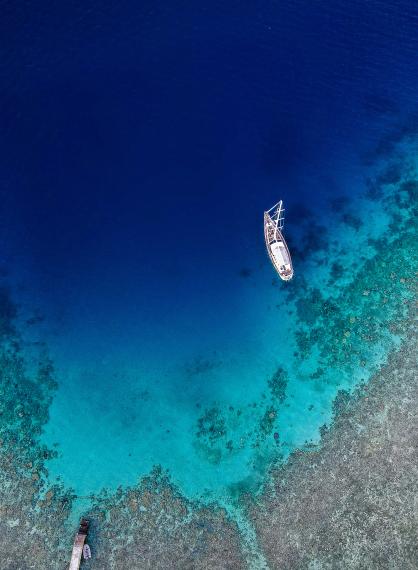
FIND OUT MORE
THE VOYAGE OF A LIFETIME
Join Formula 1 legend Eddie Jordan as he relives his voyage of a lifetime on the Oyster World Rally.
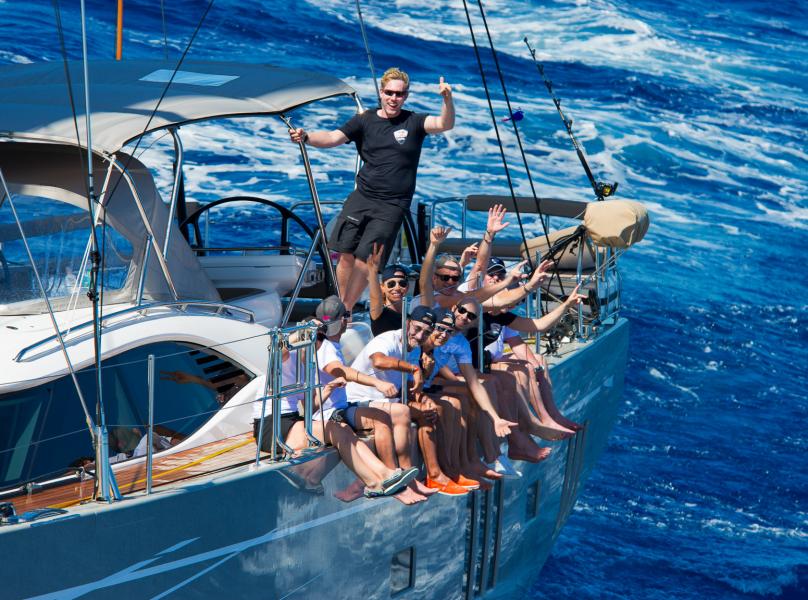
Frequently asked
Yes, you must own an Oyster Yacht to enter. If you are not yet an owner, we would be delighted to build you a new boat or help you find a brokerage Oyster.
The Oyster World rally is an event that sails around the world. All entries must sign up for the whole rally.
The rally entry fee is calculated according to the length of your yacht. Details of costs can be found in the Notice of Event.
Yes, due to event logistics and average yacht speed, the minimum yacht length that can enter the Oyster World Rally is 45 feet.
The answer very much depends on if you already own an Oyster yacht, whether you plan to sail her yourself or take professional crew, and your sailing experience. If you are an Oyster owner and plan to sail her yourself and at least one member of crew has their RYA Yachtmaster Offshore qualification, we recommend at least two years of preparation and positioning for the Rally. Bear in mind Oyster’s Rally training programme runs for 18 months prior to the start of the event.
If you are considering building a new Oyster yacht for the Rally we recommend a three to four years preparation period. Typically, you should allow two years for the purchase, specification and build process. This period could easily be longer if there are extended waiting times on build slots for certain models. Once she is in the water, we recommend at least 12 months to shake down and familiarise yourself with your Oyster. You then need to factor in time to position her for the Rally start in Antigua, which typically means late September before the start in January, dependant on your home port.
For those considering a Brokerage boat for the Rally, we recommend a two to three years preparation period. This allows for a minimum of 12 months to find and purchase your ideal yacht, but it can take much longer. Then factor in the inevitable refit to meet your requirements. This will be your home for at least 20 months so it’s important she meets your every need. Dependant on waiting times, a typical Rally refit can take three to nine months. Once she is Rally-ready, we recommend a familiarisation period of 12 months to fully understand sailing style and features.
Other considerations worth factoring into your preparation timescales include sail training and qualifications; planning and sourcing your spares (Oyster After Sales can help here); ensuring you have the correct charts and pilot books for the Rally route; and deciding how you want to personalise your adventure on or off the Rally route, which Oyster’s Concierge Team would be delighted to help with.
We do not allow chartered yachts to enter the Rally, you must own your Oyster yacht.
The next Oyster World Rally sets sail on 18 January 2026 from Antigua.
Yes, once your entry has been accepted, there is an extensive pre-rally training programme run by our events team and suppliers, as well as regular interactive meetings and social get-togethers.
The World Rally lasts for 16 months and is designed to make the most of global weather and wind patterns.
Yes, a member of the Technical, Logistics and Concierge team will greet the fleet at all major destinations, offering services and support.
Yes, Oyster’s dedicated support team is included in the entry fee and they will be on hand to help you from the moment you sign up, to the day you become a circumnavigator.
Oyster have run three successful World Rallies in 2013, 2017, 2022. The Oyster World Rally 2024-25 is currently running. There are future rallies scheduled for 2026 and 2028.
Oyster Brokerage for the Rally
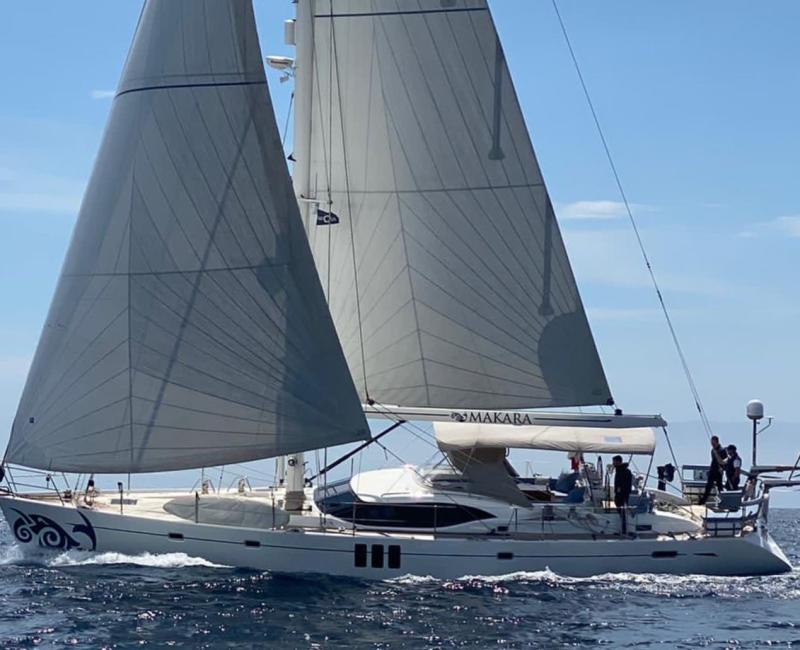
OYSTER 625 - 2013
£ 1,395,000 VAT Excluded
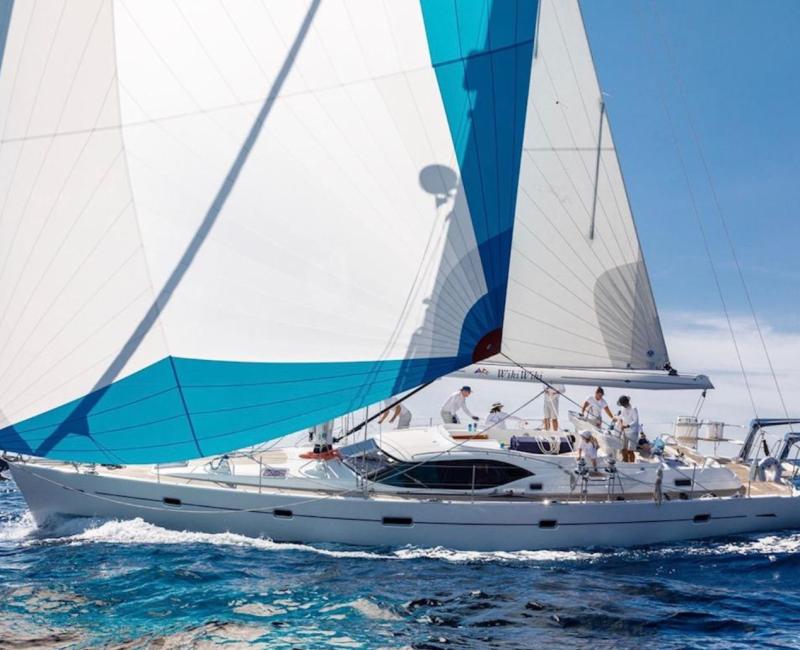
OYSTER 575 - 2010
£ 750,000 VAT Excluded
Eastern Mediterranean
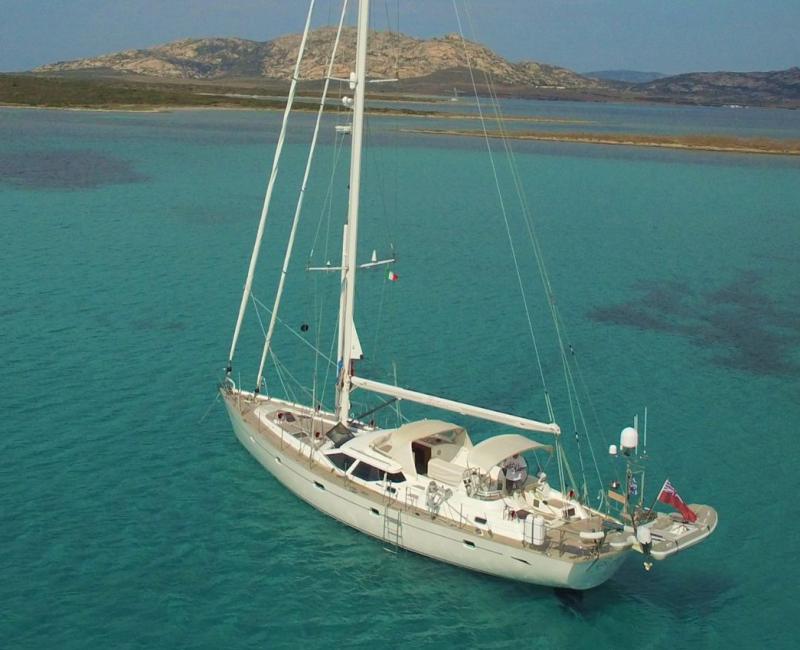
OYSTER 62 - 2003
€ 830,000 VAT Paid
Sign up to our newsletter
Be the first to hear about new launches, exclusive events and all things Oyster
© 2024 OYSTER YACHTS
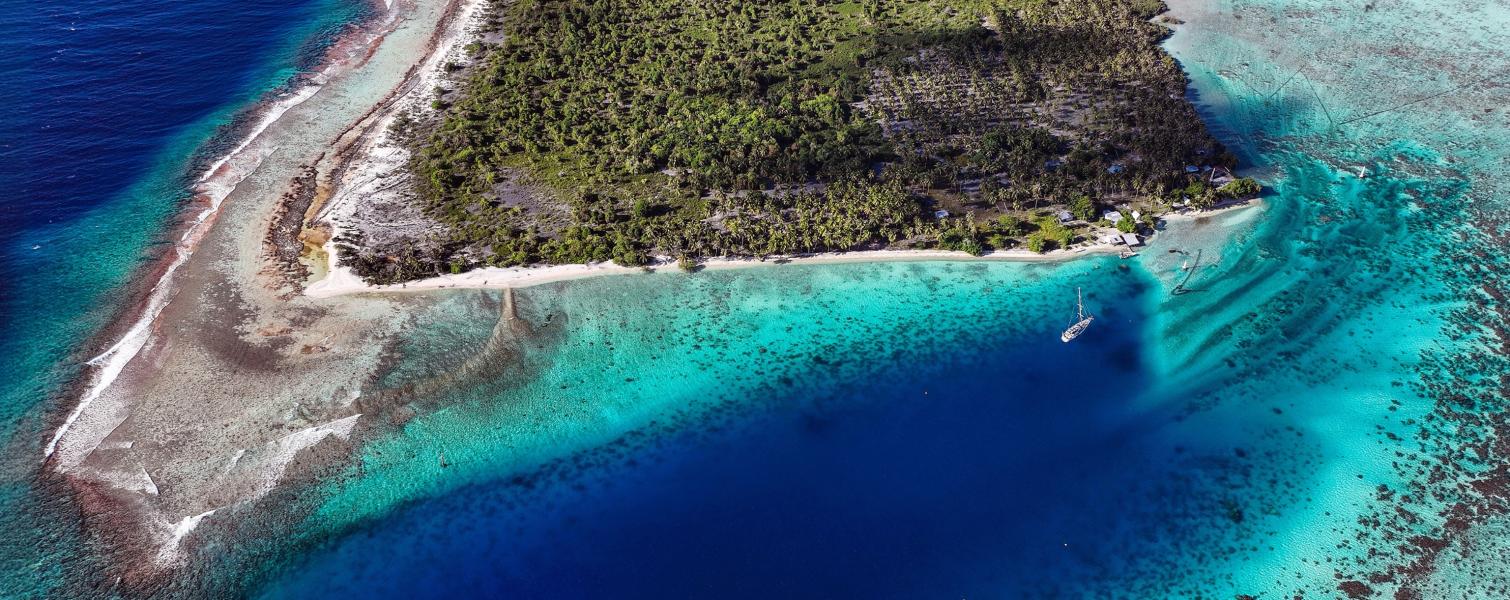
OYSTER WORLD RALLY
Entries for the Oyster World Rally 2028-29 are now open. Embark on the sailing adventure of a lifetime
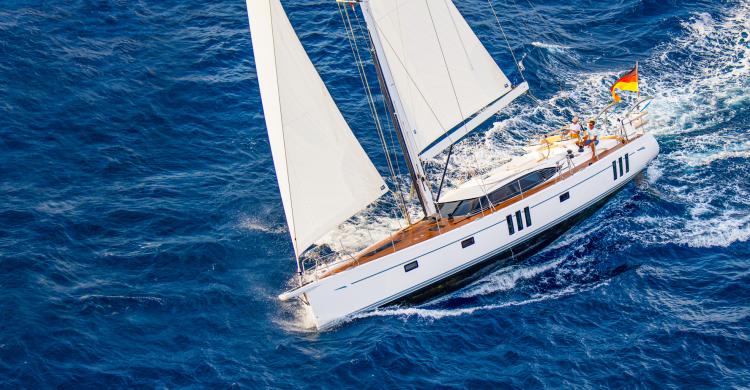
The new 565 Series II
The pursuit of perfection continues
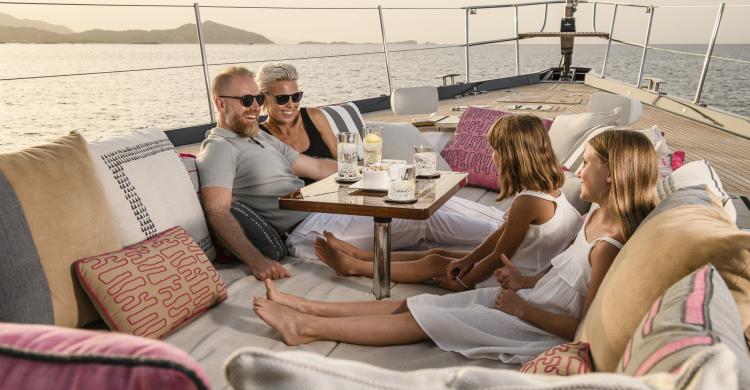
Oyster Charter
Experience exhilarating sailing, luxury and style on an Oyster charter

New 565 Series II
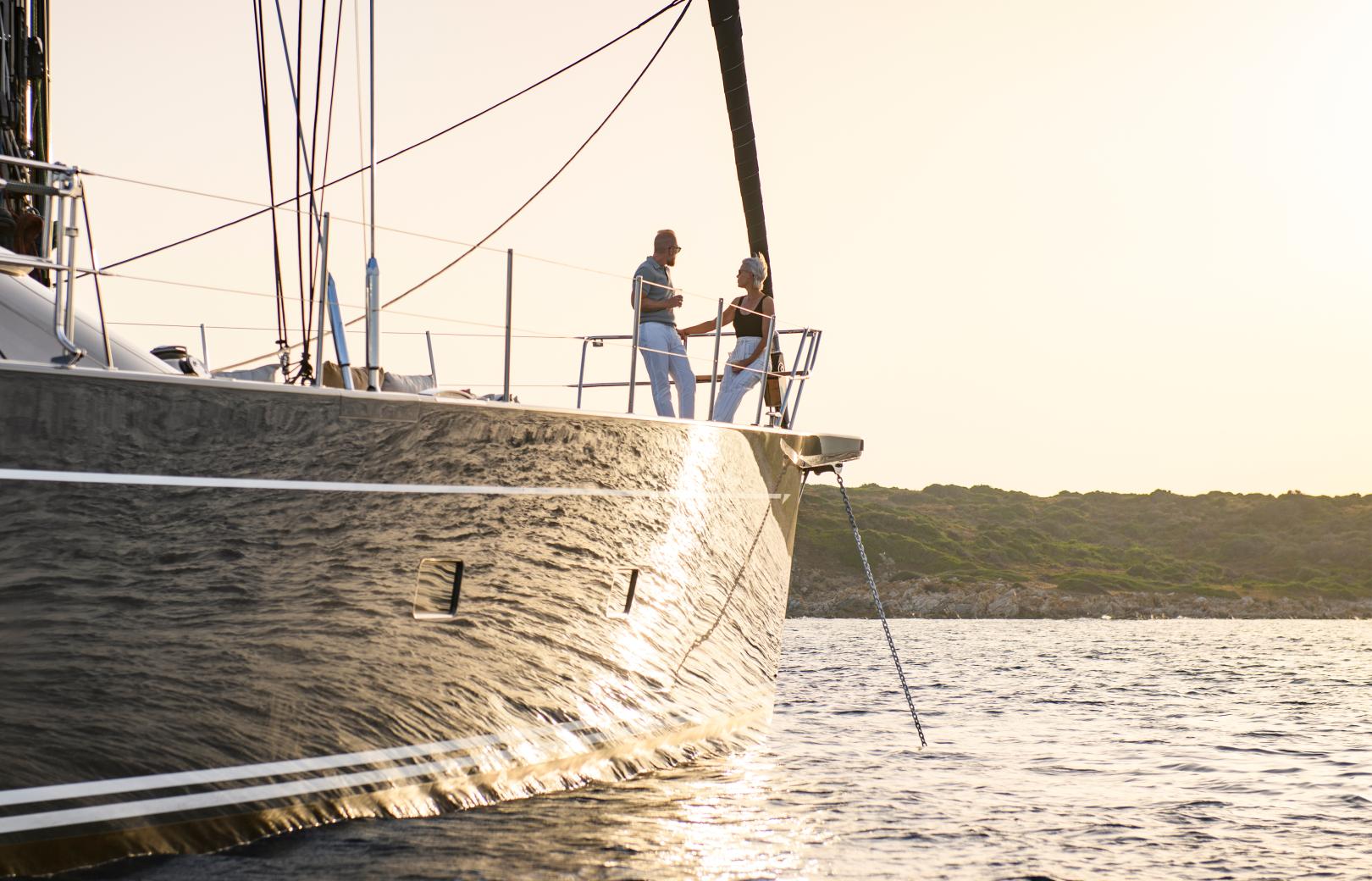
LUXURY CHARTER
Experience exhilarating sailing, luxury and style on an oyster charter. personal, exclusive and uniquely oyster.
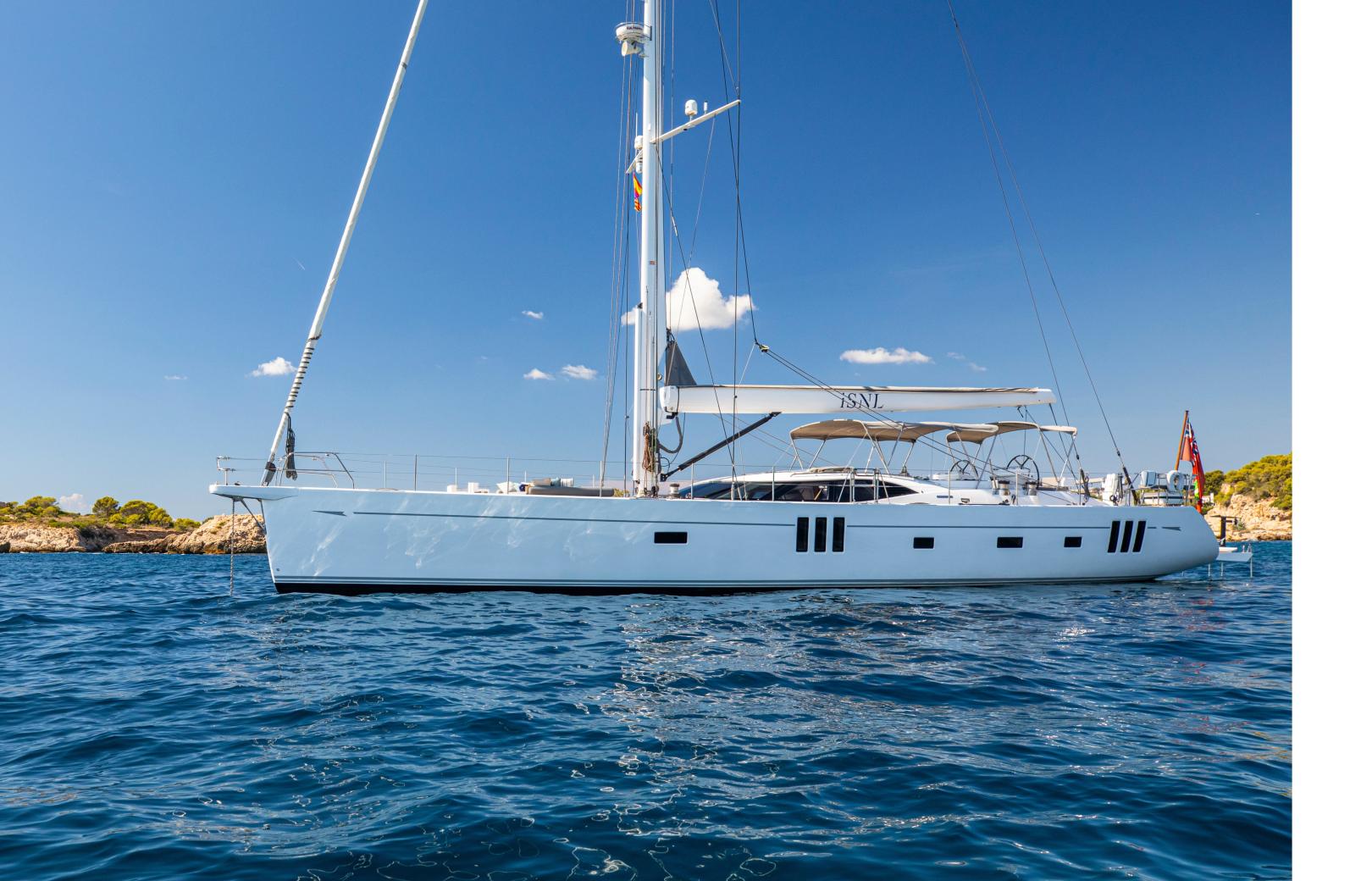
Oyster 825 iSNL
Discover this exceptional late model 825 with a unbeatable spec and a bespoke layout.
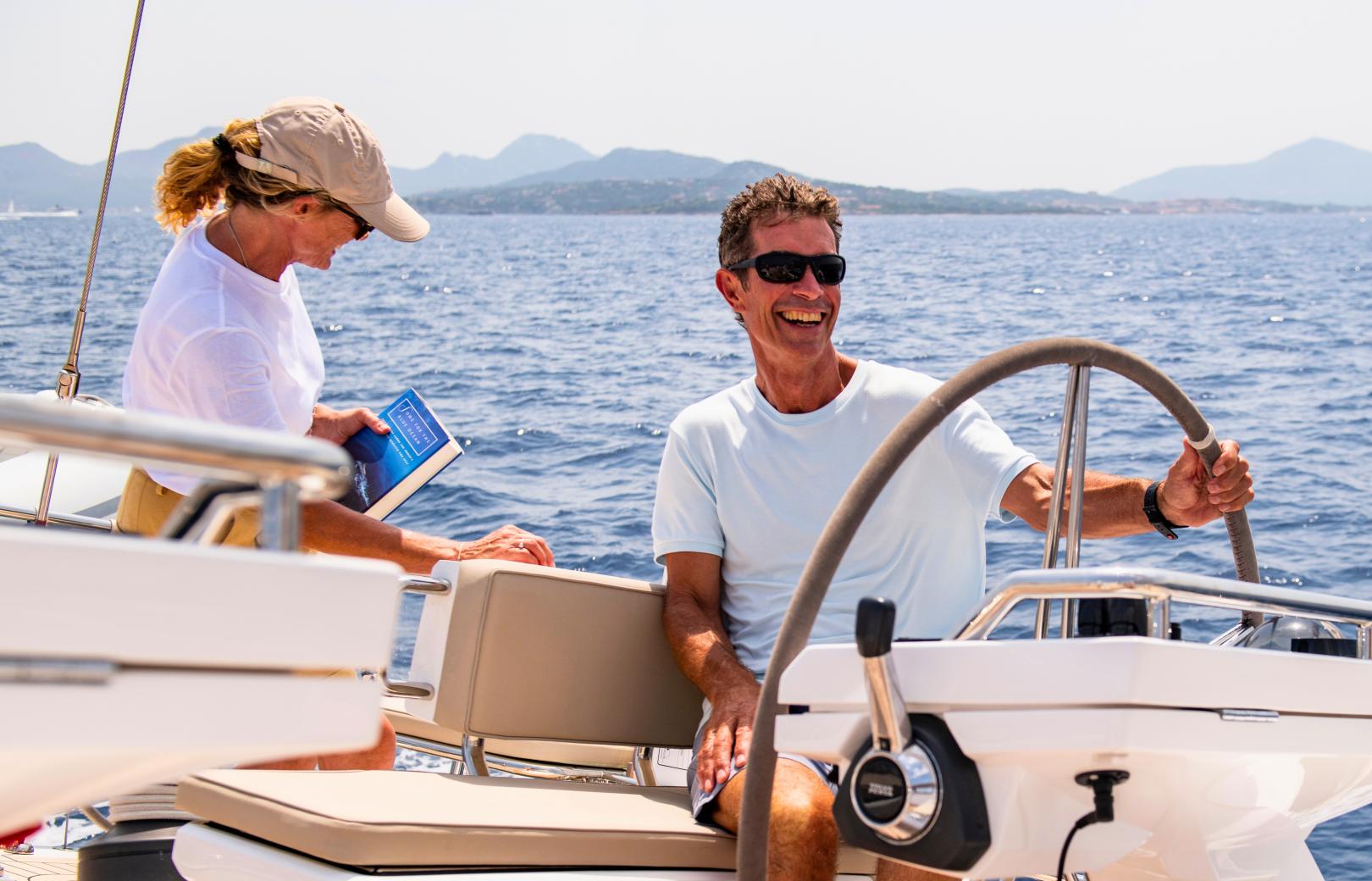
oyster ownership
Personalised care, unforgettable experiences and lifelong yacht support.
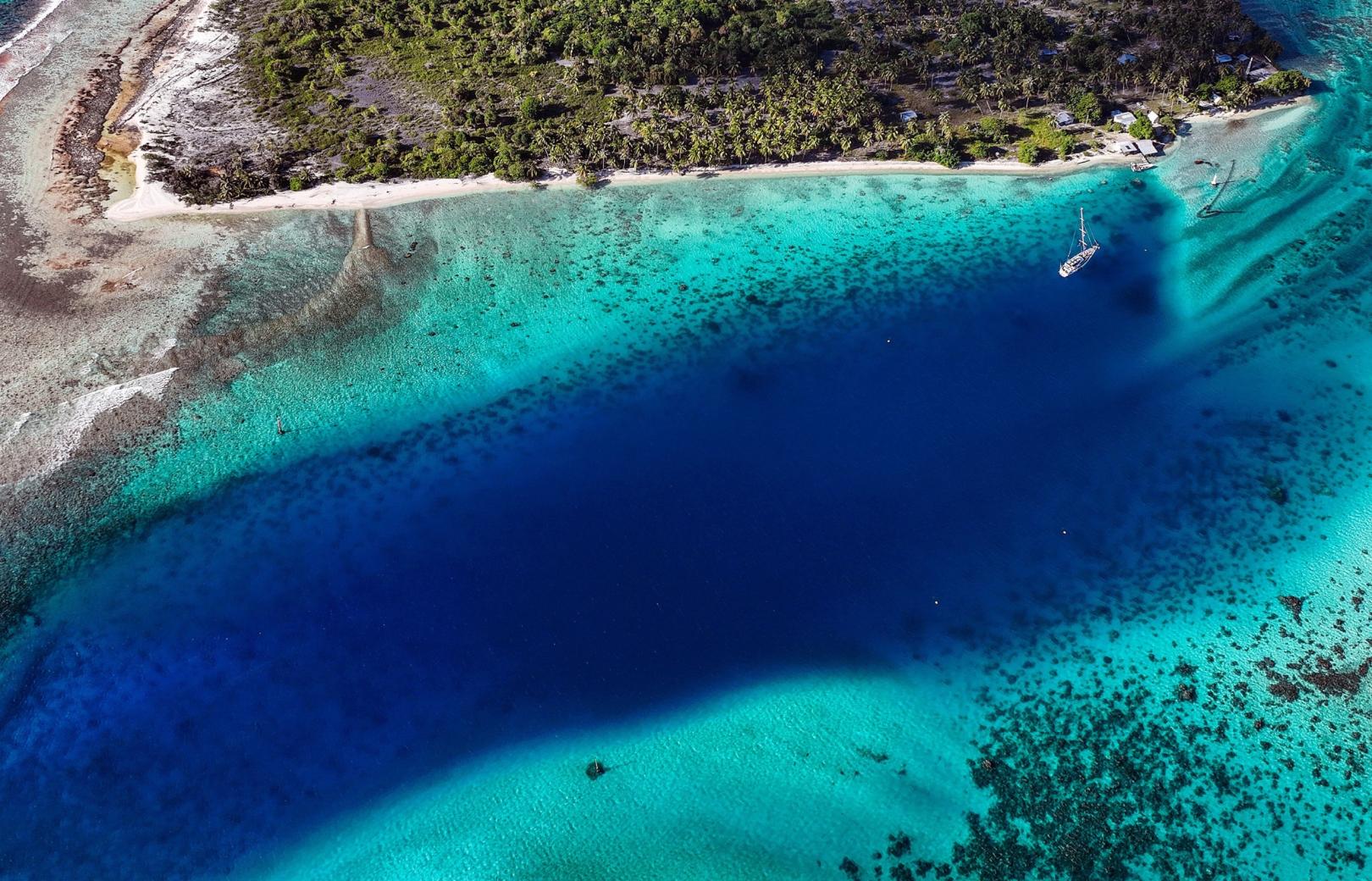
ENTRIES OPEN
Embark on the sailing adventure of a lifetime. entries are now open for the oyster world rally 2028-29.
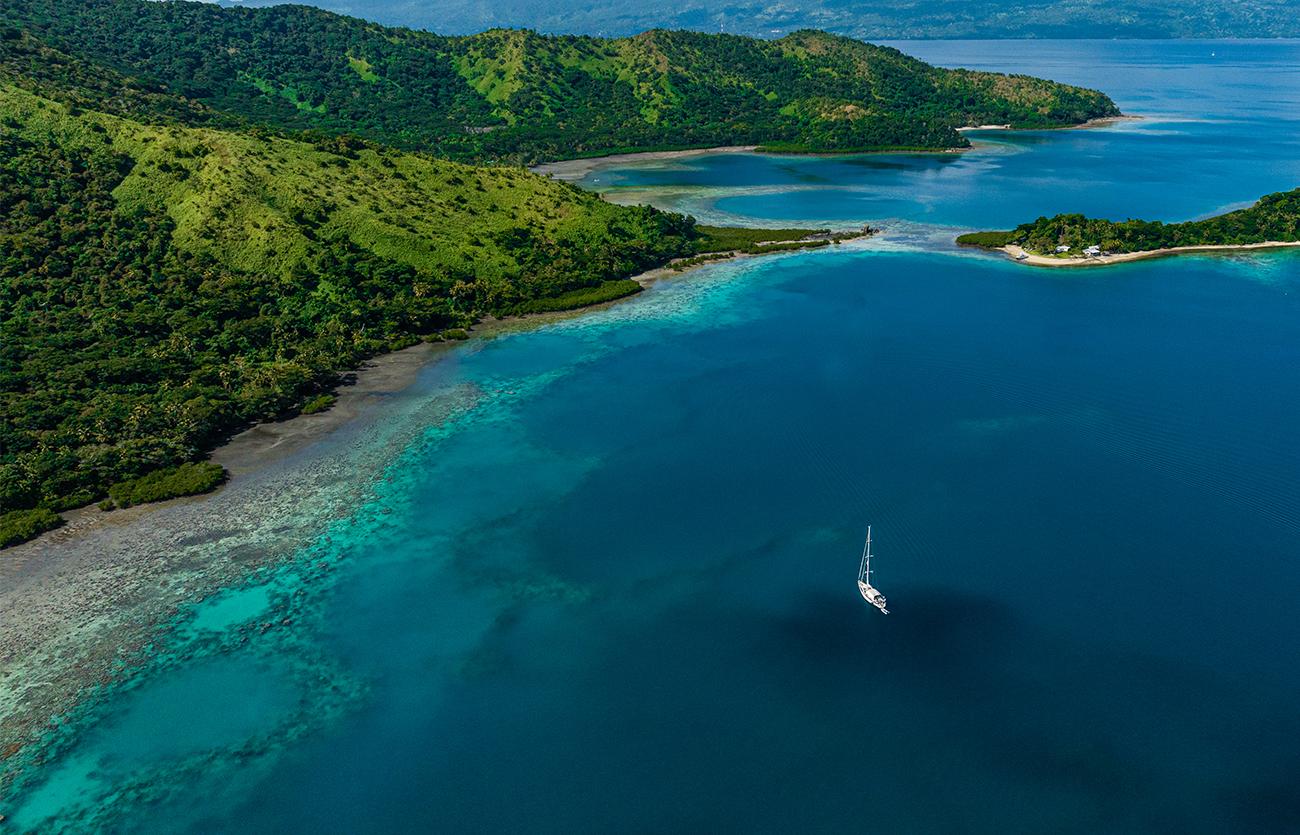
Follow the Oyster World Rally 2024-25 fleet live
Winner of European Yacht of the Year 2023. She is a new breed of luxury 50 foot yacht, offering effortless shorthanded sailing capability.
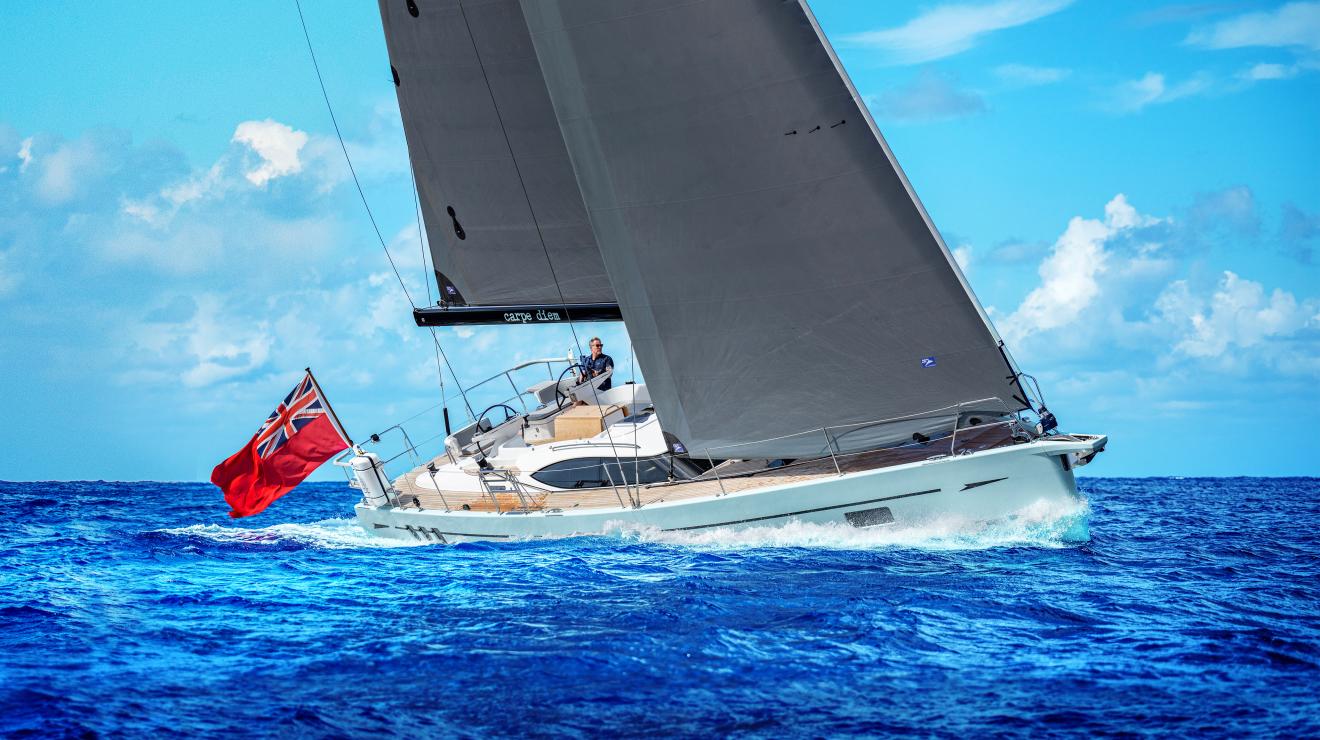
A magnificent, award-winning sub 60 foot sailing yacht, offering luxurious living space and outstanding shorthanded sailing capability.
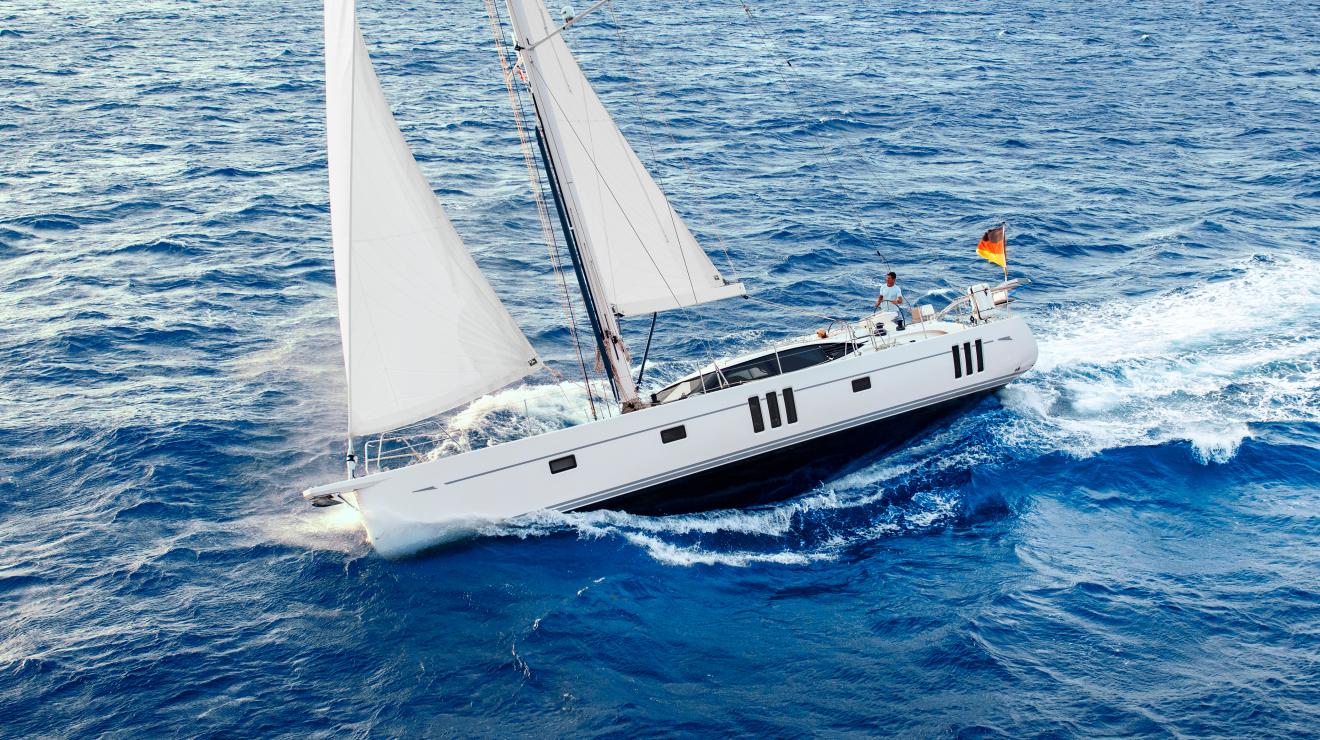
A beautifully proportioned 60 foot, luxury liveaboard bluewater cruiser, offering effortless shorthanded sailing capability.
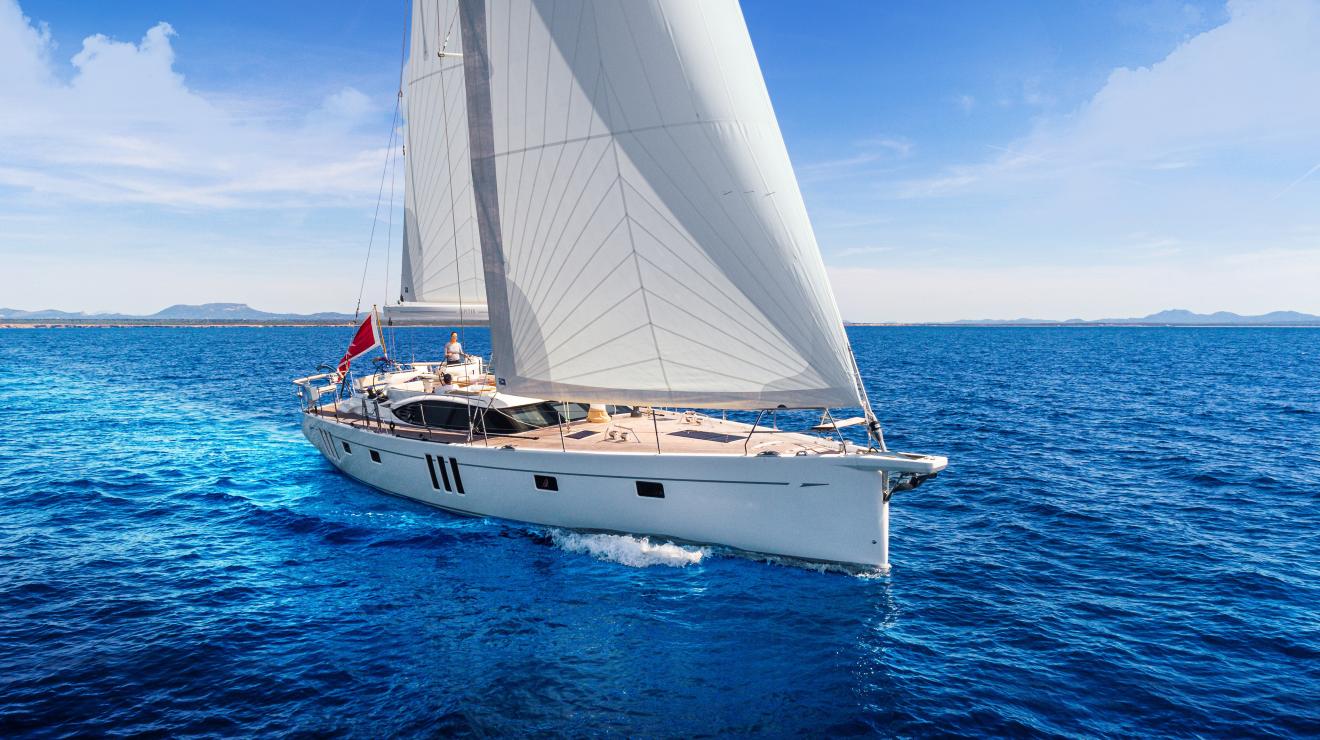
A superb sub 70 foot ocean sailboat offering versatile luxury living space and impeccable sailing performance.
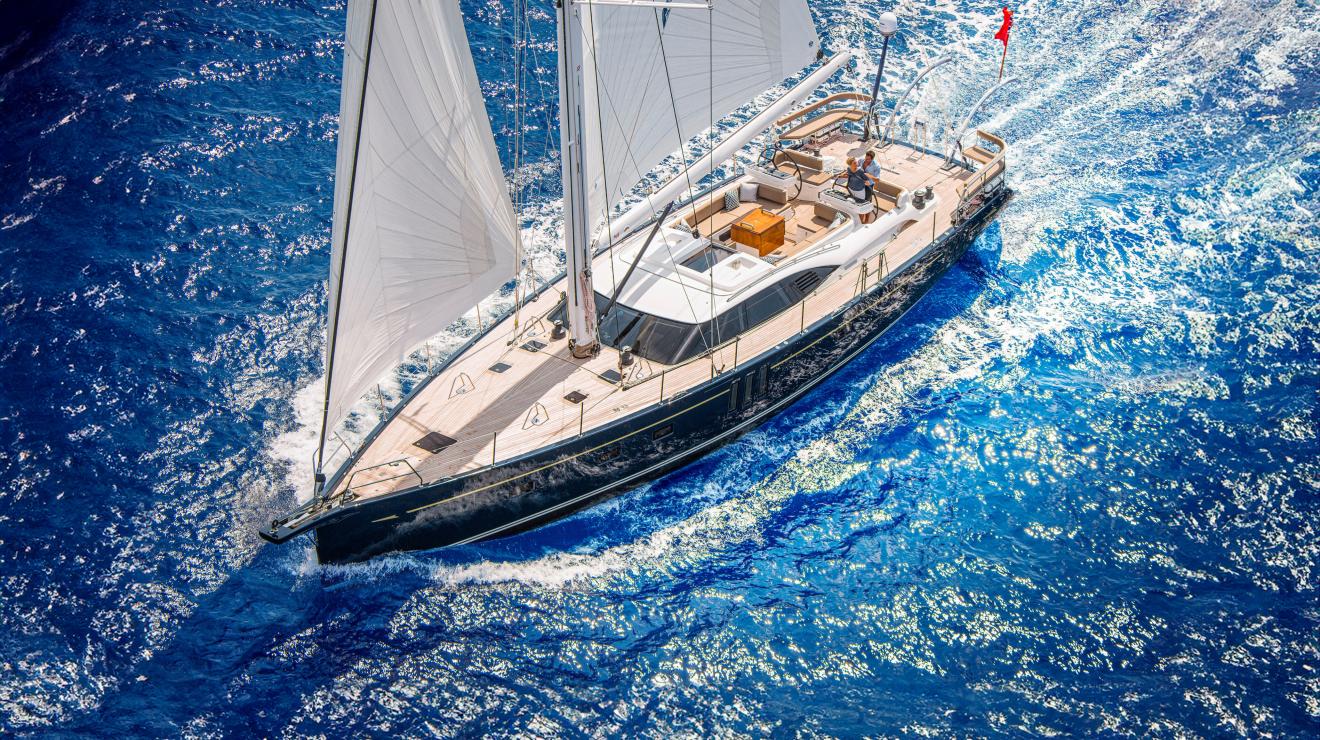
An inspired 75 foot yacht, offering infinite configuration options, generous luxury living space and flexible crew quarters.
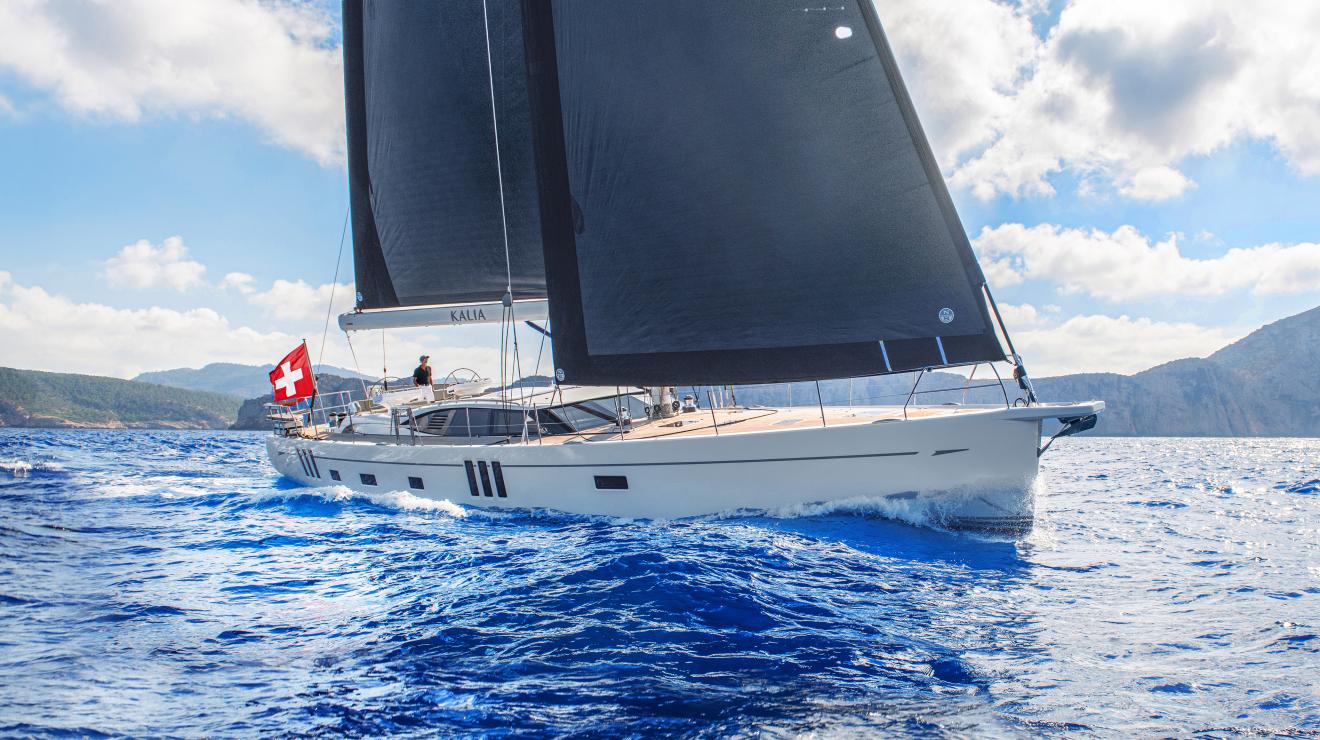
Oyster 885SII
The remarkable, iconic 90 foot sailboat, perfect for relaxed luxury voyages of discovery.
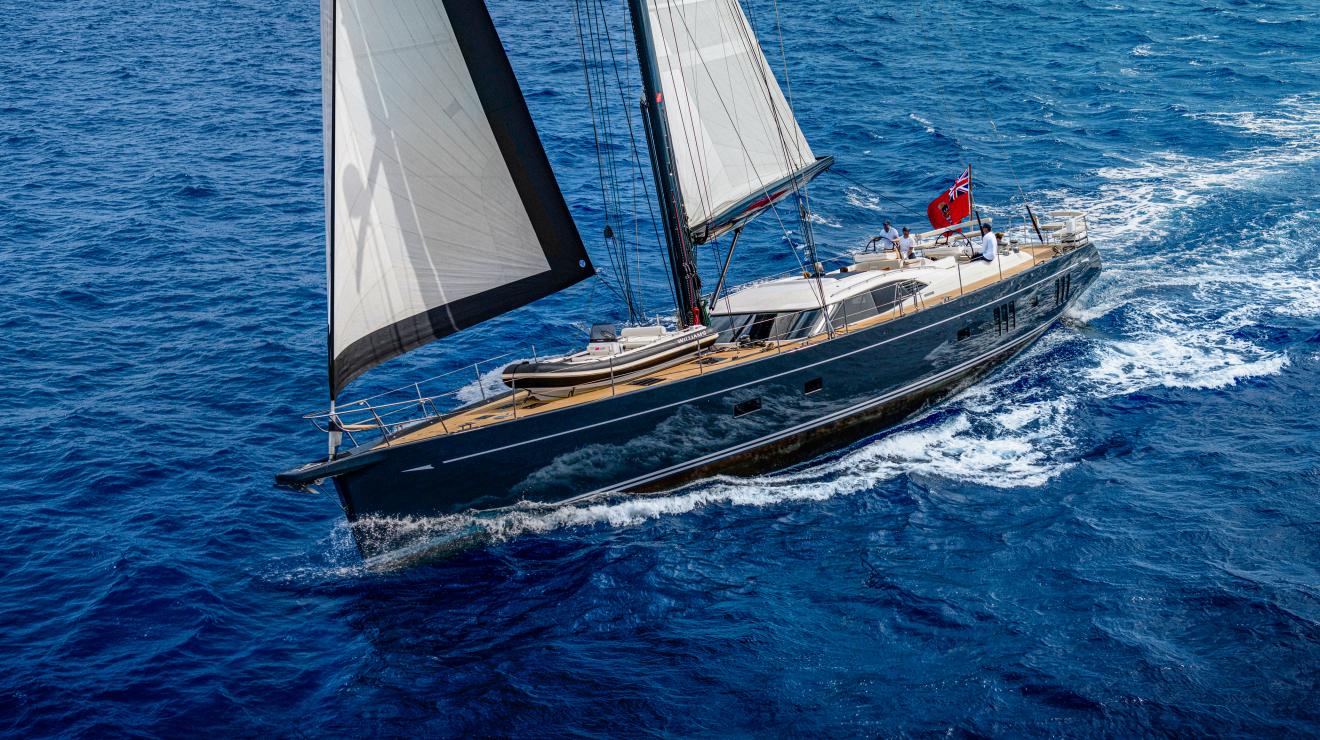
First name *
Last name *
Phone number *
Country/Region *
Attach CV *
Attach covering letter
Current occupation
LinkedIn profile
- New Sailboats
- Sailboats 21-30ft
- Sailboats 31-35ft
- Sailboats 36-40ft
- Sailboats Over 40ft
- Sailboats Under 21feet
- used_sailboats
- Apps and Computer Programs
- Communications
- Fishfinders
- Handheld Electronics
- Plotters MFDS Rradar
- Wind, Speed & Depth Instruments
- Anchoring Mooring
- Running Rigging
- Sails Canvas
- Standing Rigging
- Diesel Engines
- Off Grid Energy
- Cleaning Waxing
- DIY Projects
- Repair, Tools & Materials
- Spare Parts
- Tools & Gadgets
- Cabin Comfort
- Ventilation
- Footwear Apparel
- Foul Weather Gear
- Mailport & PS Advisor
- Inside Practical Sailor Blog
- Activate My Web Access
- Reset Password
- Customer Service

- Free Newsletter

Dufour 44 Used Boat Review
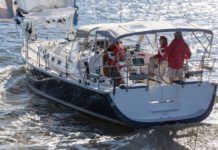
Blue Jacket 40 Used Boat Review

Catalina 270 vs. The Beneteau First 265 Used Boat Match-Up

Ericson 41 Used Boat Review

How to Create a Bullet-Proof VHF/SSB Backup

Tips From A First “Sail” on the ICW

Tillerpilot Tips and Safety Cautions

Best Crimpers and Strippers for Fixing Marine Electrical Connectors
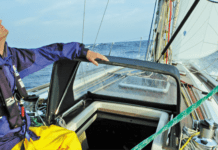
Solving the Dodger Dilemma

Polyester vs. Nylon Rode

Getting the Most Out of Older Sails

How (Not) to Tie Your Boat to a Dock

Fuel Lift Pump: Easy DIY Diesel Fuel System Diagnostic and Repair

Ensuring Safe Shorepower

Sinking? Check Your Stuffing Box
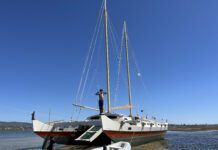
Why Choose the Wharram Design?
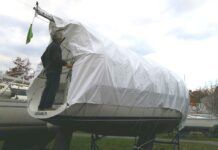
Winterizing: Make It Easy With Checklists

Boat Improvements for the Technically Illiterate

What Do You Do With Old Fiberglass Boats?

Stopping Holding-tank Odors

Giving Bugs the Big Goodbye

Galley Gadgets for the Cruising Sailor


The Rain Catcher’s Guide

Sailing Gear for Kids

What’s the Best Sunscreen?

UV Clothing: Is It Worth the Hype?

Preparing Yourself for Solo Sailing

R. Tucker Thompson Tall Ship Youth Voyage

On Watch: This 60-Year-Old Hinckley Pilot 35 is Also a Working…

On Watch: America’s Cup

On Watch: All Eyes on Europe Sail Racing

Dear Readers
- Inside Practical Sailor
The Best Sailboats for the High Seas?
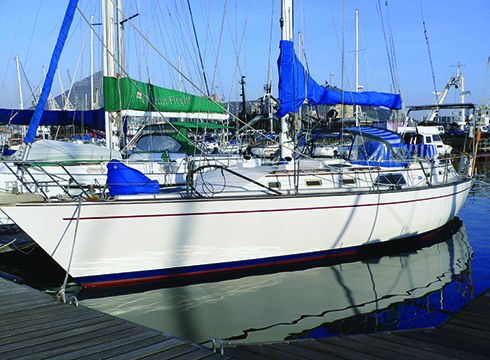
At the St. Petersburg Boat Show month last month, I had the pleasure of seeing delivery skipper and author John Kretschmers presentation on what he called sailboats for a serious ocean. I have reservations about any ideal boat list, but Kretschmer, who reviews boats for Sail Magazine and whose most recent book Sailing a Serious Ocean is available in our online bookstore , has the ideal background for this sort of work, and a list like this is undeniably helpful for wannabe cruisers who need a place to start their search.
I certainly wouldnt limit my search to boats on such a list, but by paying careful attention to the pros and cons of each, you can find something that suits your own aspirations.
Here are the boats Kretschmer suggests: Contessa 32, Pacific Seacraft 34, Pretorien 35, Cape Dory/Robinhood 36, Valiant/Esprit 37, Prout Snowgoose 37, Alajuela 38, Privelege 39, Freya 39, Passport 40, Caliber 40, Baba 40, Hallberg Rassy 42, Taswell 43, Hylas 44, Norseman 447, Beneteau 456, Outbound 44, Hylas 46, Kaufman 47, Tayana 48, Hylas 49, Amel Maramu 53, and the Sundeer 60/64. For a brief capsule summary of each, be sure to check out his website.
The list is hardly definitive. There are plenty of good boats that arent featured, and some of these would be ill-matched for the wrong sailor-Kretschmer clearly pointed this out during his talk. I like how the list presents a good cross-section of the various shapes and sizes for a boat in this category. For example, Kretschmer includes the Prout Snowgoose and Steve Dashews Sundeer 60, boats that, notwithstanding their successful record at sea, fill an outlying niche.
If I were going to expand the list, one of the heavier-displacement microcruisers like those I blogged about would be a nice addition. Although I would be wary of promoting even the most formidable of this breed as well-suited for a serious ocean, John Neale of Mahina Tiare Expeditions includes one of them, the Dana 24, on his own list of recommend cruising boats . Neales much broader list of boats is accompanied by a very helpful discussion of design elements to consider.
What got me thinking about formidable cruising boats was our series of reports o n sailboat construction , focusing specifically on structural details. Although there are plenty of excellent coastal cruisers on the market, once you start talking about offshore duty, scan’tlings (the dimensions for structural components) take on far more importance.
A few years ago we touched on this subject in our Mailport section, encouraging readers to suggest their own nominees for a list of what we called at the time, tough boats, vessels that were built to take a beating, requiring minimal care and upkeep.
Here are some of the boats that were suggested from our readers: Mariner 36, Cal 34, Morgan 43, Swan 43, Bermuda 40, Island Packet 26, Mariner 47, LeComte Northeast 38, Westsail 32, Dana 24, J/35, and the CSY 44.
Id be interested in hearing of other nominees for this list, or other good resources for sailors looking for a short list of good offshore boats.
For those who are frustrated to find that their own ideal boat isn’t on anybodys list, I wouldnt be too miffed. The best line Ive heard in a while on this topic came from Steve Callahan, the author of the survival classic Adrift , who gave a presentation at the Port Townsend Wooden Boat Show . When I asked Steve, who has sailed extensively on both multihulls and monohulls, what type of boat he preferred, he said, quite seriously. Well, at the end of the day, the best cruising boat is the one that you are on.
RELATED ARTICLES MORE FROM AUTHOR
On watch: this 60-year-old hinckley pilot 35 is also a working girl.
Interesting list. I am fond of Hylas of which you chose three models. However, I am suspect of their yard and construction techniques and do not have confidence that they are as strong as they are beautiful. Only one Hallberg-Rassy was selected, which is a far more robust and dry sailing boat than the Hylas. Passports make a good boat as does Cape Dory and several others on your list. Didn’t four sailors die on a Beneteau in 2018? Over all it is a decent list.
https://metro.co.uk/2018/04/25/last-pictures-doomed-yacht-cheeki-rafiki-sank-killing-four-british-sailors-7497805/
I believe this is the accident you’re talking about in which a Beneteau and it’s bolted on keel parted company.
Almost all of the sailing clubs in San Diego rent Beneteaus out. They are a decent coastal sailboat. I have a couple friends who have even made the crossing to Maui in them..not me, not ever. I consider them a living room boat. Having said that, I am certainly no expert so its just my opinion. If I am crossing an ocean I want a capable kindly strong boat with redundancy built into critical systems.
Curious to think what people think about the early 70s Swan 43 as a cruising boat for a couple with occasional guests for a round the world trip? I have an S&S 30 which is too small but I do have some bias towards their designs. Add a watermaker and some power generation and off you go… Any thoughts?
Are Motor Sailors like the Nauticats or Fishers ocean worthy ( if their pilot house windows and sliding doors are lifeboatified ? )
Walt Schulz’s Shannon 43 is a beautiful, sea kindly, comfortable and sturdy bluewater boat. Walt had not only the ICW and Bahamas in mind when he designed and built 52 of them. He designed for ocean cruising. He believes his boats should outlive him and still sailing for generations. We sailed the Chesapeake, Bahamas, Caribbean and Pacific to Australia on a Shannon 43 ketch. She took great care of us and is still turning heads.
Great article! John Kretchmer is one of my fave modern day sailors. While there is only one Crealock design on John’s list, and the Dana is added on John Neale’s list, I was surprised not to see a Crealock/ Pacific Seacraft 37 mentioned. But there are so many great serious off shore boats, it’s hard to narrow it down to 10. Here’s a few to think about. Cape George Cutter 36. Biscay 36, tradewind 35, Rustler 36, Nicholson 31 (never talked about) and 32. Seldom seen on top 10 lists, but great boats. Thanks for the article.
Great comment and interesting to note that the first four of your additions are those currently entered in the 2022 Golden Globe Race – kind of the definition of a blue water boat.
Hey! I know this is somewhat off-topic however I needed to ask. Does operating a well-established blog like yours take a massive amount work? I am completely new to writing a blog but I do write in my journal everyday. I’d like to start a blog so I will be able to share my experience and feelings online. Please let me know if you have any kind of recommendations or tips for new aspiring blog owners. Thankyou!|
LEAVE A REPLY Cancel reply
Log in to leave a comment
Latest Videos
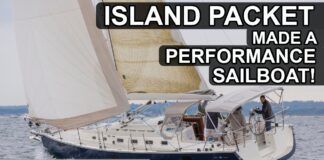
The Performance Sailboat from Island Packet: Blue Jacket 40 Boat Review

Top 3 Winter Boat HACKS!

Cabo Rico 34 Boat Review

Super Shallow Draft Sailboat: The Leeboard Sharpie
Latest sailboat review.
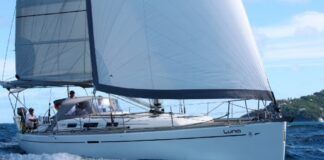
- Privacy Policy
- Do Not Sell My Personal Information
- Online Account Activation
- Privacy Manager

Home » Blog » Buy a boat » 5 best small sailboats for sailing around the world
5 best small sailboats for sailing around the world
By Author Fiona McGlynn
Posted on Last updated: April 19, 2023

A small sailboat can take you big places
Small sailboats are the ticket to going cruising NOW — not when you retire, save up enough money, or find the “perfect” bluewater cruising boat. In fact, it’s the first principle in Lin and Larry Pardey’s cruising philosophy: “Go small, go simple, go now.”
Small yachts can be affordable, simple, and seaworthy . However, you won’t see many of them in today’s cruising grounds. In three years and 13,000 nautical miles of bluewater cruising, I could count the number of under 30-foot sailboats I’ve seen on one hand (all of them were skippered by people in their 20s and 30s).
Today’s anchorages are full of 40, 50, and 60-foot-plus ocean sailboats, but that’s not to say you can’t sail the world in a small sailboat. Just look at Alessandro di Benedetto who in 2010 broke the record for the smallest boat to sail around the world non-stop in his 21-foot Mini 6.5 .
So long as you don’t mind forgoing a few comforts, you can sail around the world on a small budget .

What makes a good blue water sailboat
While you might not think a small sailboat is up to the task of going long distances, some of the best bluewater sailboats are under 40 feet.
However, if you’re thinking about buying a boat for offshore cruising, there are a few things to know about what makes a small boat offshore capable .
Smaller equals slower
Don’t expect to be sailing at high speeds in a pocket cruiser. Smaller displacement monohulls are always going to be slower than larger displacement monohulls (see the video below to learn why smaller boats are slower). Therefore a smaller cruiser is going to take longer on a given passage, making them more vulnerable to changes in weather.
A few feet can make a big difference over a week-long passage. On the last leg of our Pacific Ocean crossing, our 35-foot sailboat narrowly avoid a storm that our buddy boat, a 28-foot sailboat, couldn’t. Our friend was only a knot slower but it meant he had to heave to for a miserable three days.

Small but sturdy
If a pocket cruiser encounters bad weather, they will be less able to outrun or avoid it. For this reason, many of the blue water sailboats in this list are heavily built and designed to take a beating.
Yacht design has changed dramatically over the last 50 years. Today, new boats are designed to be light and fast. The small sailboats in our list are 30-plus year-old designs and were built in a time when weather forecasts were less accurate and harder to come by.
Back in the day, boat were constructed with thicker fiberglass hulls than you see in modern builds. Rigs, keels, rudders, hulls and decks – everything about these small cruising sailboats was designed to stand up to strong winds and big waves. Some of the boats in this post have skeg-hung rudders and most of them are full keel boats.
The pros and cons of pocket cruiser sailboats
Pocket cruiser sailboats present certain advantages and disadvantages.
More affordable
Their smaller size makes them affordable bluewater sailboats. You can often find great deals on pocket cruisers and sometimes you can even get them for free.
You’ll also save money on retrofits and repairs because small cruising sailboats need smaller boat parts (which cost a lot less) . For example, you can get away with smaller sails, ground tackle, winches, and lighter lines than on a bigger boat.
Moorage, haul-outs, and marine services are often billed by foot of boat length . A small sailboat makes traveling the world , far more affordable!
When something major breaks (like an engine) it will be less costly to repair or replace than it would be on a bigger boat.

Less time consuming
Smaller boats tend to have simpler systems which means you’ll spend less time fixing and paying to maintain those systems. For example, most small yachts don’t have showers, watermakers , hot water, and electric anchor windlasses.
On the flip side, you’ll spend more time collecting water (the low-tech way) . On a small sailboat, this means bucket baths, catching fresh water in your sails, and hand-bombing your anchor. Though less convenient, this simplicity can save you years of preparation and saving to go sailing.
Oh, and did I mention that you’ll become a complete water meiser? Conserving water aboard becomes pretty important when you have to blue-jug every drop of it from town back to your boat.
Easier to sail
Lastly, smaller boats can be physically easier to sail , just think of the difference between raising a sail on a 25-foot boat versus a 50-foot boat! You can more easily single-hand or short-hand a small sailboat. For that reason, some of the best solo blue water sailboats are quite petite.
As mentioned above small boats are slow boats and will arrive in port, sometimes days (and even weeks) behind their faster counterparts on long offshore crossings.
Consider this scenario: two boats crossed the Atlantic on a 4,000 nautical mile route. The small boat averaged four miles an hour, while the big boat averaged seven miles an hour. If both started at the same time, the small boat will have completed the crossing two weeks after the larger sailboat!
Less spacious
Living on a boat can be challenging — living on a small sailboat, even more so! Small cruising boats don’t provide much in the way of living space and creature comforts.
Not only will you have to downsize when you move onto a boat you’ll also have to get pretty creative when it comes to boat storage.
It also makes it more difficult to accommodate crew for long periods which means there are fewer people to share work and night shifts.
If you plan on sailing with your dog , it might put a small boat right out of the question (depending on the size of your four-legged crew member).

Less comfortable
It’s not just the living situation that is less comfortable, the sailing can be pretty uncomfortable too! Pocket cruisers tend to be a far less comfortable ride than larger boats as they are more easily tossed about in big ocean swell.
Here are our 5 favorite small blue water sailboats for sailing around the world
When we sailed across the Pacific these were some of the best small sailboats that we saw. Their owners loved them and we hope you will too!
The boats in this list are under 30 feet. If you’re looking for something slightly larger, you might want to check out our post on the best bluewater sailboats under 40 feet .
Note: Price ranges are based on SailboatListings.com and YachtWorld.com listings for Aug. 2018
Albin Vega 27($7-22K USD)

The Albin Vega has earned a reputation as a bluewater cruiser through adventurous sailors like Matt Rutherford, who in 2012 completed a 309-day solo nonstop circumnavigation of the Americas via Cape Horn and the Northwest Passage (see his story in the documentary Red Dot on the Ocean ).
- Hull Type: Long fin keel
- Hull Material: GRP (fibreglass)
- Length Overall:27′ 1″ / 8.25m
- Waterline Length:23′ 0″ / 7.01m
- Beam:8′ 1″ / 2.46m
- Draft:3′ 8″ / 1.12m
- Rig Type: Masthead sloop rig
- Displacement:5,070lb / 2,300kg
- Designer:Per Brohall
- Builder:Albin Marine AB (Swed.)
- Year First Built:1965
- Year Last Built:1979
- Number Built:3,450
Cape Dory 28 ($10-32K USD)

This small cruising sailboat is cute and classic as she is rugged and roomy. With at least one known circumnavigation and plenty of shorter bluewater voyages, the Cape Dory 28 has proven herself offshore capable.
- Hull Type: Full Keel
- Length Overall:28′ 09″ / 8.56m
- Waterline Length:22′ 50″ / 6.86m
- Beam:8’ 11” / 2.72m
- Draft:4’ 3” / 1.32m
- Rig Type:Masthead Sloop
- Displacement:9,300lb / 4,218kg
- Sail Area/Displacement Ratio:52
- Displacement/Length Ratio:49
- Designer: Carl Alberg
- Builder: Cape Dory Yachts (USA)
- Year First Built:1974
- Year Last Built:1988
- Number Built: 388
Dufour 29 ($7-23K)

As small bluewater sailboats go, the Dufour 29 is a lot of boat for your buck. We know of at least one that sailed across the Pacific last year. Designed as a cruiser racer she’s both fun to sail and adventure-ready. Like many Dufour sailboats from this era, she comes equipped with fiberglass molded wine bottle holders. Leave it to the French to think of everything!
- Hull Type: Fin with skeg-hung rudder
- Length Overall:29′ 4″ / 8.94m
- Waterline Length:25′ 1″ / 7.64m
- Beam:9′ 8″ / 2.95m
- Draft:5′ 3″ / 1.60m
- Displacement:7,250lb / 3,289kg
- Designer:Michael Dufour
- Builder:Dufour (France)
- Year First Built:1975
- Year Last Built:1984
Vancouver 28 ($15-34K)

A sensible small boat with a “go-anywhere” attitude, this pocket cruiser was designed with ocean sailors in mind. One of the best cruising sailboats under 40 feet, the Vancouver 28 is great sailing in a small package.
- Hull Type:Full keel with transom hung rudder
- Length Overall: 28′ 0″ / 8.53m
- Waterline Length:22’ 11” / 6.99m
- Beam:8’ 8” / 2.64m
- Draft:4’ 4” / 1.32m
- Rig Type: Cutter rig
- Displacement:8,960lb / 4,064 kg
- Designer: Robert B Harris
- Builder: Pheon Yachts Ltd. /Northshore Yachts Ltd.
- Year First Built:1986
- Last Year Built: 2007
- Number Built: 67
Westsail 28 ($30-35K)

Described in the 1975 marketing as “a hearty little cruiser”, the Westsail 28 was designed for those who were ready to embrace the cruising life. Perfect for a solo sailor or a cozy cruising couple!
- Hull Type: Full keel with transom hung rudder
- Hull Material:GRP (fibreglass)
- Length Overall:28′ 3” / 8.61m
- Waterline Length:23’ 6” / 7.16m
- Beam:9’ 7” / 2.92m
- Displacement:13,500lb / 6,124kg
- Designer: Herb David
- Builder: Westsail Corp. (USA)
- Number Built:78
Feeling inspired? Check out the “go small” philosophy of this 21-year-old who set sail in a CS 27.
Fiona McGlynn is an award-winning boating writer who created Waterborne as a place to learn about living aboard and traveling the world by sailboat. She has written for boating magazines including BoatUS, SAIL, Cruising World, and Good Old Boat. She’s also a contributing editor at Good Old Boat and BoatUS Magazine. In 2017, Fiona and her husband completed a 3-year, 13,000-mile voyage from Vancouver to Mexico to Australia on their 35-foot sailboat.
Saturday 1st of September 2018
Very useful list, but incomplete - as it would necessarily be, considering the number of seaworthy smaller boats that are around.
In particular, you missed/omitted the Westerly "Centaur" and its follow-on model, the "Griffon". 26 feet LOA, bilge-keelers, weighing something over 6000 pounds, usually fitted with a diesel inboard.
OK, these are British designs, and not that common in the US, but still they do exist, they're built like tanks, and it's rumored that at least one Centaur has circumnavigated.
Friday 31st of August 2018
This is a helpful list, thank you. I don't think most people would consider a 28' boat a pocket cruiser, though!
Terms and Conditions - Privacy Policy
Boat Reviews
- Boats Specs
- Marine Pros
- Boat Insurance
- Boat Warranties
- Boat Transport
- Boat Towing
- Marine Forecasts

Your Ultimate Boating Resource

What type of sailboat is suitable for circumnavigation?
If you are planning on circumnavigating the world by sailboat, then you need a boat that is built for the task. Not every sailboat is suitable for a long, challenging, and sometimes rough journey over oceans and seas. Several factors need to be considered when choosing a sailboat for circumnavigation, including size, build, rigging, and more.
Firstly, the size of the sailboat is an important factor. A sailboat that is too small may not provide enough storage space for food, water, fuel, and equipment, while a sailboat that is too large may be difficult to maneuver, especially in tight situations. Typically, a sailboat with a length of 35 to 45 feet is suitable for circumnavigation, as it provides adequate space for living onboard and carrying the necessary supplies, without being too challenging when sailing.
Secondly, the build of the sailboat should be considered. A circumnavigating sailboat should be built for strength, durability, and safety. Some of the most important aspects to consider when reviewing a sailboat’s build include its hull, rigging, keel, and rudder. A strong hull built with thick fiberglass or metal is necessary to withstand the harsh conditions that come with ocean crossings. A robust keel and rudder will ensure the boat can handle heavy winds and waves, making it easier for the sailor to navigate forward.
Thirdly, the rigging plays a crucial role in the performance and safety of the sailboat. A circumnavigating sailboat should have a rigging system that is simple to operate, yet strong enough to handle rough conditions. The sails must be durable and capable of being reefed quickly to manage the power of winds, making it easier for sailors to control the boat. Ideally, the rigging should be equipped with self-tailing winches for easy handling and adjustable backstays that can be attended from the cockpit.
Lastly, when selecting a sailboat for circumnavigation, ensure that it is well-equipped with the necessary navigation, communication, and safety gear. A sailboat should have a GPS, a compass, and charts for navigation. A communication system like a VHF radio or satellite phone, and EPIRB should be in place in case of an emergency. Safety equipment like a full set of life jackets, a proper first aid kit, flares, and fire extinguishers should also be on board.
A sailboat that is suitable for circumnavigation should be strong, durable, and easy to handle. A sailboat in the 35 to 45-foot range with robust construction, reliable rigging, and quality equipment is more likely to survive the rigors of an ocean adventure. Lastly, when selecting a sailboat for this type of journey, plan for the worst but hope for the best. With the right sailboat, equipment, and mindset, circumnavigation by sailboat can be an adventure of a lifetime.
Related Questions
What type of wood is used for pier pilings, what is the difference between a dock and a floating pier, what is the proper technique for pulling a beginner wakeboarder, what does ‘no wake’ mean on a lake, what is the difference between wash and wake, is wakesurfing possible in the sea, why don’t wooden piers rot, what size wakeboard is needed, how to achieve more pop on a wakeboard, does wake surfing translate to ocean surfing, latest posts, overview of the 2024 sea-doo rxp-x 325, overview of the 2024 parker offshore 2900 cc, what your boat’s beam is and why it matters, power cats of 2024: ultimate guide to the top power catamarans this year, don't miss, our newsletter.
Get the latest boating tips, fishing resources and featured products in your email from BoatingWorld.com!
Navigating the Heat: 10 Safety Tips for a Safe Boat Ride in the Summer Heat
Highs, lows, and tidal know-how: a deep dive into ocean currents, 10 essential tips for fishing near private property, the benefits of using a drift sock: guidance for anglers, lure fishing: secrets for imitating live bait and attracting fish, explore the untapped depths of america’s best bass fishing spots, outboard motor maintenance: tips for keeping your engine in top shape, the essential boat tool kit: tools every boater needs, diy boat building: 8 tips and tricks for building your own vessel, the art of miniature maritime craftsmanship: ship in a bottle, antifouling paints: a guide to keeping your boat shipshape, beginner’s guide to standup paddle boarding: tips and techniques, boating for fitness: how to stay active on the water, kayak safety: how to stay safe on the water, anchoring in a kayak or canoe: how to secure your small boat, overview of the 2024 yamaha 252sd, overview of the 2024 tiara yachts 48 le, overview of the 2024 bass cat jaguar sts, 2024 pursuit os 445: an overview, 2024 aquila 47 molokai review, 2024 sea-doo switch 13 sport review, gear reviews, megabass oneten max lbo jerkbait review, fortress anchors fx-7 anchoring system review, fortress anchors fx-11 anchoring system review, fortress anchors commando anchor kit review, fortress anchors aluminum anchors review, stay in touch.
To be updated with all the latest news, offers and special announcements.
- Privacy Policy
- Skip to primary navigation
- Skip to main content
- Skip to primary sidebar
- Skip to footer
Yacht Cruising Lifestyle
Everything fun you can do from your yacht
20 Bluewater Cruising Sailboats Under $100,000
January 5, 2021 by Travis Turgeon 2 Comments
Choosing the right bluewater yacht for your needs requires a ton of research. With so many designs and features available, it can be overwhelming trying to narrow down your options. The process gets even more complicated when you begin to consider the personal opinions of other sailors.
So how do you know where to start? Every person’s definition of comfortability will vary when it comes to onboard living. What suits a family of four won’t necessarily suit a couple or a single-handed sailor. Your budget, style, and needs are all unique to you and your situation, so it’s essential to know just what to look for when buying a new or used vessel .
To start you off in the right direction, we put together a list of our top choices for bluewater cruising yachts under $100,000.
Allied Princess 36
Built as a long-keel ketch or cutter, the Allied Princess 36 was in production from 1972 to 1982. Around 140 vessels were manufactured in total, so you can occasionally find them on the used market.
While these cruisers’ design and construction are considered sufficient, the excessive use of fiberglass makes the design a bit bland. Although they may not have the most appealing design, these bluewater yachts certainly tick a lot of boxes.
With the full-keel measuring just four-foot six inches, it’s a design that holds steady on its course without pointing as high as a fin-keel design.
Overall, the Allied Princess 36 is a wonderful option for bluewater sailing.
Prices range between $30,000 and $60,000.
Cabo Rico 38
The Cabo Rico 38 is at the top of its class, constructed with a long-keel cutter rig design that gives it outstanding bluewater capabilities for its price point. The vessel was produced in two models – Pilothouse, and Trunk Cabin – although the Pilothouse design is less common.
Cabo Rico i s consistently successful with it s 38 models, and t hey remain one of the most prominent cruising boats on the water.
Internally, this boat has various features required for a bluewater cruiser: Large water and fuel tanks, a solid design with balsa wood cores for thermal and noise insulation, and an overall seaworthy design.
While this boat wasn’t m eant to win races, it is a fantastic choice for a crui sing vessel.
Prices range between $30,000 and $80,000.
Celestial 48
The Celestial 48 is the largest boat on our list and is commonly sought after by the cruising fraternity. The problem is, these vessels are scarce on the used market.
The Celestial 48 is a ketch rig with a shoal-draft, fin-keel design, and a center-cockpit configuration that is comfortable and ideal for bluewater sailing. One of our favorite features is the six-foot, two-inch headroom in the cabin, along with high-capacity water and fuel tanks.
The Celestial 48 was built in China by the Xiamen boatyard, although it’s no longer in production.
If you can find one, the Celestial 48 will make an excellent bluewater cruiser.
Prices start near our $100,000 mark.
The Corbin 39 is manufactured in two designs, aft or center cockpit. Designed and built in Canada by Robert Dufour and Marius Corbin, the 39 is now (sadly) out of production. This cruiser remains a favorite of many and is still commonly searched for on the used market.
One thing to note is that most of the boats were sold as unfinished kits, leaving owners to complete the interiors themselves. For this reason, the standard of interior design finish will vary, so it’s worth checking and comparing with other vessels carefully.
When found, the Corbin 39’s present a very reasonable price tag, but a full survey is essential.
Prices range between $40,000 and $60,000.
The Freedom 36 is one of the smaller yachts on our list, but it has an exciting design that attracts cruisers. The wide beam and long waterline design allow for a much larger interior than most other boats of similar length. As a cruiser, space is a top priority, so this cruiser should be on your list of considerations.
A unique feature of this Freedom yacht is the stayless carbon fiber mast. It looks a little odd for most, with no forestay or backstay and a mast that flexes alarmingly in the wind. It’s a proven design, though, and gives clean lines just like an aircraft wing.
The Freedom 36 is certainly an exciting cruiser to keep an eye on.
Prices range between $40,000 and $80,000.
Gulfstar 44
Known as a capable cruiser or live-aboard boat, the Gulfstar 44 is a spacious yacht that can take you around the world.
Designed with a fin-keel and skeg-rudder, the Gulfstar is comfortable and well built.
Internally, you’ll find a large galley, king-size aft cabin, and spacious fore cabin, with ample room in the saloon. Earlier Gulfstar vessels suffered from inconsistent build quality, but from around 1976 onwards, the company made huge improvements.
For a spacious bluewater sailboat with excellent heavy-weather handling characteristics, the Gulfstar 44 is a great choice.
Prices start around $60,000.
Hans Christian 38
If you’re considering cruising the world in a bluewater yacht, then the Hans Christian 38-T should be added to your shortlist of candidates.
With a full-length keel design and laden with solid teak, this boat weighs in at 12.5 tons, making it a heavy displacement vessel that you can rely on to take you through some of the harshest conditions.
Manufactured in Taiwan, these cruisers can be a chore to acquire. One of the most common downfalls of the Hans 38-T is electrical problems, so be sure to get the wiring checked out by a professional.
Outside of electrical issues, this boat is a proven winner in the cruising world.
Prices start around $70,000 but expect to pay well over $100,000 for the more admirable models.
Hinckley Bermuda 40
The Hinckley Bermuda 40 was in production for over 30 years, from 1959 until 1991, but only 203 boats were manufactured in total. Many Bermuda 40s were used as racing vessels throughout their production, winning the Northern Ocean Racing Trophy in 1964.
The design also gained many admirers in the cruising world thanks to the long keel and centerboard, which allows the boat to maneuver through shallow waters. The Hinckley Bermuda 40 is hard to beat for versatility, combining classic looks with the shallow draught and generous interior space.
Early models from the 60s and 70s start around $80,000, but later models land well above our $100,000 threshold.
Island Packet 35
Although only in production for six years, 178 Island Packet 35s made their way onto the market. These vessels have become justifiably popular with coastal cruisers and bluewater sailors alike.
These cruisers are available in two designs; long-keel or long-keel with centerboard – both of which come with cutter rigging.
The design is conservative and built for comfort rather than speed. Inside space is very generous, with a 12-foot beam, a v-berth cabin in the forepeak, and a double cabin on the aft port side.
Island Packet 35’s appear on the used market regularly, so locating one shouldn’t be too much of a hassle.
Prices start at around $65,000.
The Niagara 35 is a popular cruiser available in two exciting models, each one coming with a fantastic interior design.
The original model features a center galley and marine toilet that separates the fore and aft areas. The saloon is completely closed off, making it useful during extended passage journeys.
The later model has a double-berth forward, separated from the saloon by the head and shower. Both models include a spacious cockpit design. Through its 12 years of production, 260 Niagara 35’s went on the market – so you can regularly find them for sale.
Early models start around $30,000, with later models coming in closer to $70,000.
Only 32 of the Robert Perry-designed Nordic 40s went through production, making them exclusive and difficult to find. If you do manage to get your hands on one, however, you won’t be disappointed.
The fin-keel and skeg-mounted rudder design allow for up to six people to stay comfortably, including extra storage space for luggage and provisions.
The Perry design is recognized for the quality of its fittings, including rod-rigging and full hull insulation on early models. After 1987, they cut back on a few design features, but it’s still a quality boat.
If you can manage to find a Nordic 40, it will make an excellent investment.
While it may be rare to find one below our $100,000 mark, it is possible.
Passport 40
Built in Taiwan, the Passport 40 is another excellent design by Robert Perry. Sporting a fin-keel and a skeg-mounted rudder, the design is known for its well-balanced performance.
Originally supplied with a sloop-rig, the majority have an inner stay, fitted to allow a double headsail. This cutter-style rig makes the Passport 40 even more suitable for ocean crossings.
The interiors are well designed – as you’d expect from a Robert Perry – and make for comfortable living during long passages.
Peterson 44
The Peterson 44 was designed and built as a performance cruiser, combining sufficient speed and sea-kindly handling.
A low center-cockpit, 10,000 pounds of lead ballast, and a long fin keel allow this vessel to take turbulent conditions in stride without sacrificing the crew’s comfort.
Internally, there is plenty of space in the well-designed cabin. For long passages, there’s a 132-gallon water tank and a 117-gallon fuel tank.
Finding a Peterson 44 may be your only problem. They manufactured about 200 boats, but owners rarely like to part with them – adding to their intrigue and value.
Prices for these yachts vary widely. Expect to pick up an older model between $50,000 and $75,000.
Prout Snowgoose 37
As the only catamaran on our list, the Prout Snowgoose 37 is a proven boat for circumnavigation on the bluewater trail.
A standout feature of the early Snowgoose models is its narrow beam, which allows them to navigate canals easily. These boats are popular in Europe and are common on the journey between Spain and France on the Mediterranian. Additionally, the Prout Snowgoose 37 can fit into a single-hull marina, reducing berthing costs when compared to most other catamarans.
If you have never considered a catamaran in the past, the Prout Snowgoose 37 may change your mind.
Prices start near $45,000, with later models reaching over $100,000.
The Shannon 38 comes in two styles, with either an aft cockpit or pilothouse. Shannon Yachts are known for their build quality and attention to detail, and the 38 is no exception. The boat is available as either a ketch or cutter rig, but it’s renowned for its performance at sea in both forms.
Only 100 were built, with the final boat launched in 1988. If you can find one on the used market, it will make a competent bluewater cruiser.
Prices start at $40,000 for older models, with newer models inching closer to our $100,000 mark.
Only 80 of the Tartan 41s were manufactured, although they produced a similar Tartan 43 with the same molds. It is a fin keel design, with a skeg-mounted rudder and sloop-rigging. In its day, it was considered a fast cruiser, but now they’re mostly made for comfort.
If you’re looking at a Tartan 41, check out the keel dimensions. The keel was undersized on earlier models, which caused heavy-weather steering issues. The boatyard redesigned the later models, and some retrofitting has been done on the originals.
Prices start around $45,000 and reach upwards of $70,000.
No list of bluewater sailboats would be complete without the Tayana 37. It’s a beautiful boat designed by Robert Perry that comes in three variants; cutter, ketch, and pilothouse.
Built to compete against the popular Westsail 32, the 37 became a good seller – with almost 600 launched to date. Today, they are manufactured in limited numbers, as the traditional teak-heavy design is now less popular.
If you can find a good Tayana 37, cruising the oceans will be a pleasure in this sturdy and robust vessel.
Early models cost around $45,000, with newer or retrofitted models topping $75,000.
Another boat designed by Robert Perry, the Valiant 40 is one of the most sought-after bluewater cruisers on the used market. By the end of production, two manufacturers were able to put out around 200 boats, so it’s certainly possible to get your hands on one.
With a fin keel, reasonably heavy displacement, and solid build, open ocean cruising is made comfortable in the Valiant 40.
The Valiant’s trademark is the canoe stern, something Perry has carried over into many of his designs. The boat’s performance sets it apart from the more traditional heavy-cruisers, and it still has many admirers.
Expect to pay upwards of $45,000 for an early Valiant, but well-maintained vessels will command much higher prices.
Wauquiez Pretorien 35
When the weather gets rough, most people prefer bigger, heavier cruisers. Small boats generally don’t perform as well in harsh conditions, but the Pretorien 35 is an exception.
Built to IOR specifications, it’s a short, wide-beam design, with a ballast in the keel that makes up half of the displacement. It may be disappointing in light winds, but as the breeze picks up, the Pretorien comes alive.
Wauquiez built boats are known for their quality finish, so you shouldn’t hold any doubts when buying a used Pretorien.
Prices start around $39,000.
Westsail 32
At just 32 feet, the Westsail might be a surprising inclusion on our list. However, the design has proven itself many times over and remains popular with many cruisers.
With a long keel, transom-mounted rudder, and heavy displacement, these are seaworthy yachts.
The flipside to this is that the performance can be underwhelming. The Westsails are known for being slow, safe boats that will get you wherever you need to go – making them perfect for leisurely cruising.
Over 800 vessels entered the market between 1971 and 1981, so there should be plenty available if you look hard enough. The other point to remember is that they sold them as owner-completion kits, so the internal fitments, in particular, will vary in quality.
With so many available, the prices remain reasonable – with an early Westsail 32 fetching around $29,000 and well-maintained older models coming in closer to $50,000.
Remember: When buying a bluewater cruising yacht for less than $100,000, compromise is inevitable.
If you’re looking for a seaworthy, heavy-displacement design, you’ll have to compromise on the boat’s age. Choosing a modern, light design will allow you more for your money.
The best advice for buying a boat is to be truly honest with yourself by defining your needs and separating them from your desires.
Want to join the community at #BoatLife? Get a conversation started on our new forum by leaving a question or comment!
If you found this article helpful, please leave a comment below, share it on social media, and subscribe to our email list.
For direct questions and comments, shoot me an email at [email protected]
Sharing is caring!
Reader Interactions
November 15, 2021 at 6:30 pm
You guys didn’t mention Cape dory or pacific seacraft. How long have you been sailing?
February 18, 2022 at 1:37 pm
Very nicely done. There will always be people who disagree with your list but they reserve the right to comment without creating any value which is what you provided. Thanks for putting this together.
Leave a Reply Cancel reply
Your email address will not be published. Required fields are marked *
Save my name, email, and website in this browser for the next time I comment.
MB #20512 PO BOX 480 Sevenoaks Kent TN13 9JY
Tel: +44 56 0386 9163
Keep In Touch
Thank you for reading.
Join our online crew and find more about the #boatlife

SailingEurope Blog - Sailing, Yacht Charter and Beyond
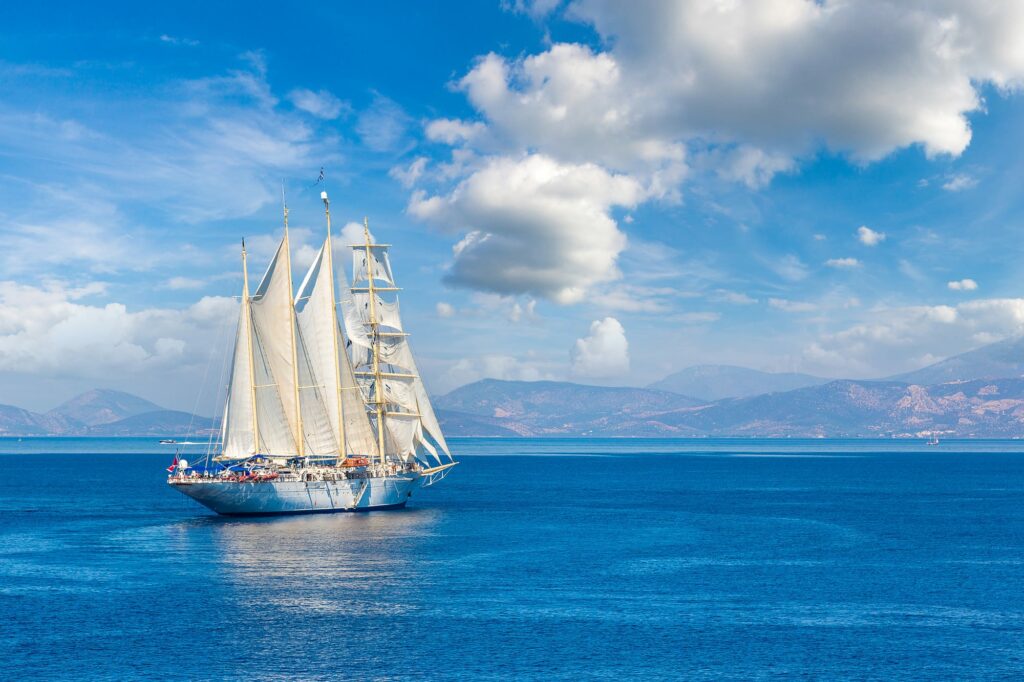
Circumnavigation or Sailing Around the World
Sailing around the world. It has a nice ring to it, doesn’t it? Circumnavigation has always been sort of an obsession of humanity. Since people made the first boat and started sailing and travelling with boats, there was this question: “How far am I able to sail with a boat?” In the beginnings, people only travelled short distances, usually within the same continent because they didn’t know for the existence of other continents. Those travels were predominantly by merchants who were selling their goods. And spontaneously with trade travels, the other kind of travelling by boat came to existence – the exploration kind. But first, let’s tackle the definition of circumnavigation.
What Does Circumnavigation Mean?
Circumnavigation is a complete navigation around an island, continent, a planet or, in modern days, astronomical body like Earth or the Moon.
In this blog post we will focus on sailing around the world. And not the astronomical kind, but the ‘simple’ water-travelling kind. The reason is because that kind of circumnavigation includes sailing. And by sailing, we mean whole lotta sailing.
Exploration of Ancient World
Exploring in the anceint world was quite a bit different than it is today. Nowadays you can simply buy cheap plane tickets and find yourself on other side of the planet in no-time. Famous explorers of the ancient world are Herodotus and Abu Al Hasan Al Masudi . They were both writers, historians and, you’re guessing, explorers. They gave us some of the best descriptions of the ancient world. And they’re quite extraordinary. Let’s get to know the first travelers by boat .

Herodotus is one of the main sources of information when it comes to the ancient world. His writings are exceptional even for today’s standards. He is best known for his description of events because he wasn’t bothered so much with the actual facts as much as he wanted to transfer the emotion or atmosphere of the certain even to the reader.
That’s why his numbers are mostly off. Quite often off by far. He is famous for his description of Greco-Persian Wars and as the father of history and other social sciences such as ethnography. He is also the first who has described the process of mummification.
Other than by his historiographic work, Herodotus is also known for his, in that time, immense travelling . He was the greatest explorer of his time and he traveled throughout all known world. He has been to Africa and to the Middle East, which is very far away from his home town of Halicarnassus considering it was 400 BC. In his travel he has encountered a lot of different people and cultures which he had the privilege of describing first.
In many ways Herodotus travels inspired all the explorers that came after him. And one of such was Abu Al Hasan Al Masudi .
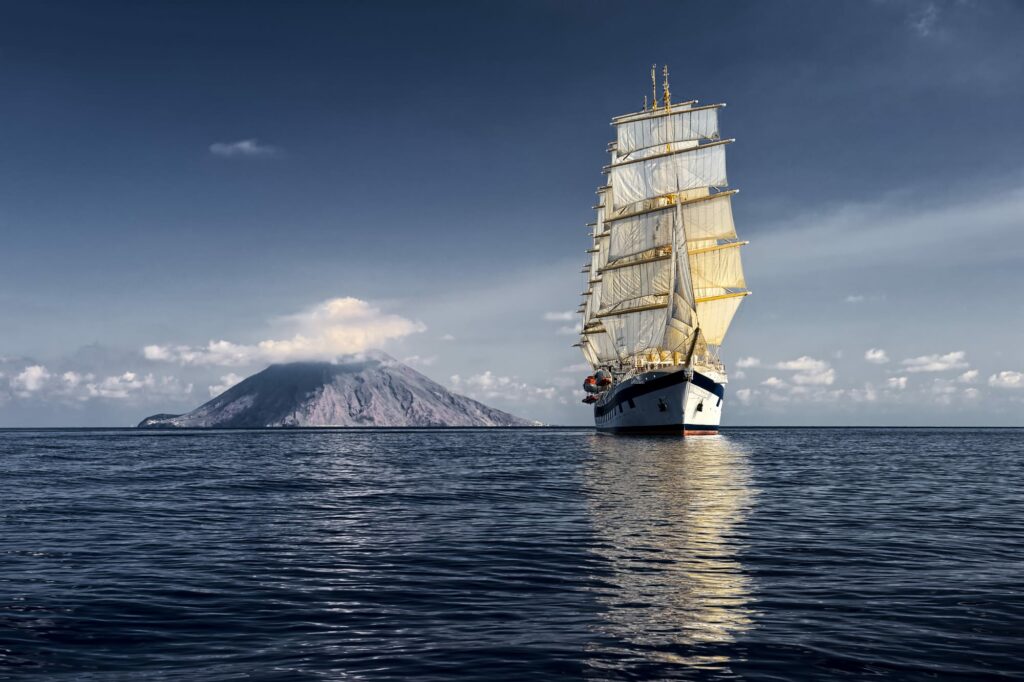
Abu Al Hasan Al Masudi
Abu Al Hasan Al Masudi comes more than a thousand years after Herodotus, but his travels quickly became as well-known throughout all the known world. Much like Herodotus, he was also a historian, but also a geographer. He spent most of his life travelling. Masudi has been to East Africa, the Middle East, Persia, Russia, India and China which is extraordinary considering that he was alive at the end of first century .
He is often called ‘the Herodotus of the Arabs’ and all his travels are combined in the book ‘The Meadows of Gold and Mines of Gems’ .
These two, along with other great explorers of the ancient times set path for all the great explorers that most people know today. We can say that they, in many ways, make up what will soon be known as circumnavigation.
The Beginnings of Circumnavigation
After the Antics, things started to get better for circumnavigation. The world has started to get bigger as other parts of the world were discovered. America was discovered by Christopher Columbus in 1492 . Abel Tasman discovered Australia in 1642. Between people discovering those two nowadays continents, the first circumnavigation took place. But before we go ahead to the first successful circumnavigation , let’s take a look at some of the most famous explorers and how has their discoveries made the first circumnavigation possible.
Famous Explorers
Christopher Columbus (1451 – 1506)
Christopher Columbus was an Italian explorer. Columbus made four ground-breaking voyages to the Americas. The first journey was in 1492 and Columbus got to the Bahamas believing he came to India. Sailing in uncharted seas, Columbus greatly extended the knowledge of crossing the Atlantic and paved the way for the Spanish conquest of the two Americas.
Christopher Columbus was born in the Republic of Genoa , in what is today Northwestern Italy. Columbus learned to sail from an early age and later worked as a business agent, travelling around Europe to England, Ireland and later along the West coast of Africa. Christopher Columbus was a believer in the spherical nature of the world (some Christians still held the view that the world was flat). An ambitious man, Christopher Columbus hoped to find a Western trade route to the lucrative spice markets in Asia. Rather than sailing East, he hoped that sailing West would lead to countries like Japan and China.
Vasco de Gama (1469 – 1524)
Vasco da Gama was a Portuguese explorer who was the first European to reach India by sea. Da Gama made a direct voyage to India – travelling around the Cape of Good Hope in South Africa – arriving in Calicut in 1498.
Vasco da Gama was a Portuguese explorer who became the first European to successfully navigate a naval route from Europe to India. The Portuguese had a strong naval tradition and had already sent ships down the west coast of Africa in search of gold and slaves . Portuguese ships had got as far south as the southern tip of Africa, but loss rates were high and they only received limited riches from the west coast of Africa. In 1481, King John II of Portugal ascended to the throne; he was a keen supporter of encouraging better trade routes. He put Vasco de Gama in charge of finding one.
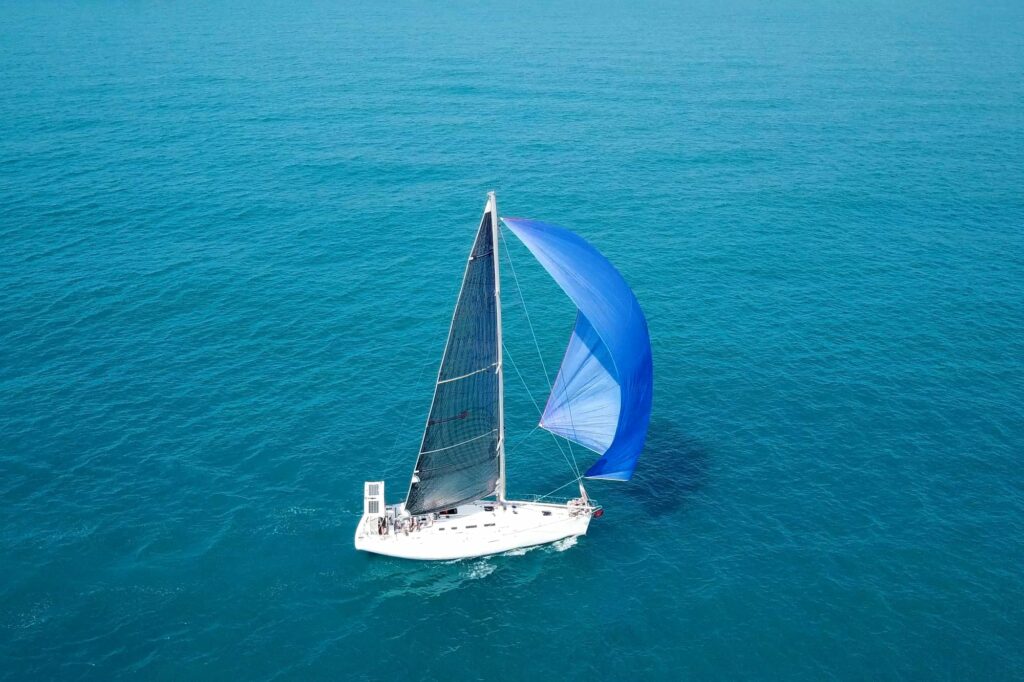
Marco Polo (1254 – 1324)
Polo was a Venetian traveler and explorer who made ground-breaking journeys to Asia and China. His journeys and writings helped to open up the Far East to Europe and inspired Christopher Columbus and many other explorers.
Marco Polo was amongst the first Europeans to travel the famous Silk Road trade route, stretching from the Middle East to China. Significantly, Polo is reputed to have been born in Korčula himself, although evidence to support this thesis is at best sketchy. If Marco’s place of birth is somewhat ambiguous, it is certain that he was taken prisoner by the Genoese in the naval battle of Korčula, between the Venetian and Genovese states .
Having been captured and taken to a Genoese prison, he wrote his book ‘Million’ (see below) about his travels to China. Yet, it was Marco’s cellmate, Rusticello who would later produce a book ‘The Travels of Marco Polo’ . This made Marco’s travelling exploits famous throughout the world. The work caused a sensation in western society when published, since many Europeans were for the first time vividly immersed into the exotic and hitherto unknown culture of the Far East.
Polo noted down the use of coal and ceramics in China, centuries before they became widespread in Europe. However, many of Polo’s stories seemed so far-fetched that people thought that he had made them up. Some of his claims have never been verified . Nevertheless, many merchants would follow Polo’s routes, and many more travelers and explorers, including one Christopher Colombus, were to be inspired by Polo’s achievement.
James Cook (1728 – 1779)
Cook was a British explorer who made groundbreaking voyages to the Pacific Ocean. He made the first European contact with Eastern coast of Australia and he chartered the islands of the Pacific from New Zealand to Hawaii .
Born in the tiny village of Great Ayton, Yorkshire in 1755, Captain James Cook went on to become one of the most famous sea explorers of his age. He helped to find new lands and redraw the maps of the time. After working for a year as a grocer, James Cook gained an apprentice for a Quaker-owned shipping company . It was here that James Cook began learning the arts of navigation and seamanship. During the late eighteenth century, there was great interest in surveying unknown lands.
After serving in the seven-year war with France, he was commissioned in 1768 by the Royal Society on a scientific expedition to the Pacific. This was the start of his travels around the oceans of the world. He helped to chart the coasts of New Zealand and Australia . Cook visited many unknown islands – witnessing human sacrifices in Tahiti amongst other things. He was an explorer of tremendous determination and faith. He helped spread the boundaries of known sea travel and raised standards for the welfare of his men serving under him.
Sir Francis Drake (1540 – 1597)
Drake was an English explorer who made the second successful circumnavigation of the world in 1577-1580. He also fought the Spanish Armada in 1588.
Sir Francis Drake was an English sailor and explorer. Beginning around 1563, he and his cousin, Sir John Hawkins, became the first Englishmen to sell slaves from Africa in the New World . In Panama in 1573, he captured a fortune in silver and gold that the Spanish had seized from the Native Americans and became the first Englishman to see the Pacific.
He was also the first Englishman to sail all the way around the world. Because of this, he was made a knight by Queen Elizabeth I . His rise from commoner to great war hero and influential person was rare for his time.
Ferdinand Magellan (1480 – 1521)
A Portuguese sailor and adventurer who led the first expedition to make a successful circumnavigation of the globe. Magellan also made the first crossing from the Atlantic into the Pacific and also the first successful crossing of the Pacific Ocean. He died before the expedition reached Europe.
Ferdinand Magellan was a Portuguese sailor who, from 1519 to 1522, led the first circumnavigation of the world . He was a skillful sailor whos idea was to discover new routes to reach India. Appointed by the King of Spain, he was given permission to seek India by sailing around the southern point of America.
He successfully led the mission through many turbulent experiences. In doing so, he made notable firsts. Magellan was the first to find the passage from the Atlantic to the Pacific. He was the first one to cross the Pacific. He led the first circumnavigation of Earth .

First Circumnavigation of Earth
The Magellan-Elcano expedition was the first expedition that completed the travel around the world. It started in 1519 in Spanish town Seville by experienced Portuguese sailor Fernand Magellan, but was completed by Spanish sailor Juan Sebastian Elcano in 1522. Even though Ferdinand Magellan didn’t complete the expedition, his name remains written in history as the first person to sail the world. On the other hand, the name of Juan Sebastian Elcano is somewhat forgotten even though he played an important role in completing the circumnavigation.
However, this expedition made all the other circumnavigations possible. Magellan and Elcano were the first to find the route from the Atlantic to the Pacific, they crossed the Pacific first and they found the route back to Sevilla first from the other side of the world. All of that was a huge deal in their time.
The first circumnavigation lasted for three years . The circumnavigation started on 10 August 1519 and was finished on 8 September 1522. The ship that first sailed around the world was called Victoria.
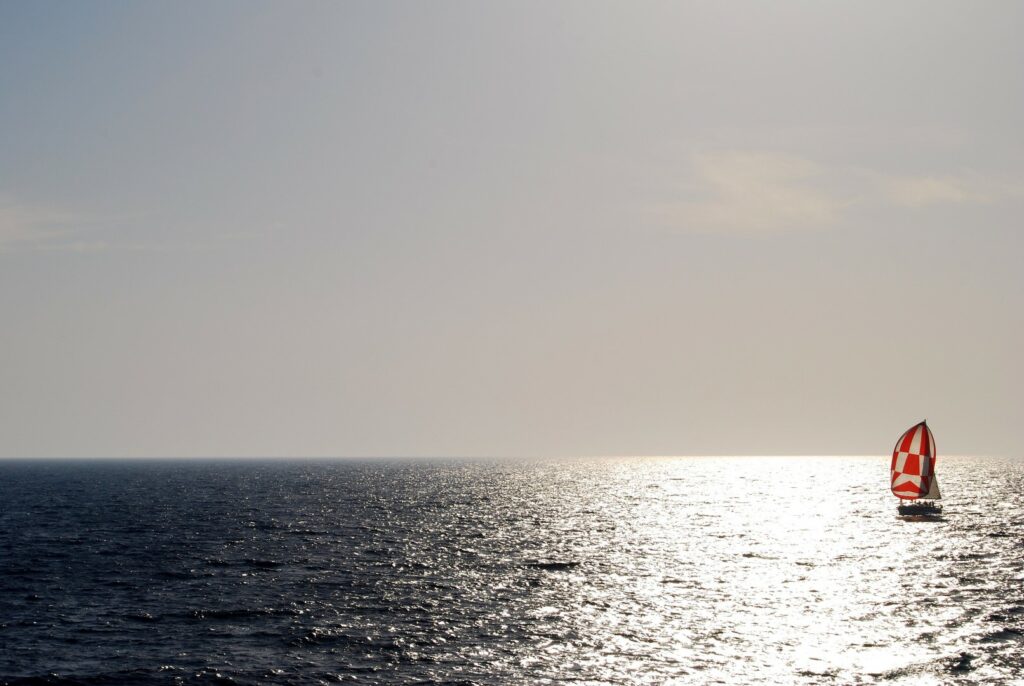
Circumnavigation in Modern Days
Circumnavigation nowadays doesn’t take nearly as long as the first circumnavigations did. People can nowadays sail around the world in a year or a year and a half. Even though, a lot of circumnavigations today take between 3 to 5 years . It is because people usually go sightseeing and take the time to relax and explore.
Sailing around the world costs anywhere around €1500 – €2500 a month . That amount covers all the costs for food and necessities. It also covers additional expenses that may or may not come while sailing. Depending on the personal preferences and a lot of other factors, sailing around the world can be more or less expensive. But this amount of money is which a lot of circumnavigators agree with.
Sailing around the world is a lot easier in modern days . All the modern tools, GPS and navigation make it a lot safer, too. Currently there are a lot of people who are on their expedition around the world. Some for sport, some for the adventure and the other to break world records.
Golden Globe Race is circumnavigation that people do for sports. It is a race around the world on a sailboat with only one crew member. First one was in 1968. The last taking place in 2018 and the next will be in 2022.
Sailors sail east. The starting and finishing point is Les Sables-d’Olonne in France. The competitors usually take five to six months to finish the race. The race in 2022 will start on 4 September. During the race, the competitors can’t use modern equipment.
Others sail the world for the pure adventure. One of those people who do it for the experience is Sailing Togetherness . They are going to sail around the world starting from their hometown in Denmark in 2020. Their plan is to use 100 % green energy and do all the boat work themselves. If you want to joint them, feel free to send them a message on Instagram.

Sailing Togetherness
Sailingtogetherness is a project started by two Danish guys Jakob (22 years) and Mikkel (23 years) aimed to inspire young people to start sailing . Mikkel has seven years of sailing experience and teaches young people in sailing. Jakob has never been on a sailboat but is willing to learn along the way.
The boat a Luffe 54 was built in 1988 as a luxury yacht on a danish boatyard. But it was bought as a insurance claim which means there is a lot of repairs needed. The plan is that the boat, Togetherness, will be ready to start its first circumnavigation in 2021 where it will cross the Atlantic to the Caribbean .
Everybody who wants to join can do so. The boat can house between 6-8 people while sailing . Experience in sailing is not a requirement but will be taught along the way. The crew will share all of the expenses during their stay. Depending on the location we expect it to be around 6500-7500 DKK (870-1000 euro) a month .
The route is not planned. The decisions of where to sail will be taken by the crew on the boat by that time. On sailingtogetherness’ Instagram it is also possible to vote on different locations that should be visited! The dream is to visit as many “local” (not touristed) places as possible. And the circumnavigation takes between 10 and 15 years. Another goal is also to sail along the South American coast and south of Cape Horn.
If people have interest in joining or hearing more they can write on Instagram or Facebook under the name Sailingtogetherness .
Fastest Circumnavigation Around the World
The world record holder for the fastest sail around the world is Francois Gabart . He has beaten the previous world record by 30 minutes in 2018. The record is now 42 days, 16 hours, 40 minutes and 35 seconds. The distance Francois sailed is 27 860 nautical miles with average speed of 27.2 knots and the maximum speed of 39.2 knots .
Francois did it on his trimaran Macif . This record will probably remain for quite some time because sailing around the world that quickly is more than amazing.
Youngest Person to Circumnavigate the World
The youngest person to ever sail around the world is Laura Dekker . Laura Dekker was born in 1995 and she loved sailing since she was a child. She was making her own improvised sailboats as a kid and was in love with the sea. As a result, she bought her first sailboat when she was only 11.
By the time she was 13, she sailed alone from Holland to England. After more than a few sails to England and back, she said that is enough of waiting. She went ahead and decided to fulfil her dream of sailing around the world. A few court cases later she managed to set off. Her starting point was in the Caribbean . She started the journey when she was 14 and returned when she was 16, making her the youngest person to ever circumnavigate the world .

Leave a Comment Cancel Reply
Your email address will not be published. Required fields are marked *
Save my name, email, and website in this browser for the next time I comment.
This site uses Akismet to reduce spam. Learn how your comment data is processed .

17 Best Catamarans for Sailing Around the World
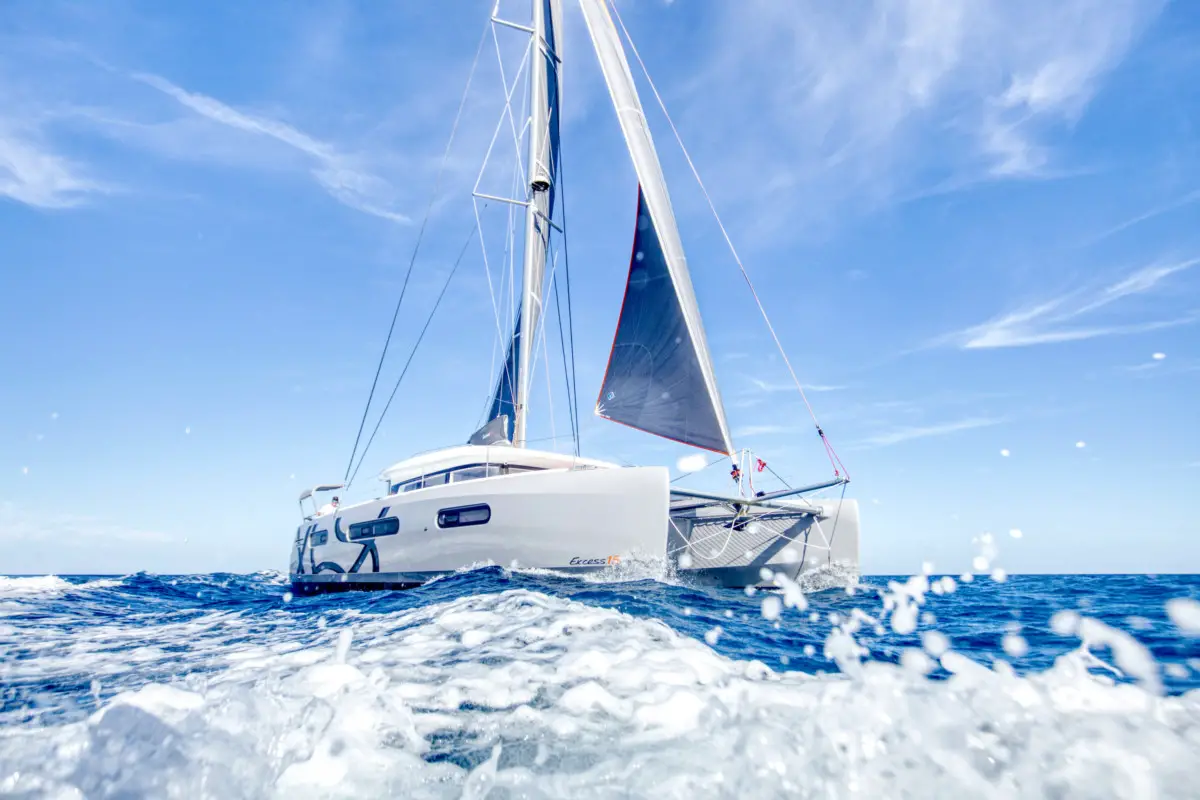
As an Amazon Associate, we earn from qualifying purchases. We may also earn commissions if you purchase products from other retailers after clicking on a link from our site.
Catamarans are quickly outstripping single-hull boats for long-distance journeys. They are more stable and comfortable , and some can travel more than 200 miles in a day. In today’s article, I have put together a complete (well almost) list of some of the best catamarans for circumnavigating the planet; the question is, which one is best for you?
The best catamarans for sailing around the world include:
- The Fountaine Pajot Ipanema 58
These cats focus on speed, safety, and comfort for longer journeys.
This article will show you the seventeen best catamarans for long journeys, and why they’re the best. You’ll also learn some great tips on what to look for in a Catamaran and how to save money by buying a used catamaran. Let this list be a jumping-off point for your future research!
Pro-tip; here are the actual costs of maintaining a cat and here are considerations on how to circumnavigate .
Table of Contents
The Best Catamarans for Sailing Around the World
A catamaran is a double-hulled boat with a deck or cabin area in between (bluewater cat definition in this article ). The double hull design means that the boat rocks less, sits higher on the water, uses less fuel to sail, and can be sailed in shallower waters than a single-hulled boat without worrying about grounding.
Catamarans come in a variety of sizes and can be sail-powered or motor-powered and range from single-person sailing boats to family-sized yachts. Every catamaran design is different, and the twin-hull shape offers many ways to customize the layout of a ship.
Each boat on this list is a larger catamaran (+40ft, more on size here ), so if you’re going to sail around the world, you want lots of space for provisions and rest.
Of course, there are tons of technical specs for each of these boats, but I’m going to focus on the overall features of each of these catamarans, what makes them stand out, and why they would each be an excellent choice for a transatlantic journey.
Antares 44i
The Antares 44i is an excellent option for sailing around the world and was explicitly designed for long-distance cruising. It performs well in any weather conditions, can be sailed easily by two people, and you’ll be able to sail long distances and live in comfort.
Although it can be easily sailed by a crew of two I believe that a true bluewater cat should be set up for single-handed sailing, more on that in another article .
This catamaran features a stateroom on each hull and a forward cabin with plenty of storage space. The living and entertainment features include a flatscreen tv and a high-end deck speaker system.
With this model, Antares dedicates itself to high-quality boats with optimal rigging and engine configurations.
Atlantic 42
Atlantic is no longer building this catamaran, but there are usually a few pre-owned boats on the market. You can also get it made custom if you love the design, but be prepared to spend more money on a custom boat (custom boat also gets custom problems ;)).
The Atlantic 42 is slightly smaller than some of the other catamarans on this list but is a seaworthy vessel. 42 ft is what most sailors I interview ( in this article ) said was the smallest cat to safely cross big oceans. It is also a decent size to counter the risk of capsizing (more on that here ).
It has a forward cockpit and pilothouse, which gives the owner a better use of space and makes the boat easier to navigate. With single-handed capability, one person can sail it easily and let the rest of the crew relax.
One of the best-praised aspects of the Atlantic 42 is its galley, more extensive than most 42-footers (12.8-meter) can offer.
One of the few 50 footers (15.24 meters) that can be sailed by just one person (many would of course disagree on this).
The Catana 50 is a catamaran worthy of an overseas journey. Its size adds to its stability on the open waters and its ability to sail straight through the choppy ocean and windy conditions.
The Catana is also incredibly spacious on the inside, with substantial cabins and showers. The biggest downside to the Catana 50 is its price, as it’s much more expensive than most of its competitors.
Catana also holds up well against some of the fastest cruising cats out there, here’s a list of the fastest cruisers if you are interested in that.
However, if you can find a gently-used Catana 50, you can rest assured that this boat will last!
The Dolphin 42 is unique because of the use of daggerboards instead of fixed keels. This upgrade means that the boat has some pretty decent upwind performance while at the same time being faster downwind.
Centerboards and daggerboards offer some interesting downsides compared to mini keels. This is an interesting discussion and I suggest you read another one of my articles if you want to deepen your knowledge a little.
These catamarans are some of the lightest on the market. Not many Dolphins were made, so they are relatively hard to find. However, if you want a small, lightweight boat capable of going great distances, the Dolphin 42 is an excellent choice.
Fountaine Pajot Belize 43
The Fountaine Pajot Belize is another well-built cruising yacht. Its core is made of foam instead of balsa, which reduces the risk of structural damage due to a rotten core in case of water intrusion.
The design of Belize offers many options for customizability, with large open spaces and a combined saloon, navigation, and dinette area.
There are two styles of Belize catamarans for sleeping quarters. You can either purchase a boat with an entire primary suite on one hull or one with two cabins in each hull. The first option is great if you are sailing the world alone and not expecting many guests, as it increases the storage capacity.
Understanding what factors to consider when getting a cat can be hard, there are just so many of them (such as the daggerboard discussion above), I have tried to compile some of the most important in this article .
The boat also has wraparound windows to increase the sense of space in the galley.
Fountaine Pajot Lucia 40
Fountaine Pajot is one of the best sailboat manufacturers existing today, as their boats are well made and highly versatile. The Lucia 40 is no exception – it’s a smaller boat but has a lot of room for moving around and on-board living.
The living area is remarkably spacious on this catamaran for its size.
The galley and lounge easily accommodate 6+people. The Lucia 40 doesn’t disappoint when it comes to sailing either, as the narrow hulls slice through choppy waters with ease.
Most catamarans today are built to withstand rough weather but that doesn’t matter as much if the crew isn’t up for the task, I firmly believe that the most important thing a boat should consist of, is knowledge. Therefore taking online courses ( two free here ) or reading books ( my favorites here ) is imperative.
Gemini 105M
Gemini’s boats have been on the market for years and are solidly built for cruising. This boat is one of the most popular ever made, I personally would consider something different for offshore cruising, but since it has such a good reputation, I felt I had to add it to the list.
If you want to understand why I am hesitant to take this boat around the world, I recommend you read my article: What are trampolines on a catamaran?
The Gunboat 62 is a great catamaran and set the standards for the rest of the impressive Gunboat lineup. It’s sleek and spacious while being robust and capable of transatlantic journeys. You can easily travel the world in a Gunboat 62 with several people and not feel cramped.
The yacht was made for speed and power and remains one of the fastest catamarans on the market, even rivaling the newer Gunboat models. GABO
Although the earlier models of the Gunboat 62 weren’t designed for a lot of cargo, you can still find space for everything you need without compromise.
Lagoon catamarans are known for their reliability and ease of use. If you are considering a catamaran for the first time and are unsure about the technicalities of sailing, a Lagoon boat is a great option.
The Lagoon 380 is probably the smallest cruiser on this list, which makes it better suited for solo or couple sailing.
When I go looking to buy something, whether it be a boat, campervan, or whatever, I create a checklist and classify all the things I want either by NEED or NICE to have.
I believe the Lagoon 380 to be sub-optimal for my NEEDS, even though it does check a lot of NICE boxes, there’s a step-by-step article on the NEED and NICE method here .
There are several cabin options available on the Lagoon 380, but if you’re sailing by yourself, you can settle for three cabins and a larger galley and living space. With a smaller cockpit and broader side decks, the Lagoon 380 packs a lot of practicality and ease of sailing into a more compact catamaran.
If you like the idea of a Lagoon boat but want a little more space, the Lagoon 42 is the upgraded version of the Lagoon 380. With all of the same benefits, it comes with more space for cabins or storage, making it one of the best-selling Lagoons of all time.
The Lagoon 42 is also a faster cruiser built for strength. While it’s not the fastest on the market, it works well in choppy waters and windy conditions, making it great for the beginning sailor to go on a more extended trip.
Many people have completed an around-the-world sail with this ship.
Although there is a flybridge version, I would recommend the “open” version due to several factors, some including increased windage and a higher boom. More on flybridges pros and cons here .
For stability, safety, and durability, you can’t beat the Lagoon 42.
The Leopard 45 performs better with less storage weight because of the relatively low bridge deck clearance. If the boat is fully loaded, you could experience some wave pounding. However, the cockpit is open and airy, with devices that block the sun and provide maximum comfort while sailing.
The Leopard 45 is an incredibly beautiful boat, and has a strong reputation for excellent build quality!
Leopard catamarans are one of my personal favorites, as such I have written an entire article about the brand, so if you want to understand its pros and cons then here is the link . Gabo
Designed in South Africa, it features a high rear arch for extra support and very smoothly connected decks. The galley is large and open, and most Leopards offer a four-cabin plan. If you are traveling with another person, this boat is an excellent option for you!
The Manta 42 is another classic catamaran that you can buy used (at a decent price), as it is an incredibly seaworthy vessel. While still in production, the Manta was one of the most popular catamarans on the market.
It is still in high demand amongst circumnavigators. Buying a used Manta 42 usually means that you inherit some of the previous owner’s boat upgrades!
The Manta 42 also made it to my list of the 9 safest catamarans on the market ( link ).
This blue water cat can be sailed by one or two people, making it ideal for liveaboard couples or long-distance shorthanded sailing. The galley is in the saloon ( instead of in one of the hulls ), making the cabins below more spacious and better equipped.
Overall, the Manta is well equipped for sailing around the world.
Nautitech 44
Nautitech is an excellent brand of the catamaran, with several different designs per boat. The Nautitech 44 has a unique feature, you can have it with two options for steering: twin wheels or a single wheel.
The Nautitech 44 also features a cockpit on the same level as the saloon. The door between the two is more convenient than a hatch and dramatically reduces the risk of water damage during rain pour.
This is also the same boat that aeroyacht president Gregor owns, he has offered some great insights into Nautitech in the book Catamarans (amazon link )
Outremer 45
Outremer is famous for being one of the fastest brands of catamarans on the market. If you need speed, the Outremer 45 might be the perfect choice for you. It has a top speed of 16 knots, which is higher than almost every other catamaran of its class.
While the Outremer 45 is known for speed, it doesn’t compromise on the quality of living.
You can settle into life on this boat with complete peace of mind. Even as a beginning sailor, the steering is simple and easy to use, and the autopilot is top of the line, so you’ll be able to sail across the ocean in an Outremer without issue.
Privilege Serie 5
A French-designed catamaran, the Privilege Serie 5 is one of the most comfortable 50-foot (15 m) yachts available. The unique cabin layout includes the master cabin in the boat’s center instead of in one of the hulls.
The Privilege Serie 5 is also incredibly easy to sail, despite its larger size.
The sails and controls lead to the helm, where the raised deck makes it easy to see all around the deck. If you want to cross the ocean with a full crew then the Privilege Serie 5 might be perfect for you!
Seawind 1000
The Seawind 1000 is the smallest boat on this list, measuring 33 feet (10 meters) long altogether. However, this doesn’t mean that it’s not livable. If you are sailing on your own or with a partner, there is more than enough space to live in the Seawind 1000, which includes the option of a centered cabin or two hull cabins.
Because it’s small, the Seawind 1000 is easy to handle. The mast and sails are all manufactured for extra stability and ease of use.
Overall, the Seawind 1000 is an excellent example of a simple, safe, and seaworthy catamaran.
Note: since this is a small catamaran it will also be more sensitive to heavy weather so trip-planning becomes even more important.
The Voyage 44 is one of the oldest cats on this list, having had its hay-day in the mid-1990s. However, this also means that a used Voyage 44 will be cheaper than a newer boat. If you can find a Voyage with previous responsible owners, you will inherit any upgrades and fixes that they’ve made on top of a very seaworthy boat.
The Voyage 44 has more storage and space than most cruisers of its size and is known for behaving very well in choppy waters.
This catamaran does its job well while providing adequate space for cooking, sleeping, and living aboard.
What To Look For in a Long-Distance Cruising Catamaran
If you are planning to sail around the world, you need to be very careful about which kind of catamaran you decide to use. Many of the things you want in a boat really comes down to personal preference, so be sure you know what design preferences you want before you start shopping!
Size and Payload
The most important thing to consider when buying a catamaran is how much space and cargo you need because the larger the boats are, the bigger the payload it can handle. Decide how long you want the ship to be and how much you’re taking with you.
It’s vital not to overload a catamaran, this will reduce performance and increase risk of unwanted behavior in heavy seas.
Cabin Placement
Most catamarans have options for a “Maestro” cabin placement, where one entire hull is the master suite, and the other cabins are located on the opposite hull.
Cockpit and Protection From The Weather
Is the cockpit on the boat you’re looking at covered or open? This can make a difference on the high seas, especially during rainy weather.
The size of the ship also can affect how many people you need as a crew. If you’re traveling by yourself or with one other person, you don’t want to buy a boat that needs a larger crew.
Buying Used?
If you don’t want to spend the money on a brand new catamaran, I don’t blame you. Several of the ships on this list are out of production and can only be found used. However, for circumnavigation, you do want a boat of high quality to keep you safe and dry until you make it to your destination.
When buying a suitably used catamaran, it’s essential to look at the refit history of the boat more than the year it was made. Catamarans are sturdy, and the general design has been the same for at least the past decade.
If you find a newer, larger, cheaper boat, you should look into its history.
Your best bet to save money while buying a catamaran will be to buy an older, probably smaller boat with an excellent refit history and no serious issues. It will still be an investment, and a sturdy used catamaran will serve you well.
Final Thoughts
No matter which catamaran you decide to buy for your journey, you’ll be able to sail safely and comfortably. Catamarans are great yachts for long-distance sailing, and the ships on this list are the best of the best. These brands are time-tested and ready to accompany you on an adventure around the world!
Here are Some of My Favorite Catamaran Cruising Resources
Thank you for reading this article. I hope you found it helpful as you hopefully start your sailing adventures. Here are some resources that I use as a sailor that I hope you’ll also find helpful. These are affiliate links, so if you do decide to use any of them, I’ll earn a commission. But in all honesty, these are the exact things that I use and recommend to everyone, even my own family. Sailboats: If you’re looking for the best boat to suit your needs, I would recommend a catamaran. If you’re interested, I can show you the differences between catamarans and other types of sailboats .
Books: For getting started, I really like Cruising catamarans made easy . It is actually a textbook from the American sailing association; it is used to get a cruising catamaran certification. There are some other great books, and I have compiled a list of books about cruising catamarans that you will find useful.
Communication: Being out on adventures, whether it be sailing or climbing mountains, good communications are essential to being safe. I recommend two things Google fi (incredibly simple cellular data all over the world) and Garmin inreach mini (for text and voice in remote areas without cell coverage)
Sailing courses: Online sailing courses are great for beginners starting out their sailing career; it’s an efficient way of learning the basics of navigation, throttle controls, and maritime safety. I suggest starting with two free courses from NauticEd .
To see all my most up-to-date recommendations, check out this resource that I made for you!
- Wikipedia: Catamaran
- Cruising World: A-Z Best Cruising Catamarans
- Dreamy Yacht Sales: Four Best Catamarans for New Buyers
- Atlantic Cruising: Good Cat/Bad Cat
- Yachting World: Catamaran Sailing Across the Atlantic
- Boat Affair: What is a Catamaran?
- Nautilus Sailing: Catamaran Sailing
Owner of CatamaranFreedom.com. A minimalist that has lived in a caravan in Sweden, 35ft Monohull in the Bahamas, and right now in his self-built Van. He just started the next adventure, to circumnavigate the world on a Catamaran!
3 thoughts on “ 17 Best Catamarans for Sailing Around the World ”
I like the efforts you have put in this, regards for all the great content.
Thanks Elisabeth I really appreciate the kind words 🙂
I appreciate you sharing this blog post. Thanks Again. Cool.
Leave a Reply Cancel reply
Your email address will not be published. Required fields are marked *
Save my name and email in this browser for the next time I comment.
Recent Posts
Must-Have Boat Gear for Catamaran Sailors!
Sailing is probably the most gear-intensive activity I've ever done; there are so many decisions to be made about what gear to buy now, for tomorrow, and what to definitely never buy. The gear on...
6 Best Trailerable Trimarans For Bluewater and Coastal Sailing
Having a boat costs a lot of money, even when you are not using it, marina fees, etc. And once it is in the water most sailors never go very far from their "home marina" and sailing will be somewhat...
- BOAT OF THE YEAR
- Newsletters
- Sailboat Reviews
- Boating Safety
- Sails and Rigging
- Maintenance
- Sailing Totem
- Sailor & Galley
- Living Aboard
- Destinations
- Gear & Electronics
- Charter Resources
- Ultimate Boating Giveaway

The Best Boats for Sailing Around the World
- By Jimmy Cornell
- Updated: July 16, 2012
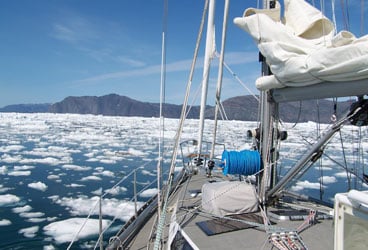
AroundtheWorld
Over the years, I’ve conducted a number of surveys to try to find out if there’s such a thing as an ideal cruising boat—only to conclude that the ideal vessel is a chimera. While a particular boat may be perfect for one sailor or one particular voyage, the same boat might be totally unsuitable for another. Besides using the surveys as the basis for my books, including my newest, World Voyage Planner , the purpose of the voyage-planning survey was to find out the essential features of a boat fit for sailing around the world.
The 57 cruising mariners who participated sail vessels measuring 33 to 74 feet in length and fashioned from plywood, fiberglass, aluminum, and steel.
Among the group, 27 had sailed around the world, several of them more than once. Their ages ranged from the late 20s to the early 80s, while their cruising spanned the entire world, from the tropics to Antarctica, the Mediterranean to the Northwest Passage.
The boats were as diverse as their owners, from production boats to state-of-the-art yachts, including both monohulls and multihulls; in all, a perfect sample of today’s cruising scene. This was also reflected in the makeup of the individual crews, with 32 boats being sailed all, or most, of the time by couples. Their rich fonts of knowledge and experience made them ideal informants on all the essential aspects of voyage planning.
There’s no doubt that the choice of boat can seriously affect the quality and enjoyment of sailing around the world. Many factors can make a boat unsuitable for a long voyage, but size—a boat that’s too large for easy handling by a shorthanded crew or too small to be comfortable—is the most common problem. Other factors include limited storage capacity and a lack of speed on long passages. Comfort is indeed a major aspect, and this has a bearing not only on the wellbeing of the crew but on safety itself.
As important as size and comfort may be, the most essential consideration when choosing a boat for a long voyage, such as sailing around the world, is safety. Many boats on the market may be perfectly suitable for weekend sailing or short cruises but may not be up to the demands of a voyage in tough ocean conditions.
A common reason for some people setting off with what would turn out in the long run to be an unsuitable boat is that it was the boat that they happened to own at the time, and, whether for reasons of finance, lack of foresight, or sentiment, they decided that it would do. By the time their mistake became obvious, it was too late to put it right, and they either chose to carry on regardless or ultimately cut short and even abandoned the voyage.
As the choice of the right boat is such an important factor, participants in the voyage-planning survey were asked to rate their level of satisfaction with their boat. They were also asked to point out any design features missing on their boat that would’ve made a considerable contribution to the quality and enjoyment of their voyage and to name any specific piece of equipment that they would’ve liked to have had. To complete the section on the choice of boat, they were asked to make a comment or give some useful tip to someone preparing for a long voyage.
A few owners complained that their boats were smaller than ideal, although one skipper was happy with his decision to buy such a boat, as it allowed him to enter tinier ports and marinas. What some owners found to be a more serious handicap on long voyages than actual size was the lack of storage space, a deficiency they blamed on the fact that many current boats are built for charter, for which storage capacity isn’t a priority.
Regardless of the size of boat, the most common feature that people wished they’d had was a comfortable, sheltered watchkeeping position. Several mentioned the importance of a protected and ergonomically designed cockpit, one possibly outfitted with a hard dodger, that would make passages more comfortable in both hot and cold climates.
Asked to specify any design feature that would’ve made a considerable contribution to the enjoyment of their voyage, several owners mentioned shallower draft, which they said would’ve extended their cruising range. Other features mentioned were better access to the engine room for maintenance, a compact and safe galley, comfortable sea berths, but also provision for a double berth when in port.
The list was even longer for such outside features as a well-designed stern with dinghy davits and a platform or scoop with a folding or retractable ladder for easy dinghy access, swimming, and landing fish.
According to Mike Dorsett of White Princess , a Renegade 43, an important feature on a world voyage is “a larger-than-standard self-draining gas locker with space for additional tanks for cruising in areas where refilling them can be a problem.”
Suggested improvements at the bows were a retractable bowsprit, quick and easy access to the chain locker with a vertical drop to avoid the chain getting snagged, and a powerful and reliable windlass. For sailhandling, many considered essential a well-planned reefing system with lines led back to the cockpit, ideally to an electric winch.
The three most commonly mentioned pieces of essential equipment that some sailors had acquired under way or were planning to buy at a later stage were: a watermaker; a strong autopilot preferably backed up by a wind-operated self-steering gear; and an automatic identification system, or AIS.
The utmost importance of a reliable autopilot was highlighted by Roger Swanson of Cloud Nine , a Bowman 57. “I went for a long time, in fact two circumnavigations, without a good, reliable autopilot, but that was part of the experience,” he said. “Now I have a powerful hydraulic autopilot and use it a lot.”
Steve Lochner of Equus , a 48-foot Nicholson, mentioned these desirable items: “color radar capable of indicating the strength of approaching storm cells,” bow thrusters, and cockpit repeaters for the chart plotter and radar. He also pointed out that some production boats are sold without an electric-wiring diagram, which can make it very difficult to trace a fault.
Since most of those interviewed had spent long periods sailing under trade-wind conditions, several mentioned as important having easily handled downwind sails, such as a cruising chute, an asymmetric spinnaker, or an ISTEC Parasailor. Patrick Canut of Leon , a Jeanneau Sun Odyssey 42, sailed with two genoas and wished he’d had “two poles while running wing and wing, especially when we had to jibe repeatedly with the wind close to 180 degrees. Now I believe that a Parasailor would’ve been a better choice.”
|
Communication systems weren't examined, although the usefulness of satellite phones was praised. But Steve Moss of Yamma , a Hallberg-Rassy 36, stressed that "in spite of satphones, SSB radio is still essential for emails, voice communications with other boats, receiving weatherfaxes, and the like."
When it came to giving practical advice to would-be voyagers, some sailors pointed out that many of those with limited experience seem to be unaware of the high electricity demands made by all the equipment installed on cruising boats. "Make sure that your electric-power demands can be satisfied with the quantity of electrical storage and generating equipment that you have on board and that you have a diversified portfolio of options available, including engine, generator, solar, and wind," advised Jim Patek of Let's Go , an Ovni 435.
Many praised the usefulness of solar panels. But Alfredo Giacon of Jancris , a Mikado 56, said that "while panels were perfect in the Med, where summers are dry with long, sunny days, in the Caribbean I had to add a wind generator as it was often raining and days were shorter."
Lars Hässler of Jennifer , a Beneteau Oceanis 5000, suggested that cruisers "double your diesel tanks and try to have a 1,000-mile range. This will give you freedom of movement in less-populated areas of the world. If there's no space, sacrifice one water tank, because you can make water with a watermaker, but you can't make diesel."
Hugh Fraser, who built Scotia , his 50-foot steel boat, listed some useful tips that could be easily accommodated on a production boat. "For lightning protection, a spike on the masthead seems to work," he said. "Stow a spare GPS and radio in a tin box in case your boat is hit. For your safety and comfort, make a combined stainless-steel security grate and mosquito screen for the companionway hatch, so you can lock yourself in at night and keep cool. Carry a spare computer and a separate hard drive loaded with all your programs. Among the things to avoid are deep freezers, because they're too power hungry, and certainly spade rudders, because if they break, you may lose your boat," Fraser added.
The safety aspect, more than any other, should be the overriding factor when choosing a boat for an ocean voyage. Yet several people stressed the need to try and keep things simple. Tere Batham, who spent 10 years roaming the Pacific aboard Sea Quest , a Colin Childs, emphasized that "we don't believe that it's all that sophisticated equipment that really makes the boat. It's good-quality winches, anchoring gear, and a reliable engine that are paramount, as they'll give you peace of mind."
While a boat may be perfect for one sailor, that same boat might be quite unsuitable for another. No one put that better than Alex Whitworth. When asked about his own wish list for items that would've contributed to the quality and enjoyment of his circumnavigation via the Northwest Passage on his 33-foot Berrimilla 2 , he said, "Nothing. My voyage was sailed on a shoestring. Quality and comfort weren't considerations."
At the other extreme, Kurt Braun, who completed a circumnavigation at about the same time on Interlude , his 74-foot Deerfoot, also answered "Nothing" to those same questions. Instead, he gave this advice to anyone planning to get a boat and leave on a long voyage: "Go bareboat chartering and/or passagemaking on someone else's boat to confirm that you'll enjoy cruising on your own yacht before making the investment in a boat or equipment."
Among those who seemed to have most nearly achieved their ideal were Beth Leonard and Evans Starzinger of Hawk , an aluminum Van de Stadt Samoa 47. "Because we'd done a circumnavigation before we built this boat ourselves, we were able to incorporate everything we really wanted in the design," Beth said. "We'd hoped to get it all into 42 feet, but we ended up at 47 feet. If we could've squeezed everything into 42 feet, we would've preferred it."
CW editor at large Jimmy Cornell's World Voyage Planner will be published in September 2012 by Cornell Sailing .
- More: international , keelboat , monohull , people passage notes , Sailboats , voyaging
- More Sailboats

Sailboat Review: Dufour 41

Pre-Owned: 1988 Hylas 47

Catalina Introduces the 6 Series

Sailboat Preview: Elan GT6 Explorer

Best Practices for Boat-Show Shopping

Savoring Superior: A Great Lakes Cruise To Remember
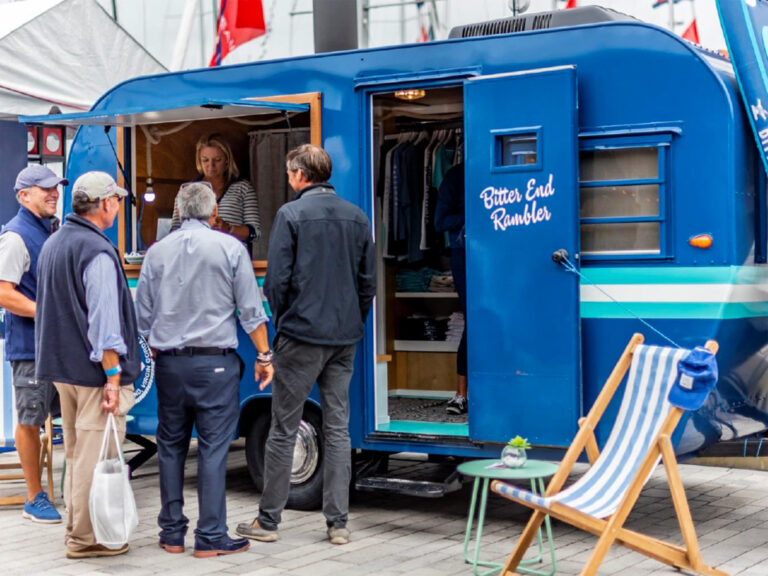
Point Your Compass Due South, Bitter End Yacht Club Reopens October 23rd.
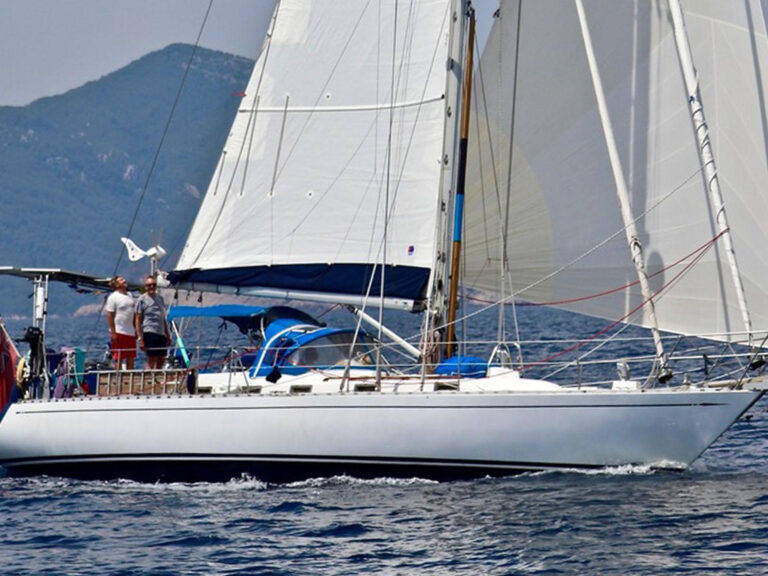
- Digital Edition
- Customer Service
- Privacy Policy
- Terms of Use
- Email Newsletters
- Cruising World
- Sailing World
- Salt Water Sportsman
- Sport Fishing
- Wakeboarding
This is the announcement bar for Poornima to test the Close Button. It will expire May 31 2024.
- Pre-Cruise FAQ
- Onboard FAQ
- Post-Cruise FAQ
- Cruisetours FAQ
- Special Offers Sign Up
- Cruise Deals
You have been logged out
Your window will update in 5 secs
Princess Cruises Brings Sought-After Destination of Japan to the Culturally Curious Traveler with Release of 2026 Cruise Season
Diamond princess to sail on over 50 departures showcasing the land of the rising sun - january through november 2026.
By downloading this image you agree to the Princess asset use terms and conditions
FT. LAUDERDALE, Fla. (September 19, 2024) – The scenic island nation of Japan continues to be a hot destination for tourists who are inspired by architecture, local cuisine and natural landscapes, and this trend is expected to extend into 2026. Today, Princess Cruises – recognized as the leading North American cruise line in Japan – released its 2026 Japan cruise season, offering the most immersive and authentic experiences for the culturally curious traveler who wants to plan ahead.
The 2,670-guest Diamond Princess, built in Japan and designed for this great destination, returns to offer a longer season, from February through November 2026, with 50 departures ranging in length from seven to 28 days, on 35 unique itineraries visiting 38 destinations in three countries.
No matter the itinerary, Diamond Princess guests will take in legendary cities from Tokyo, Osaka, Kyoto and Hiroshima; temples and shrines like the Aomori’s Sannai-Maruyama ruins, Kochi Castle and Itsukushima Shrine, the most recognizable red torii ; arts, culture and tradition from baseball, Sumo wrestling, Kabuki theater and Zen gardens; natural wonders and landscapes with the celebrated cherry blossoms, Mount Fuji and Nagai Botanical Gardens in Osaka; to vivacious festivals, sake, seafood and celebrated cuisine.
“Only on Princess can you become immersed into Japan’s rich culture, ancient traditions and incredible beauty while enjoying a completely unique onboard fusion of eastern and western cultures,” said John Padgett, Princess Cruises president. “The extended 2026 season lets guests choose a cruise in the season they find most appealing – from spring cherry blossoms, to summer festivals, autumn foliage or snowy, wintery landscapes.”
2026 Itinerary Highlights
The season offers opportunities to view the famed Spring Flowers, experience the epic Fall Foliage, and enjoy five top festivals, including the Aomori Nebuta Festival and the Kumano Fireworks Festival. Itinerary highlights include:
- 10- and 11-day Spring Flowers cruises in March and April to all four main islands, following the predicted blooming season as it moves from south to north.
- 9- to 14-day Circle Japan Voyages circumnavigate the island of Japan, with stops including Nagasaki, Kanazawa and Maizuru (for Kyoto).
- 9-day Southern Islands itineraries call to Okinawa, Ishigaki in Japan, along with Taipei (Keelung) and Hualien on the island of Taiwan.
- 7- to 11-day Japan Explorer voyages visit some of the country’s most iconic destinations, such as Shimizu (for Mt. Fuji), Osaka (for Kyoto) and Hiroshima.
- Longer voyages from 15 to 28 days, allowing for a deeper exploration of the region.
- More Ashore late-night stays in six ports including Aomori (for Nebuta Festival), Hakodate (for Minato Festival), Kochi (for Yosaki Festival), Shimizu (for Mt. Fuji) and Tokushima (for Awa Odori Festival).
Southeast Asia Grand Adventures
Before Diamond Princess arrives for the Japan season, the ship sails to exotic locations in southeast Asia, with opportunities to explore Vietnam, Malaysia and Thailand in January 2026, including:
- 10-day Vietnam with Halong Bay sailing roundtrip from Singapore and visiting Ho Chi Minh City, Nha Trang, Halong Bay/Hanoi with scenic cruising and Da Nang.
- 11-day Malaysia & Thailand from Singapore with stops in Kuala Lumpur, Langkawi, Phuket, Penang, Ko Samui and Bangkok.
These two itineraries can be combined for an unforgettable 21-day Southeast Asia Grand Adventure with Halong Bay , roundtrip from Singapore.
Onboard Diamond Princess
Built by Mitsubishi in Nagasaki, Diamond Princess features uniquely designed, Japanese-inspired experiences including an Izumi Bath modeled after a traditional onsen, regional dishes from the Noodle Bar or freshly prepared sushi at Kai Sushi, fine Japanese whiskeys, sake and shochu, 400-year-old traditional “rakugo” storytelling, karaoke-filled evenings and folkloric dancers showcasing the arts.
The Princess Experience
No matter the cruise, Princess delivers a premium vacation with the line’s award-winning, signature Princess MedallionClass experience which offers unparalleled service and personalization. Guests booking can take advantage of inclusive packages like Princess Plus and Princess Premier (with new unlimited offerings!) which add popular amenities like WiFi, beverages, specialty dining, desserts, fitness classes, crew appreciation and more at an even greater savings of up 65% when the inclusive package amenities are purchased separately.
Additional information about Princess Cruises is available through a professional travel advisor, by calling 1-800-Princess (1-800-774-6237) or by visiting www.princess.com .
Media Contacts
Contact information for members of the media
Negin Kamali, +1 661-753-1539, [email protected]
Briana Latter, +1 661-753-1538, [email protected]
About Princess Cruises
Princess Cruises is The Love Boat, the world’s most iconic cruise brand that delivers dream vacations to millions of guests every year in the most sought-after destinations on the largest ships that offer elite service personalization and simplicity customary of small, yacht-class ships. Well-appointed staterooms, world class dining, grand performances, award-winning casinos and entertainment, luxurious spas, imaginative experiences and boundless activities blend with exclusive Princess MedallionClass service to create meaningful connections and unforgettable moments in the most incredible settings in the world - the Caribbean, Alaska, Panama Canal, Mexican Riviera, Europe, South America, Australia/New Zealand, the South Pacific, Hawaii, Asia, Canada/New England, Antarctica, and World Cruises. The company is part of Carnival Corporation & plc (NYSE/LSE:CCL; NYSE:CUK).
Additional media information is available at princess.com/news
Not a member of the media?
Contact us at: 1-800-PRINCESS (1-800-774-6237) or 1-661-753-0000
More contact information is available on our Contact Us page

Indian Navy’s Women Officers Set for Historic Global Circumnavigation on INSV Tarini
Mumbai, India – In a historic step forward for India's maritime legacy, two Indian Navy women officers, Lieutenant Commander Roopa A and Lieutenant Commander Dilna K, are preparing to embark on an extraordinary circumnavigation of the globe aboard the Indian Naval Sailing Vessel (INSV) Tarini. This ambitious expedition, titled Navika Sagar Parikrama II, will see these officers navigate the challenging oceans of the world, marking a significant milestone in Indian maritime history and promoting gender equality in the high seas. The officers have been rigorously preparing for this expedition for the past three years, honing their skills through various trans-oceanic and double-handed sailing expeditions.
The Navika Sagar Parikrama II is the second edition of India's women-led global circumnavigation, following the successful journey of the first Navika Sagar Parikrama in 2017-18. The mission is not just a test of seamanship but a reflection of India's growing prominence in global maritime affairs. The Indian Navy, through its dedication to revitalizing the art of sailing, has preserved the maritime heritage of the country while promoting seamanship skills through training vessels such as INS Tarangini and INS Sudarshini, and expeditions aboard INSV Mhadei and Tarini. This latest endeavour continues this rich legacy.
Preparation and Training
Lieutenant Commanders Roopa A and Dilna K have built a formidable sailing portfolio in recent years. Last year, they were part of the six-member crew for a trans-oceanic voyage from Goa to Rio de Janeiro via Cape Town and back, covering thousands of nautical miles. Following this, they completed an arduous Goa-Port Blair-Goa voyage in double-handed mode. In early 2024, they also undertook a sortie from Goa to Port Louis, Mauritius, further sharpening their skills.
To meet the extreme demands of the circumnavigation, the officers have undergone extensive training in seamanship, navigation, and endurance. Their mentorship comes from none other than Commander Abhilash Tomy (Retd.), the decorated naval officer and hero of the Golden Globe Race, known for his circumnavigation feats. Their training has equipped them with the physical, mental, and tactical skills necessary to face one of the most gruelling challenges on the ocean.
Significance of the Expedition
The circumnavigation of INSV Tarini is much more than just a maritime adventure; it represents the Indian Navy’s forward-thinking approach to gender equality and operational excellence. It underscores the Navy's commitment to expanding the role of women in all aspects of military service, particularly in demanding roles such as ocean sailing.
This voyage will require the officers to showcase extreme endurance, resourcefulness, and skill, as they sail through some of the most dangerous waters in the world, braving unpredictable weather, high seas, and long periods of isolation. The expedition also exemplifies the spirit of Atmanirbhar Bharat, India's drive for self-reliance, as the vessel and its crew are representative of indigenous capabilities and talent.
Logo Unveiling: Navika Sagar Parikrama II
The Indian Navy has also unveiled the official Logo of Navika Sagar Parikrama II, symbolizing the significance of this global expedition. The octagonal shape at the centre reflects the Indian Navy, with the sun representing celestial navigation and the compass serving as a guide for sailors through perilous waters. The sailboat, navigating the ocean’s vastness, is a powerful metaphor for the resilience and spirit of adventure that defines the Indian Navy’s seafaring tradition.
The all-women crew, epitomized in this symbol, highlights the Navy’s commitment to fostering gender equality and empowering women in every facet of naval operations. This expedition is not just about crossing oceans but about breaking barriers and redefining traditional norms in one of the most demanding professions.

Two Indian Navy women officers set to circumnavigate the globe on INSV Tarini
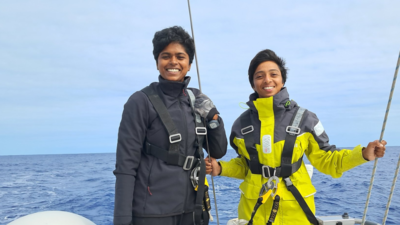
About the Author
The TOI City Desk is an indefatigable team of journalists dedicated to bringing you the pulse of cities from across the nation, all day and all night. Our mission is to curate, report, and deliver city news that matters to readers of The Times of India. With a keen focus on urban life, governance, culture, and local issues, we provide a comprehensive view of the ever-evolving cityscapes. Our team works tirelessly to keep readers informed about the latest developments, ensuring that they are connected to the heartbeat of cities across India, right when it happens. The TOI City Desk is a trusted source for staying in touch with the local stories that shape your world. Read More
Visual Stories


IMAGES
VIDEO
COMMENTS
10 Best Sailboats for Circumnavigation. 1. Jeanneau Sun Odyssey 54DS. sunrise_sail. Starting off our list with one of the strongest contenders, the Jeanneau Sun Odyssey 54DS certainly ticks the luxury box. What's impressive is just how visually striking and spacious the 54DS is.
The Fast Route - for the minimum time. The Pleasure Route - for the maximal pleasure. The Traditional Route - the road most taken. The Arctic Route - for the rough ones. The Dangerous Route - without regards for piracy. The Cheap Route - with a budget in mind. The Coast Lover's Route - never going far from the coast.
The best sailboats for circumnavigation include the Jeanneau Sun Odyssey 54DS, Neel 51, and Island Packet 349. These boats offer passengers a thoroughly enjoyable sailing experience and the reliability, efficiency, and luxury they need from a long-haul sailing vessel. Circumnavigation is all about navigating the world oceans on a dream sailing ...
Year 3: French Polynesia to Fiji, store in Fiji. Year 4: Fiji to Australia, store in Australia. Year 5: Australia to South Africa, store in SA. Year 6: SA to the Caribbean. Of course, you'd see a lot less than you would on a 6-year circumnavigation like ours, but you get it done in a fraction of the cost and less risk.
While St Lucia marked the end of the 2018-19 rally, Grenada signalled the fleet's return to the Caribbean. A full circumnavigation for most, 438 days sailing for those who'd completed it in a ...
Therefore, selecting a boat that can withstand the challenges of long-distance sailing, provide comfort during extended journeys, and ensure your safety in varying conditions is crucial. Key features to consider Size and stability. One of the fundamental aspects to consider when choosing a circumnavigation boat is its size and stability.
Enso's owners jumped into a circumnavigation with both feet, setting off immediately after taking delivery of their new 25 metre Oyster 825. You could say their shakedown cruise was the Oyster World Rally. For the wife, it was a jump into the deep end as her previous sailing experience amounted to a week in Sardinia.
There's something about sailing around the world that captures the imagination and inspires. For some, it's the reason for learning to sail in the first place. Others only start to think about global circumnavigation as their skills and experience grow. Regardless of what motivates you to circumnavigate, one thing remains true.
CIRCUMNAVIGATIONS. A Nordhavn 40 holds the world record for the fastest circumnavigation by a production power boat of any size. Salvation II is the first production power boat ever to circumnavigate the globe. Ghanim al-Othman, on board Othmani was the first Arab to circumnavigate. Othmani completed the circumnavigation with paravanes only.
Ever dreamed of sailing around the world? Set sail on the journey of a lifetime on the 2022 Oyster World Rally, our third supported circumnavigation rally. Yachts Charter Brokerage Ownership Rally Live. Oyster World Rally. An enriching circumnavigation of discovery, of magnificent experiences and exhilarating ocean crossings ...
Here are some of the boats that were suggested from our readers: Mariner 36, Cal 34, Morgan 43, Swan 43, Bermuda 40, Island Packet 26, Mariner 47, LeComte Northeast 38, Westsail 32, Dana 24, J/35, and the CSY 44. Id be interested in hearing of other nominees for this list, or other good resources for sailors looking for a short list of good ...
The safest cruising catamarans offer a good beam to length ratio, sail fast, and are over 42ft. These include the Manta 42, the Lagoon 450F, and the Catana 44. They are stable, waterproof, easy to handle in stormy weather, and feature a sturdy design. When boarding a boat, you expect to get to your destination safely, and with your bluewater ...
Vancouver 28. Photo credit: YachtFathom.co.uk. A sensible small boat with a "go-anywhere" attitude, this pocket cruiser was designed with ocean sailors in mind. One of the best cruising sailboats under 40 feet, the Vancouver 28 is great sailing in a small package. Hull Type:Full keel with transom hung rudder.
Now 81-year-old Australian Bill Hatfield is winding down yet another epic circumnavigation—westabout from Queensland, Australia, solo, nonstop and unassisted, against the prevailing winds and currents. At press time, sailing his Northshore 38, L'Eau Commotion, Hatfield was expected to make landfall at Southport, Queensland in mid-February.
Jeanneau Sun Odyssey 49. For a boat focused on the needs of the lucrative charter market, the Sun Odyssey 49 has proved a remarkably adept bluewater cruiser. A large cockpit, easily managed sailplan and fine all-round performance obviously have something to do with this; cool features like a dedicated sail locker in the bow and a large nav station belowdecks don't hurt either.
Typically, a sailboat with a length of 35 to 45 feet is suitable for circumnavigation, as it provides adequate space for living onboard and carrying the necessary supplies, without being too challenging when sailing. Secondly, the build of the sailboat should be considered. A circumnavigating sailboat should be built for strength, durability ...
One of the most common downfalls of the Hans 38-T is electrical problems, so be sure to get the wiring checked out by a professional. Outside of electrical issues, this boat is a proven winner in the cruising world. Prices start around $70,000 but expect to pay well over $100,000 for the more admirable models.
The circumnavigation started on 10 August 1519 and was finished on 8 September 1522. The ship that first sailed around the world was called Victoria. Circumnavigation in Modern Days. Circumnavigation nowadays doesn't take nearly as long as the first circumnavigations did. People can nowadays sail around the world in a year or a year and a half.
The carbon hulls minimize weight, this makes for a lightweight ocean exploration sailboat with blistering speeds. One of its selling points is that this trimaran has previously been used for Arctic expeditions, possibly marking it as one of the better options for circumnavigation and offshore sailing in the northern waters.
The best catamarans for sailing around the world include: Lagoon 42. The Fountaine Pajot Ipanema 58. Manta 42. Catana 50. Dolphin 42. Gunboat 62. These cats focus on speed, safety, and comfort for longer journeys. This article will show you the seventeen best catamarans for long journeys, and why they're the best.
The 57 cruising mariners who participated sail vessels measuring 33 to 74 feet in length and fashioned from plywood, fiberglass, aluminum, and steel. Among the group, 27 had sailed around the world, several of them more than once. Their ages ranged from the late 20s to the early 80s, while their cruising spanned the entire world, from the ...
The first person to circumnavigate solo without stopping took 313 days. And really, you want to stop. Also, there is no best type of sailboat for circumnavigation. Every boat is going to have compromises. You can do it like the Pardeys in a small sailboat without an engine, or you can do it in a large boat with all the conforms you can cram in.
For almost 20 years, we've called this awards program SAIL Best Boats, but this year, we're refining and renaming this program to better and more fairly represent the boats we've selected. Restricting boats to categories and labels—such as Best Cruising Monohull 30-40 feet and Best Performance Monohull 40-50 feet—doesn't bring our readers the full picture.
9- to 14-day Circle Japan Voyages circumnavigate the island of Japan, with stops including Nagasaki, Kanazawa and Maizuru (for Kyoto). 9-day Southern Islands itineraries call to Okinawa, Ishigaki in Japan, along with Taipei (Keelung) and Hualien on the island of Taiwan. ... Princess Cruises is The Love Boat, the world's most iconic cruise ...
The Navika Sagar Parikrama II is the second edition of India's women-led global circumnavigation, following the successful journey of the first Navika Sagar Parikrama in 2017-18.
They will undertake this circumnavigation on the Indian naval sailing vessel (INSV) Tarini, as confirmed by Navy spokesperson Commander Vivek Madhwal on Sunday.